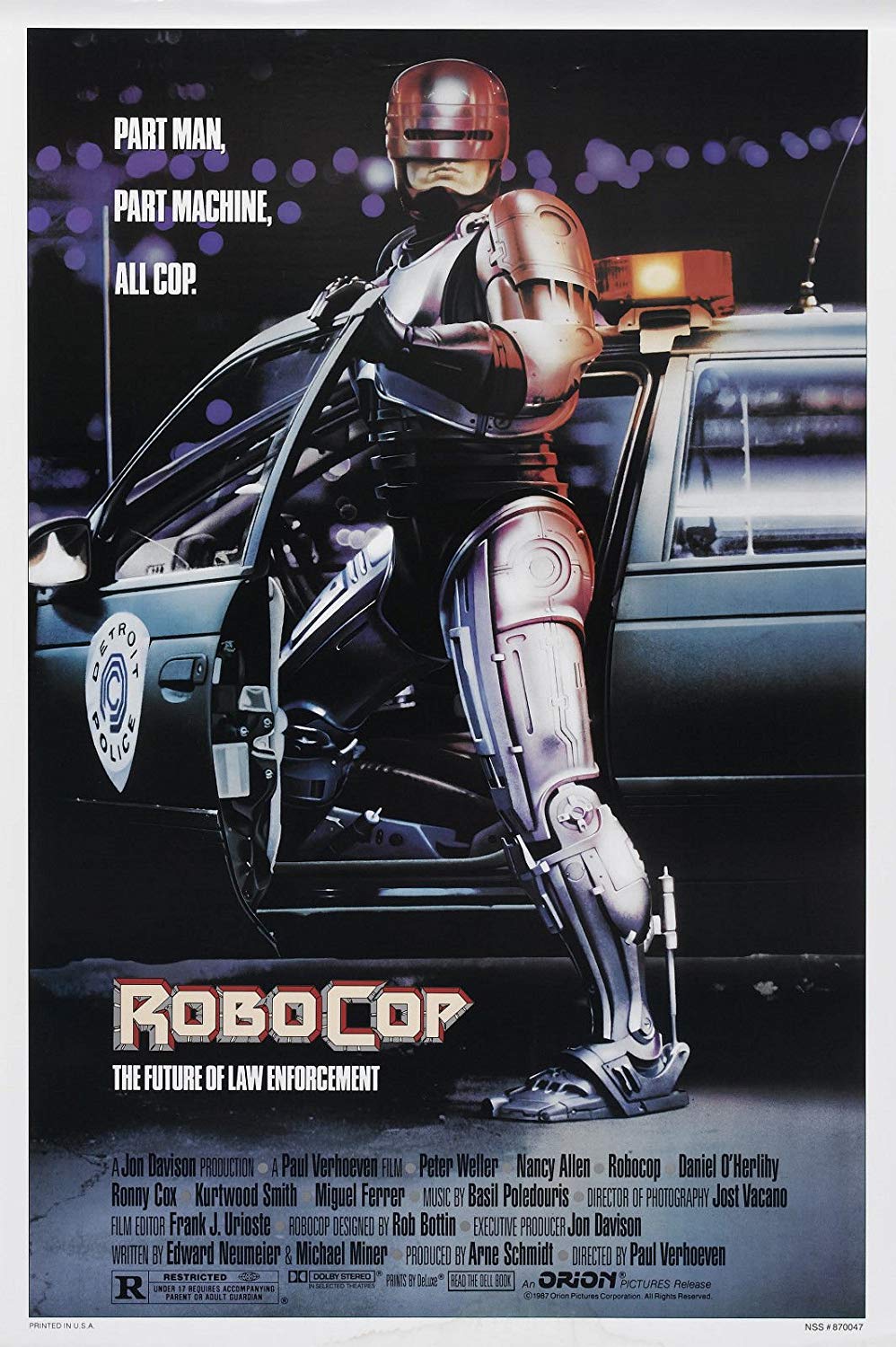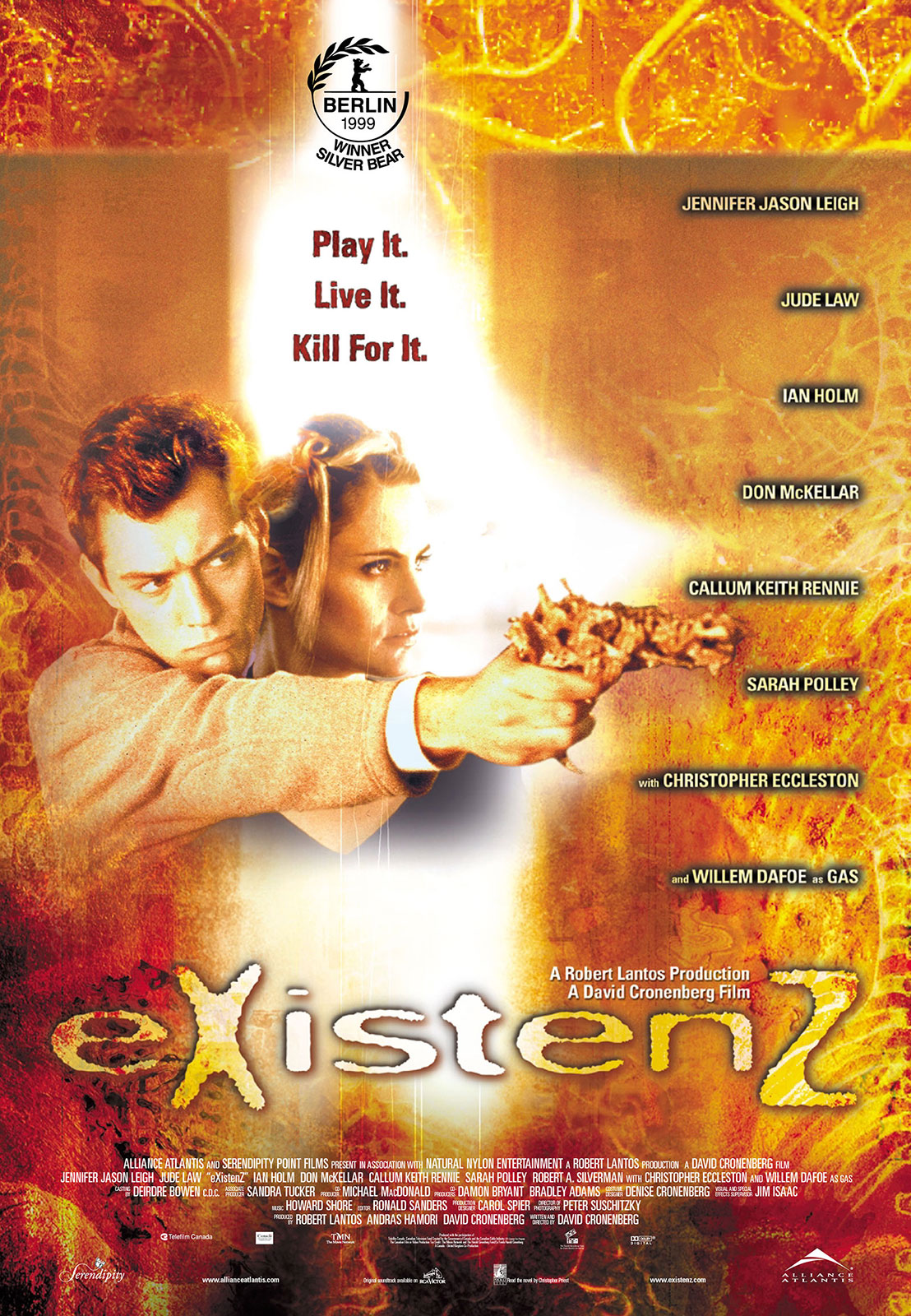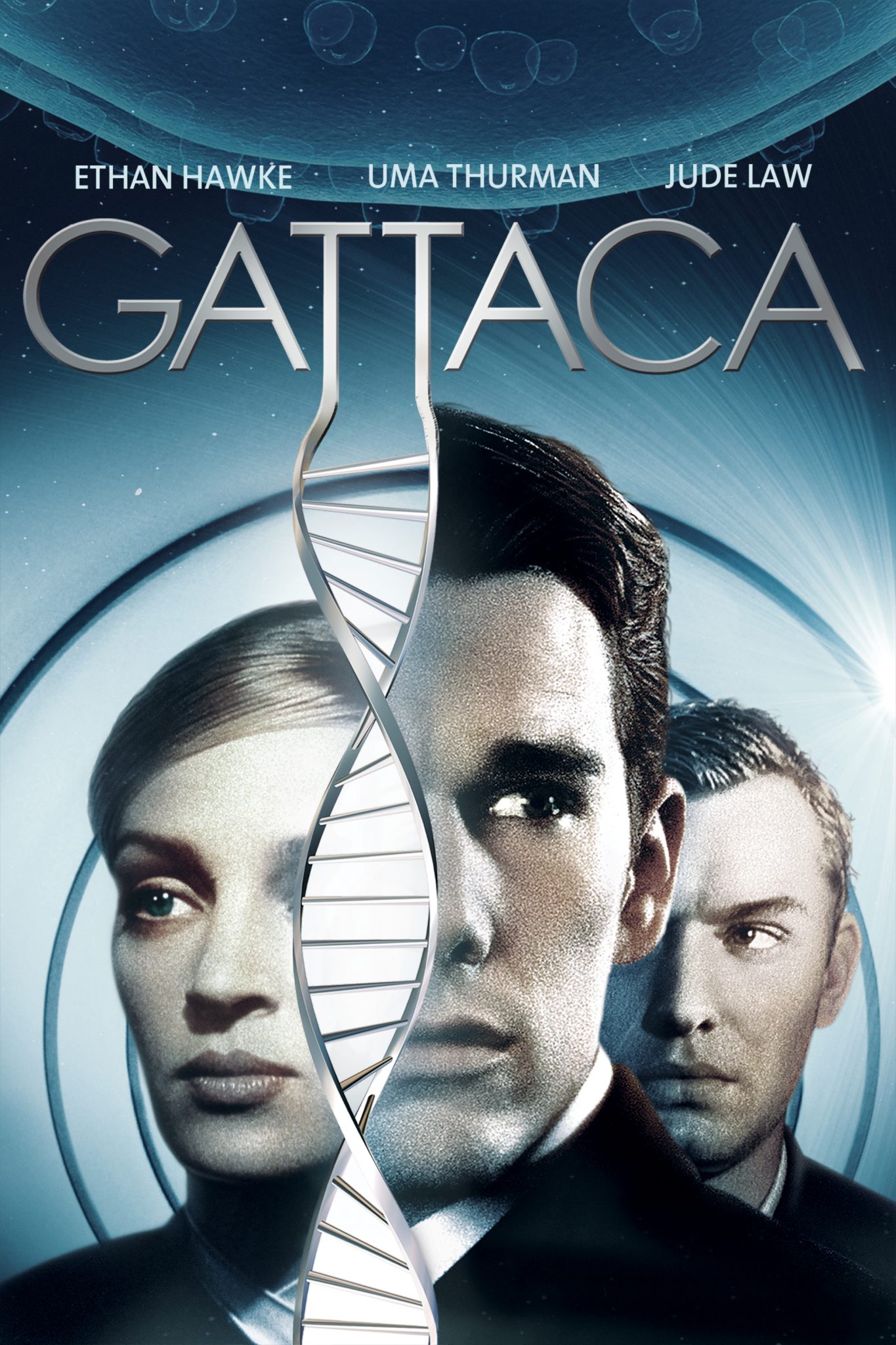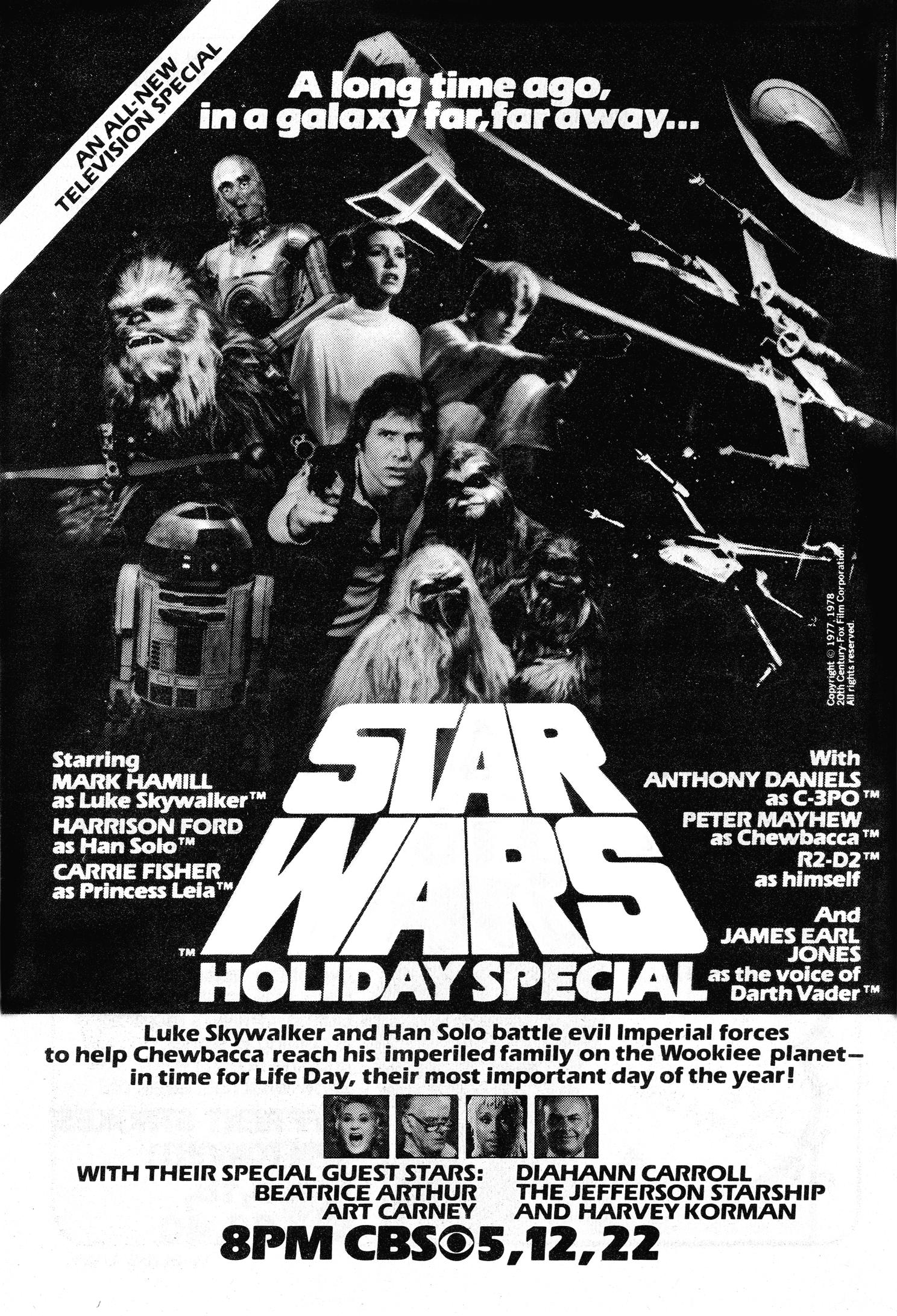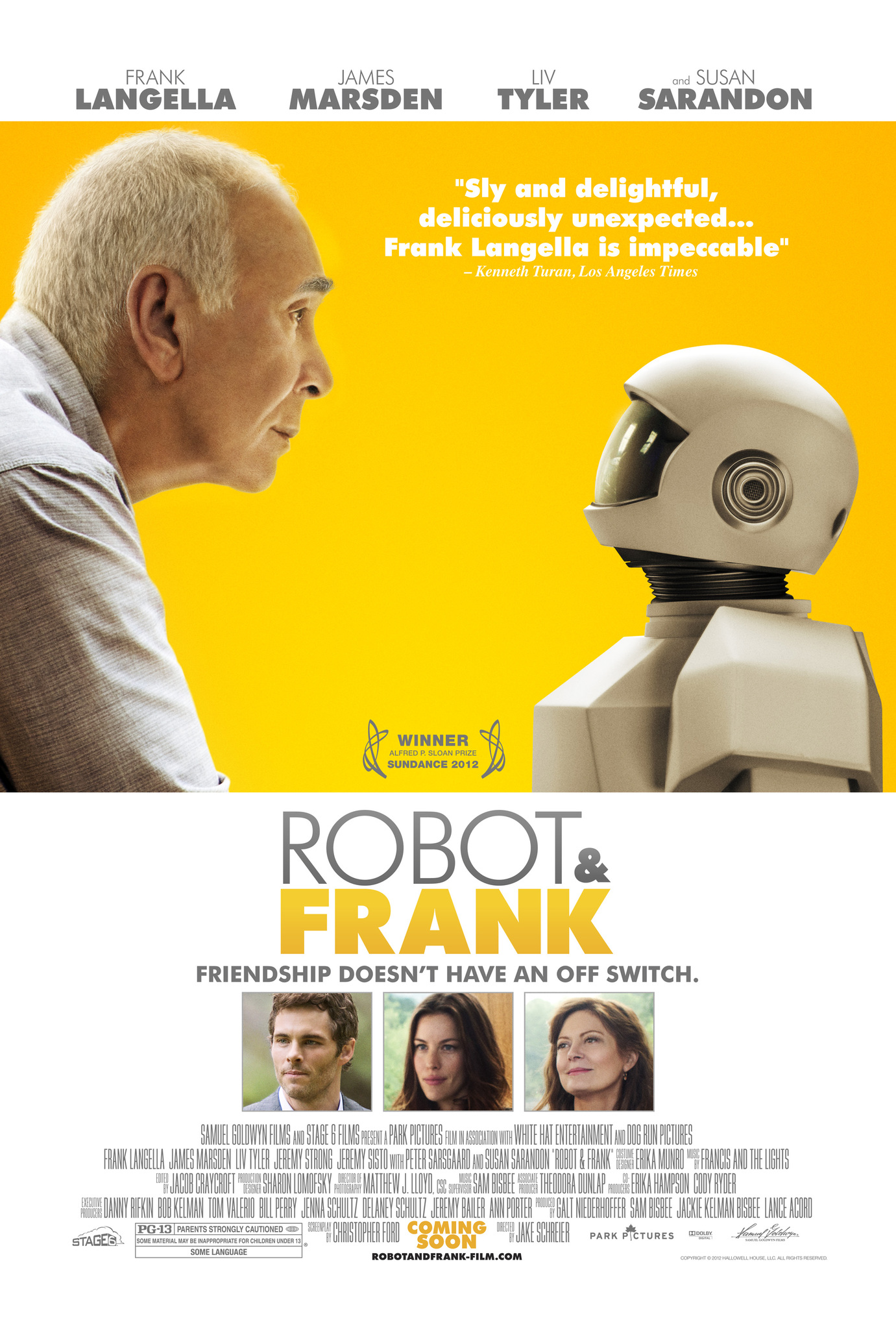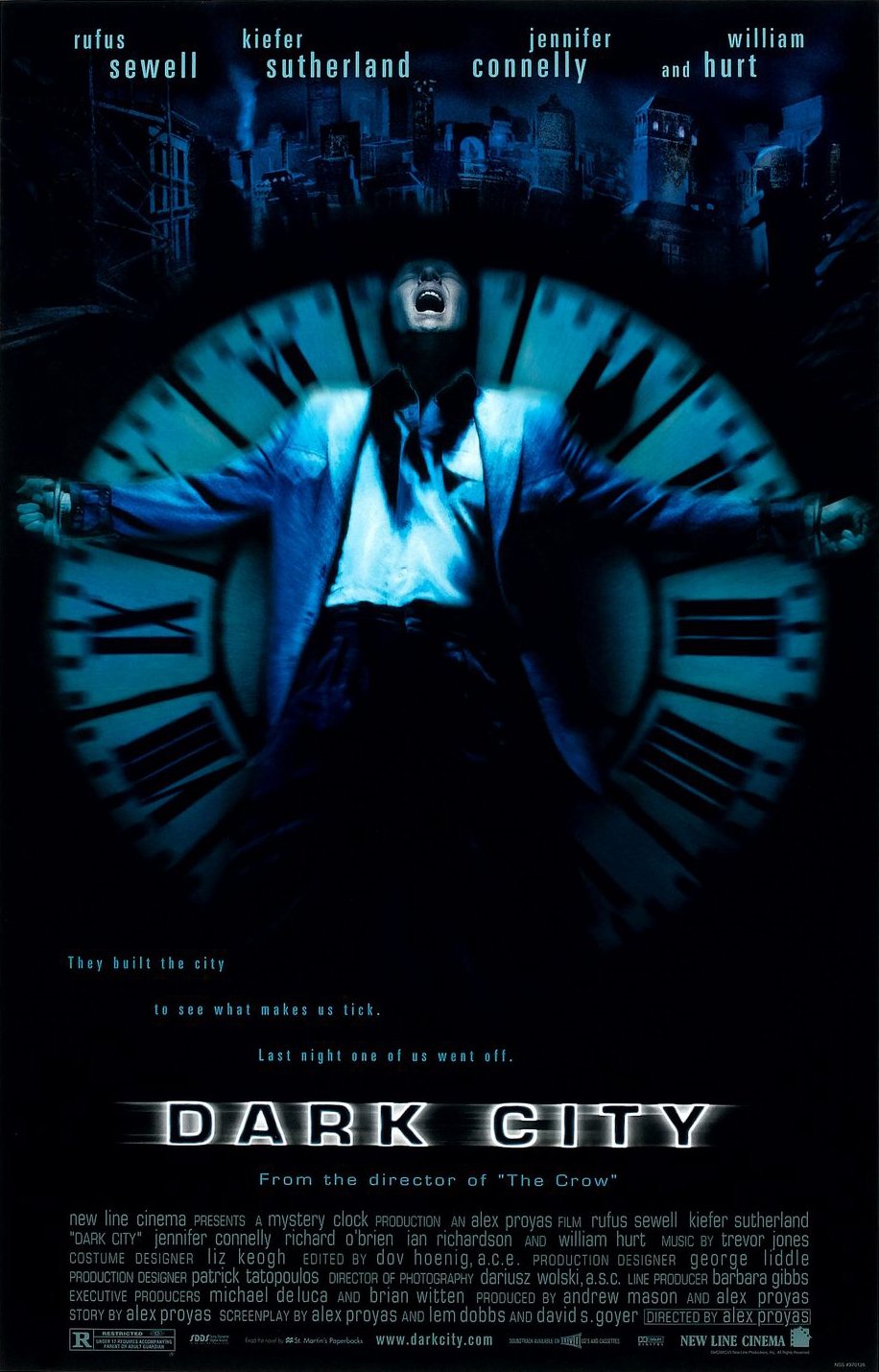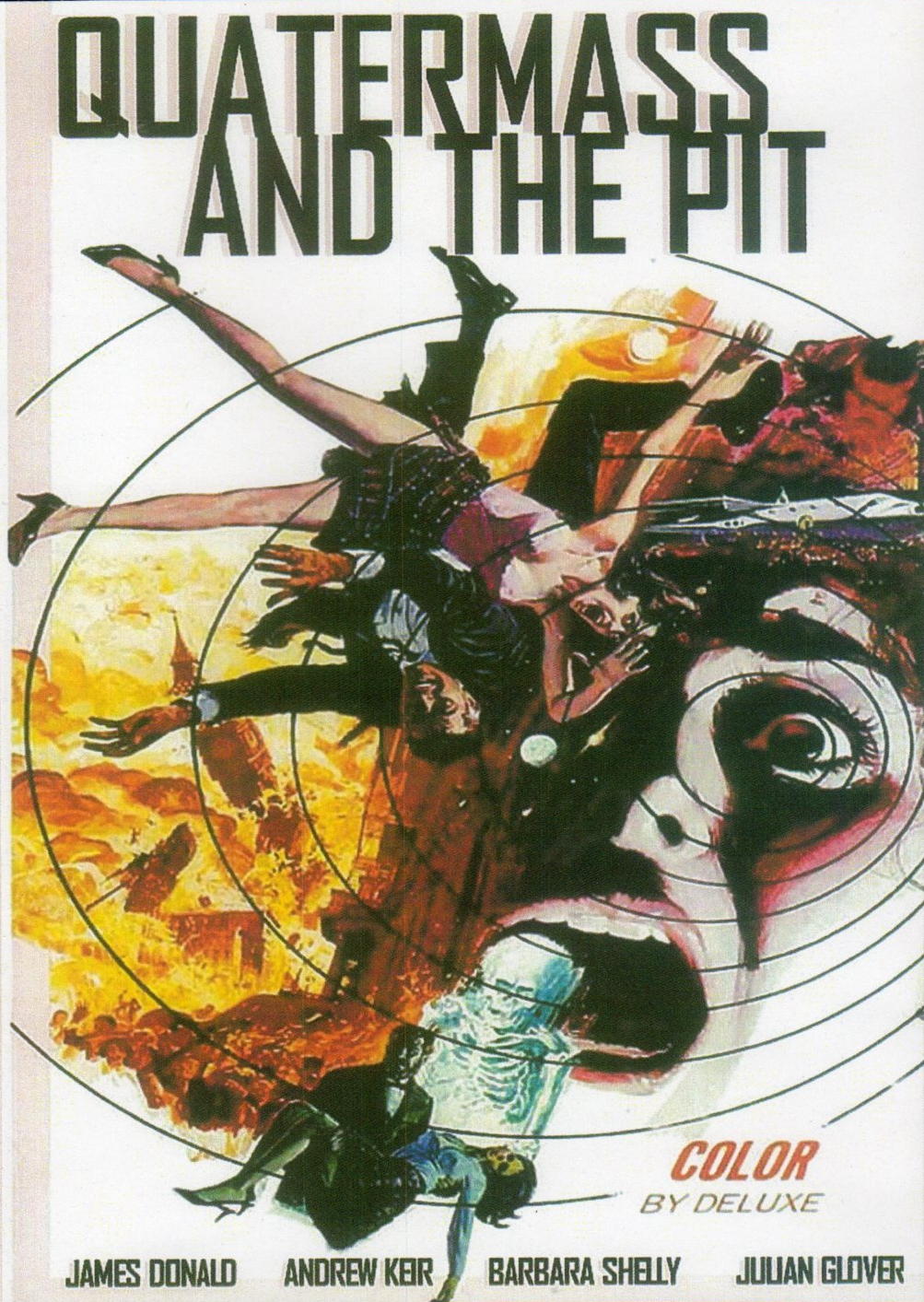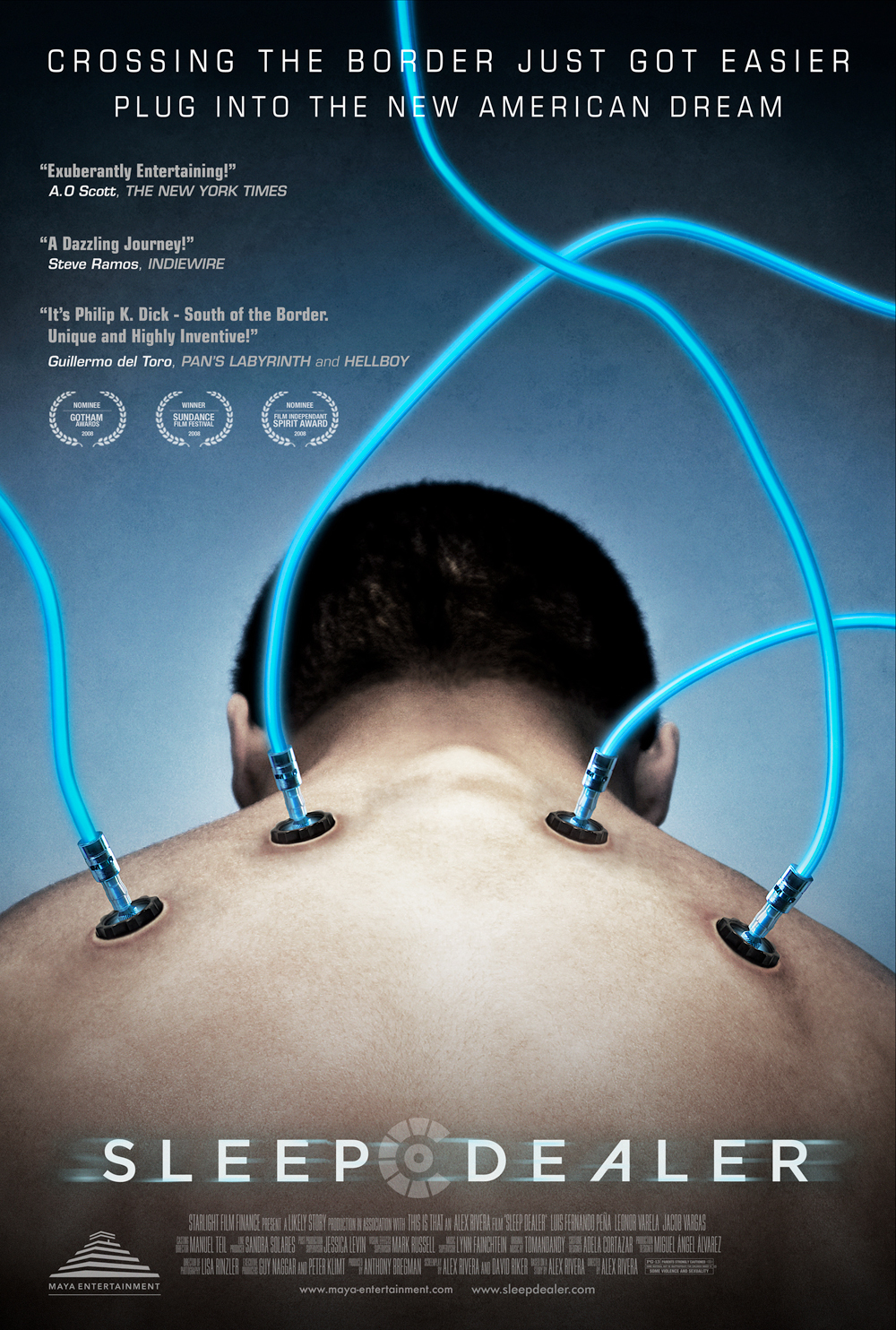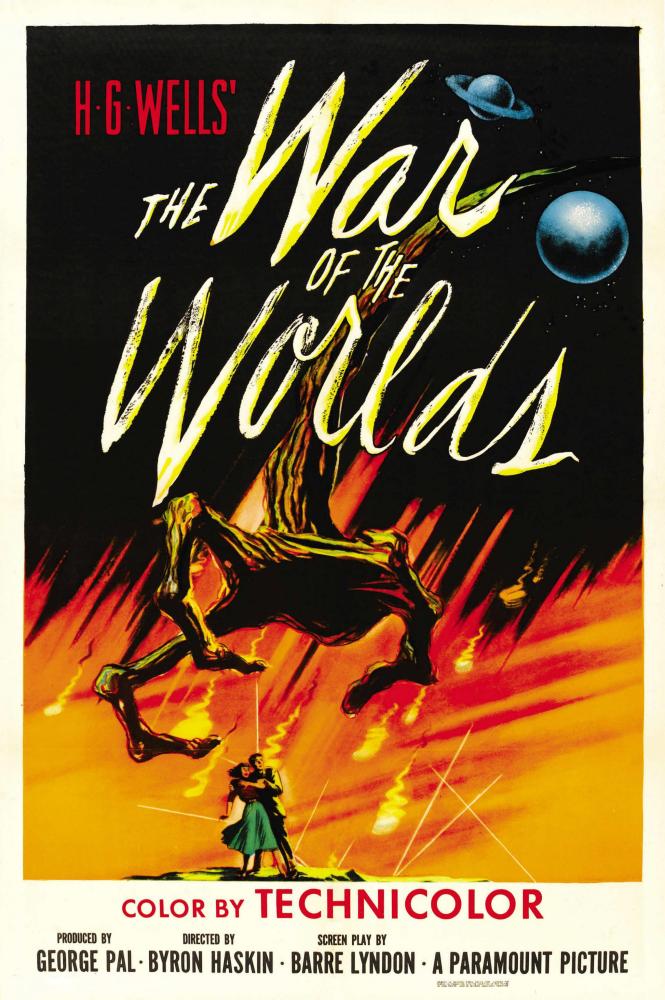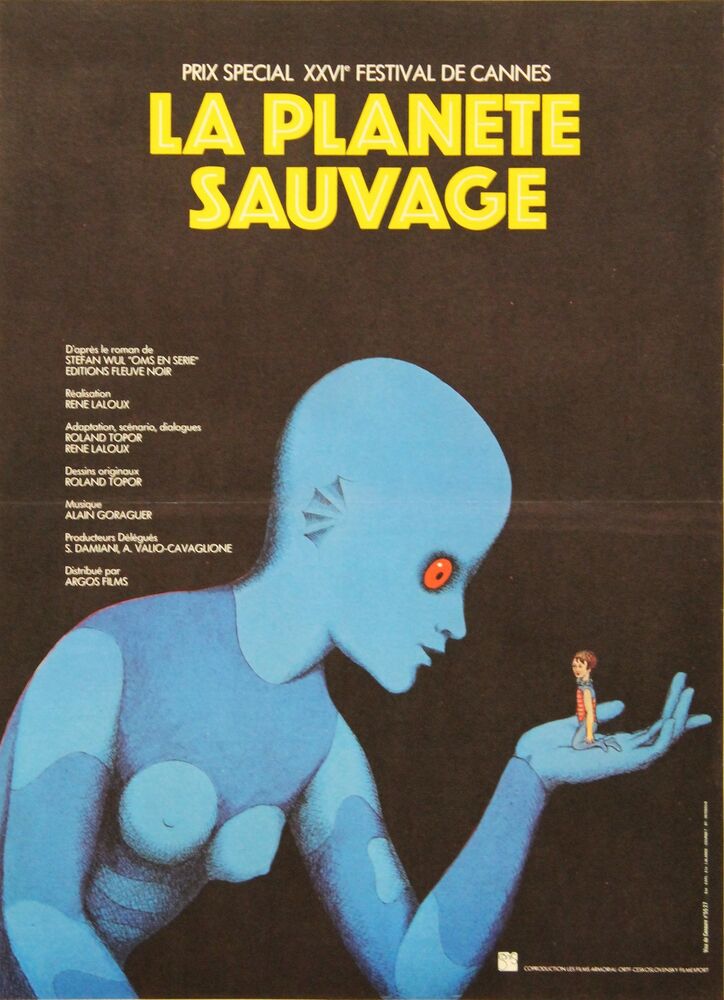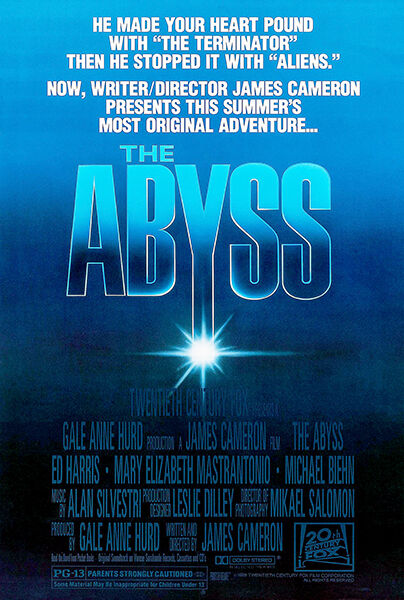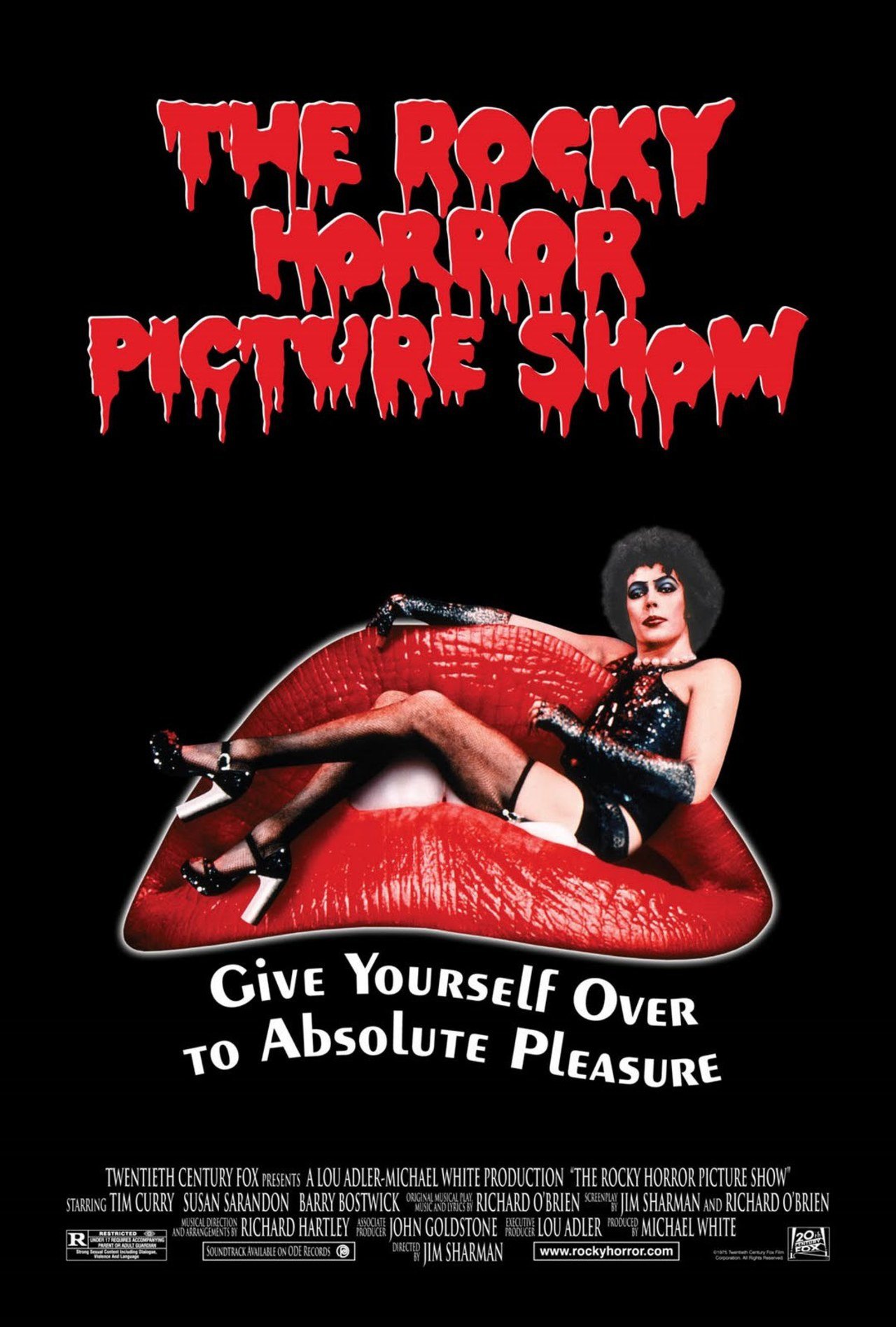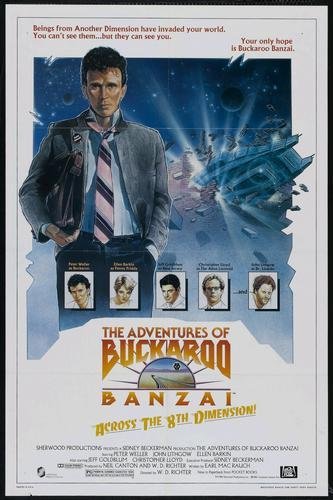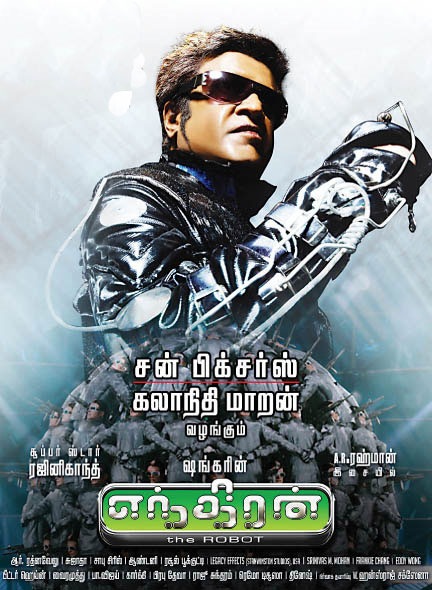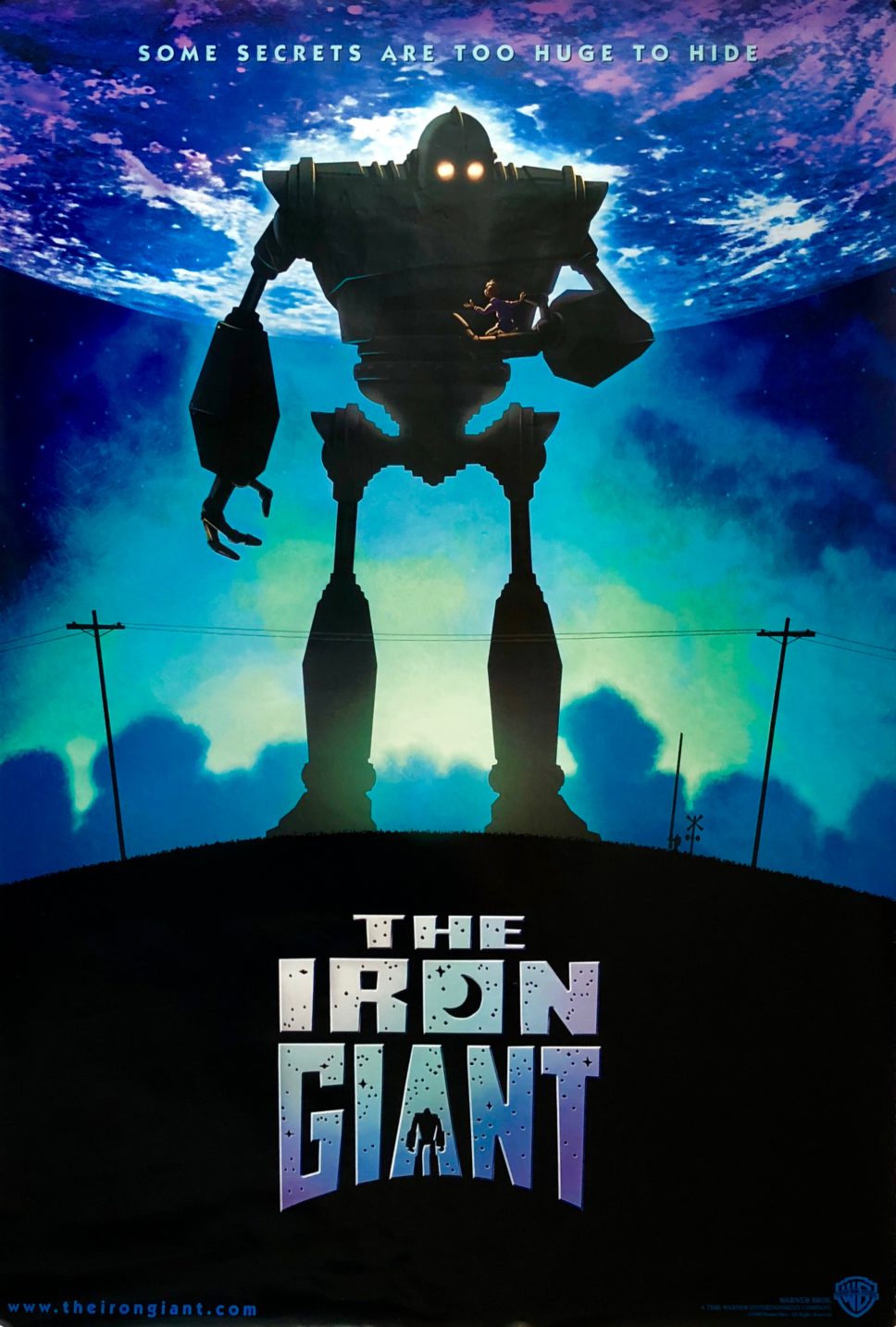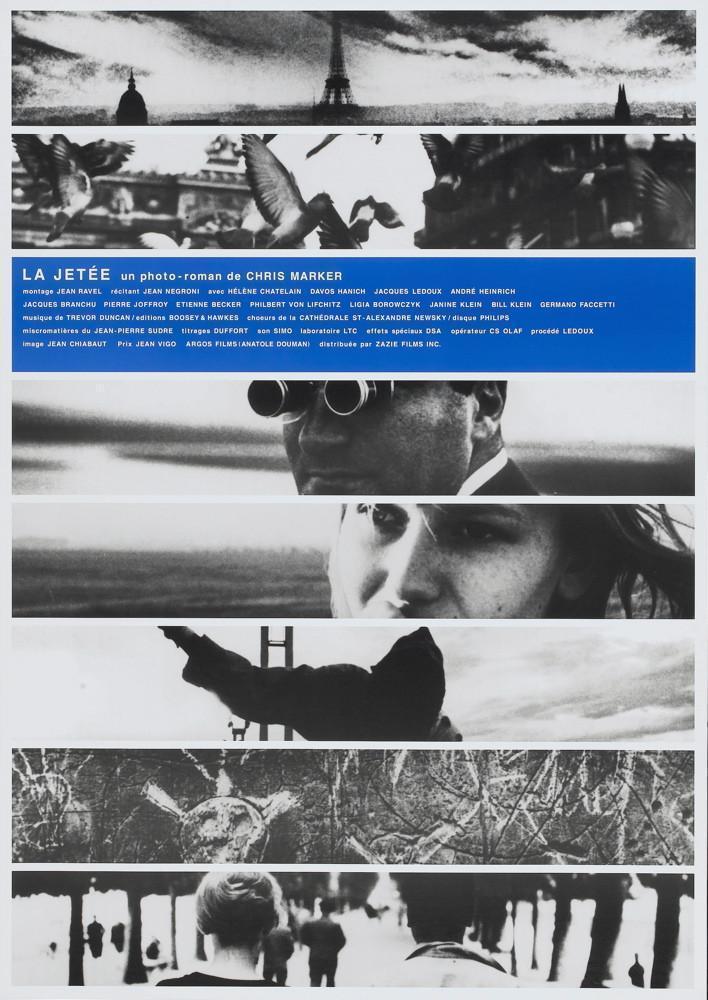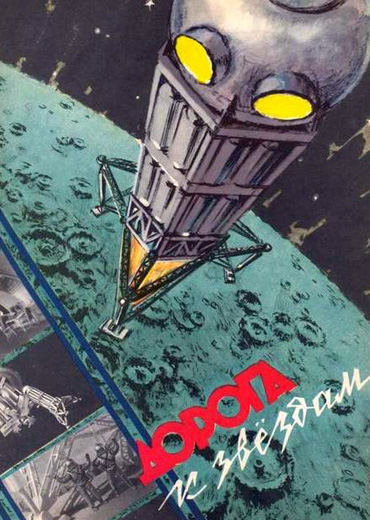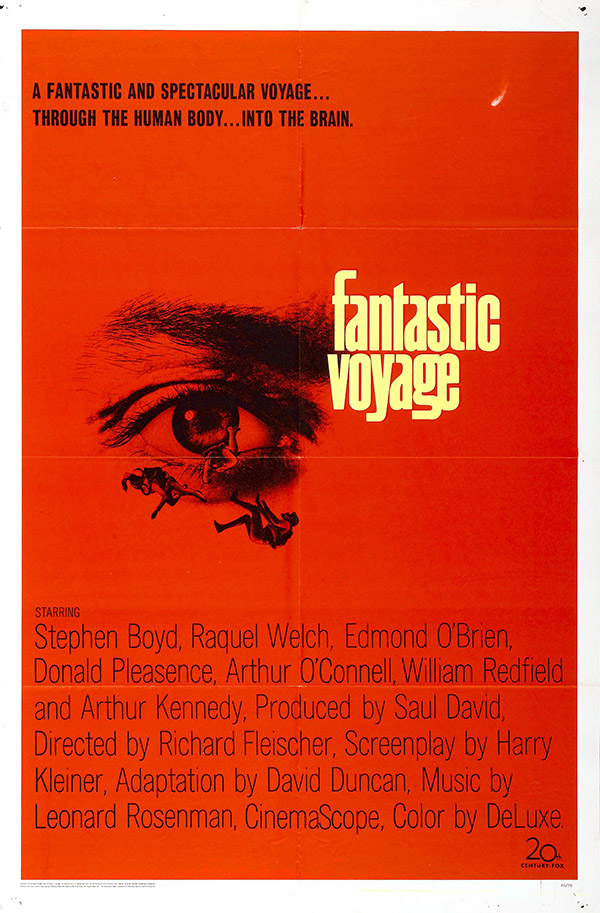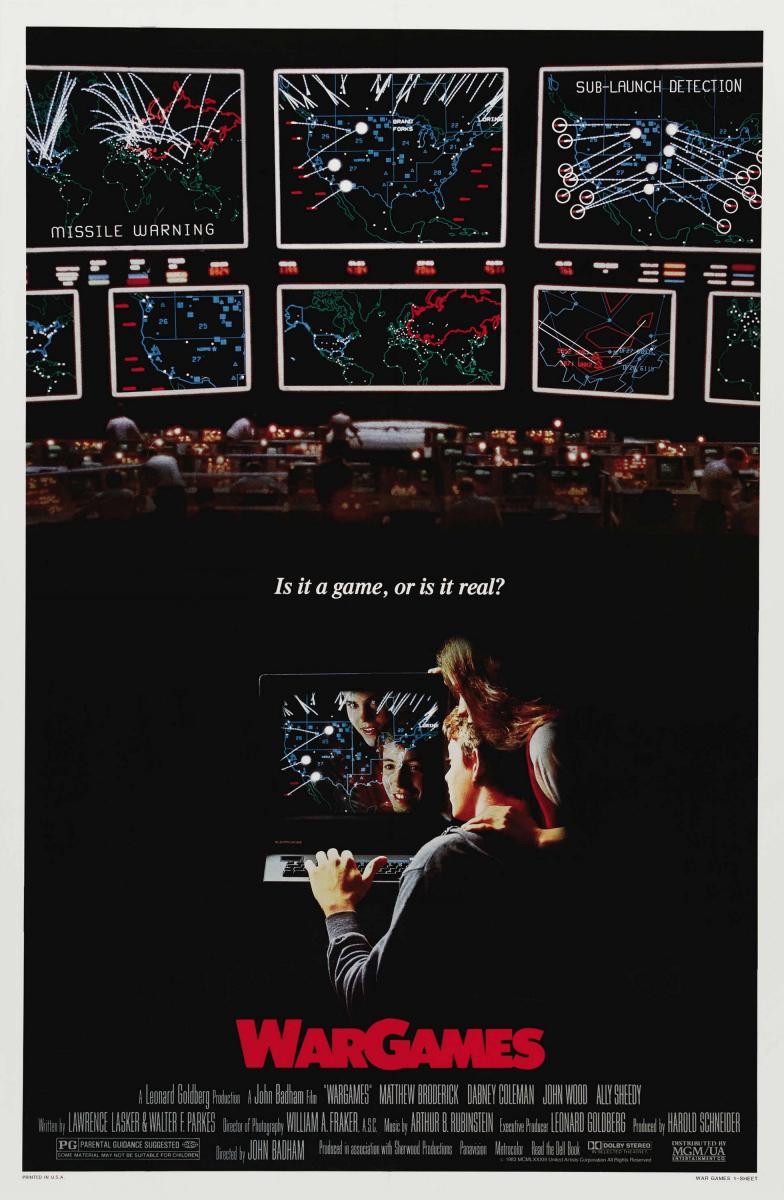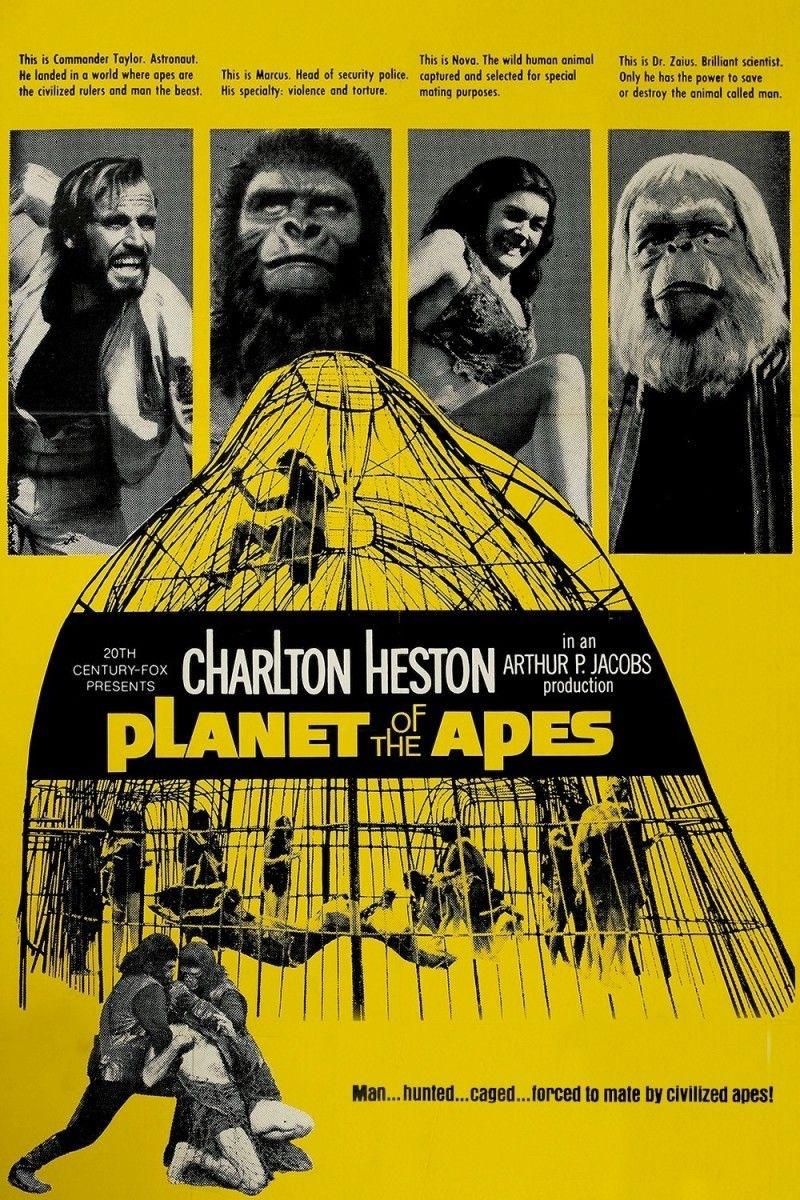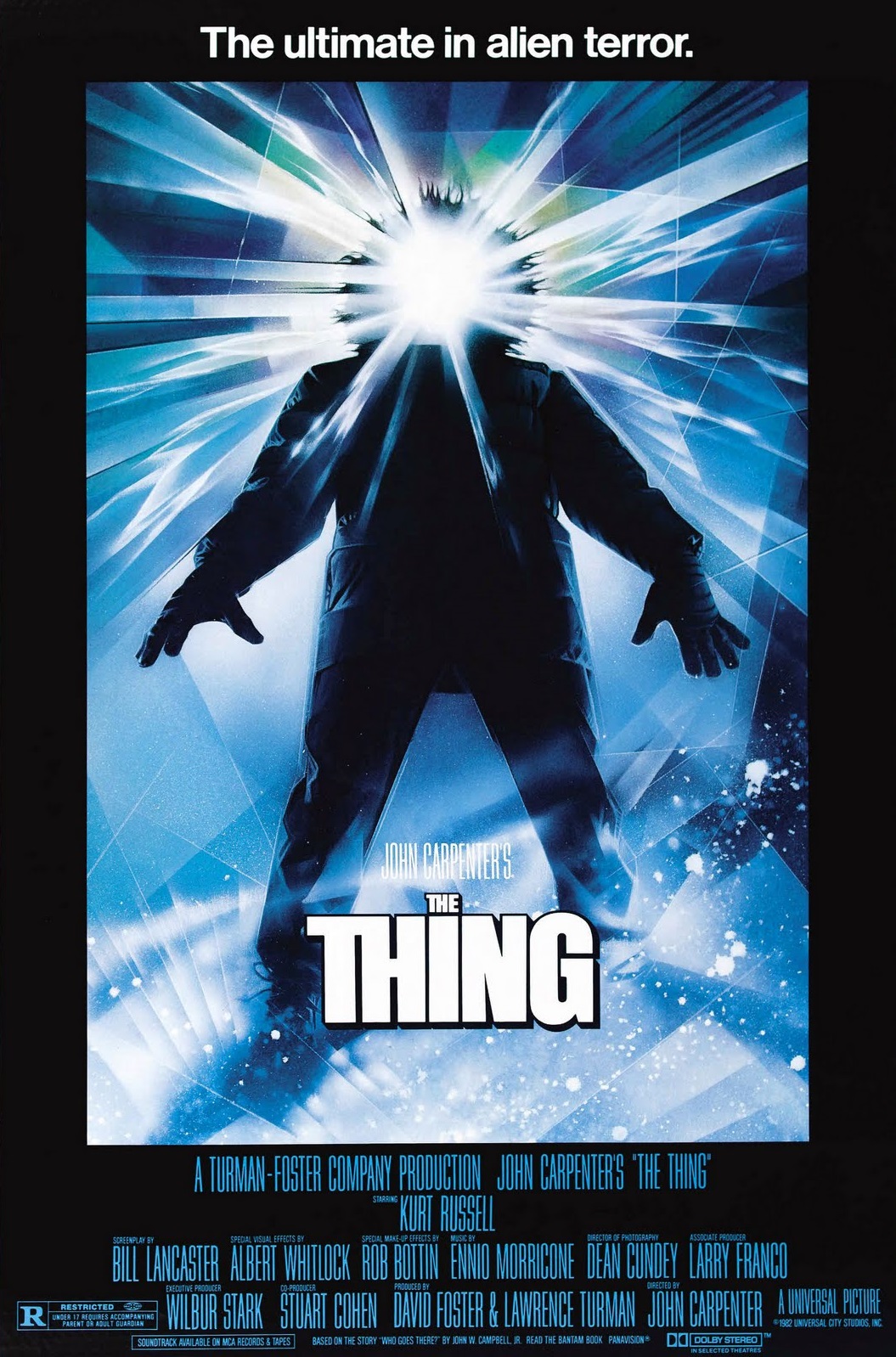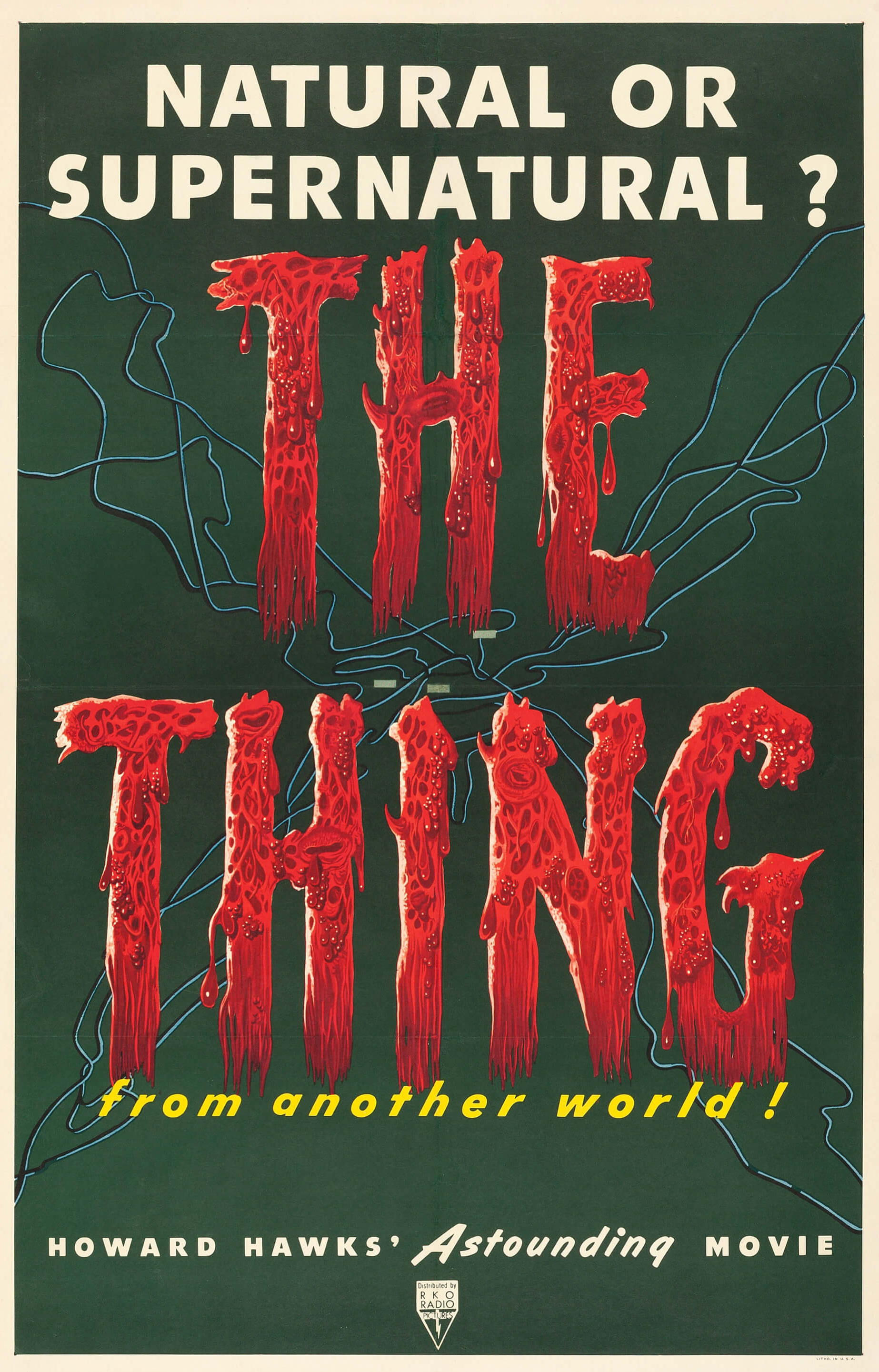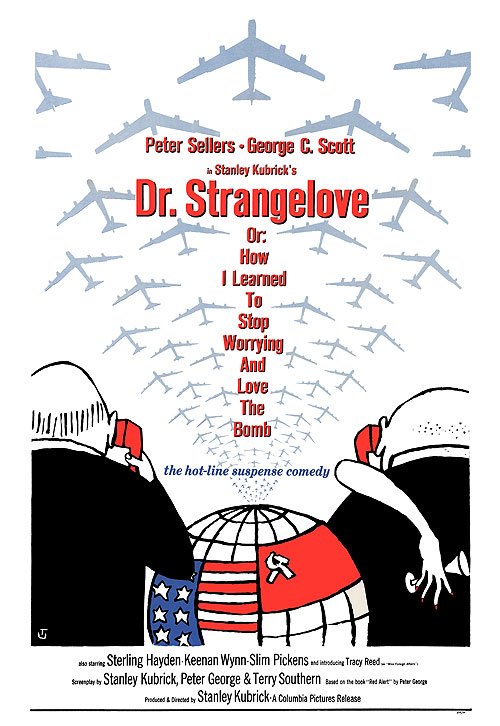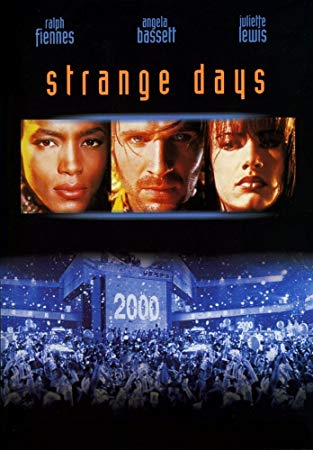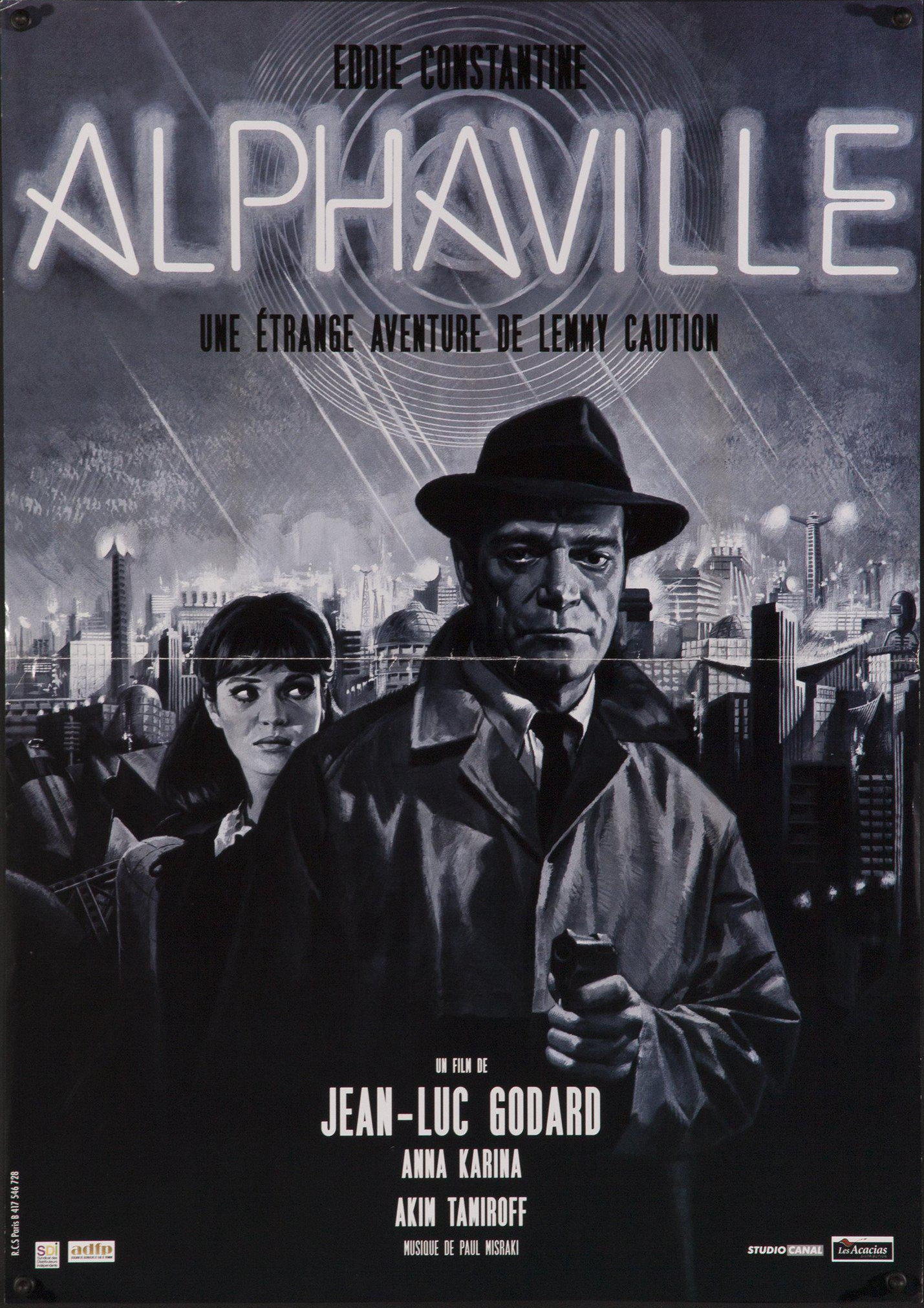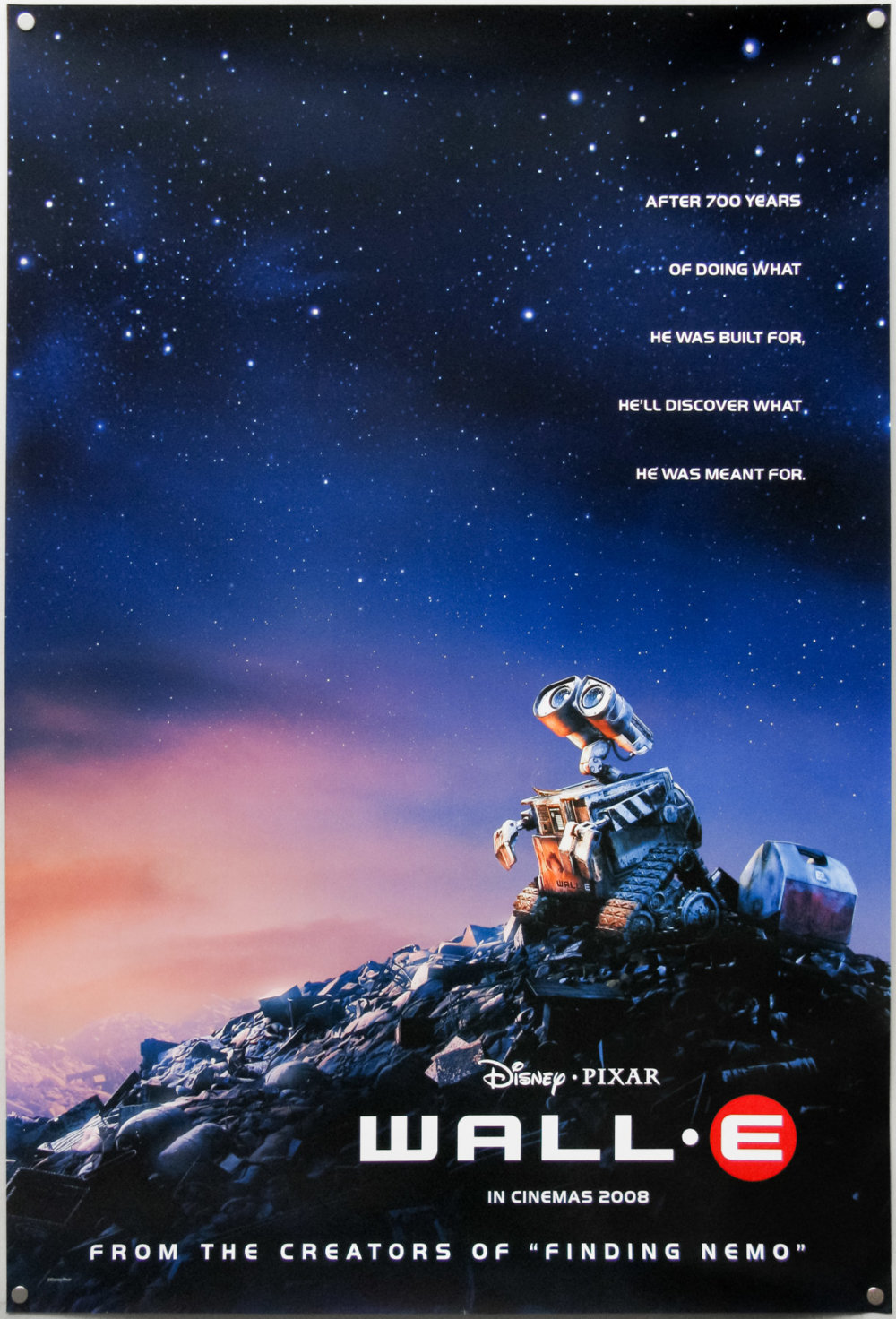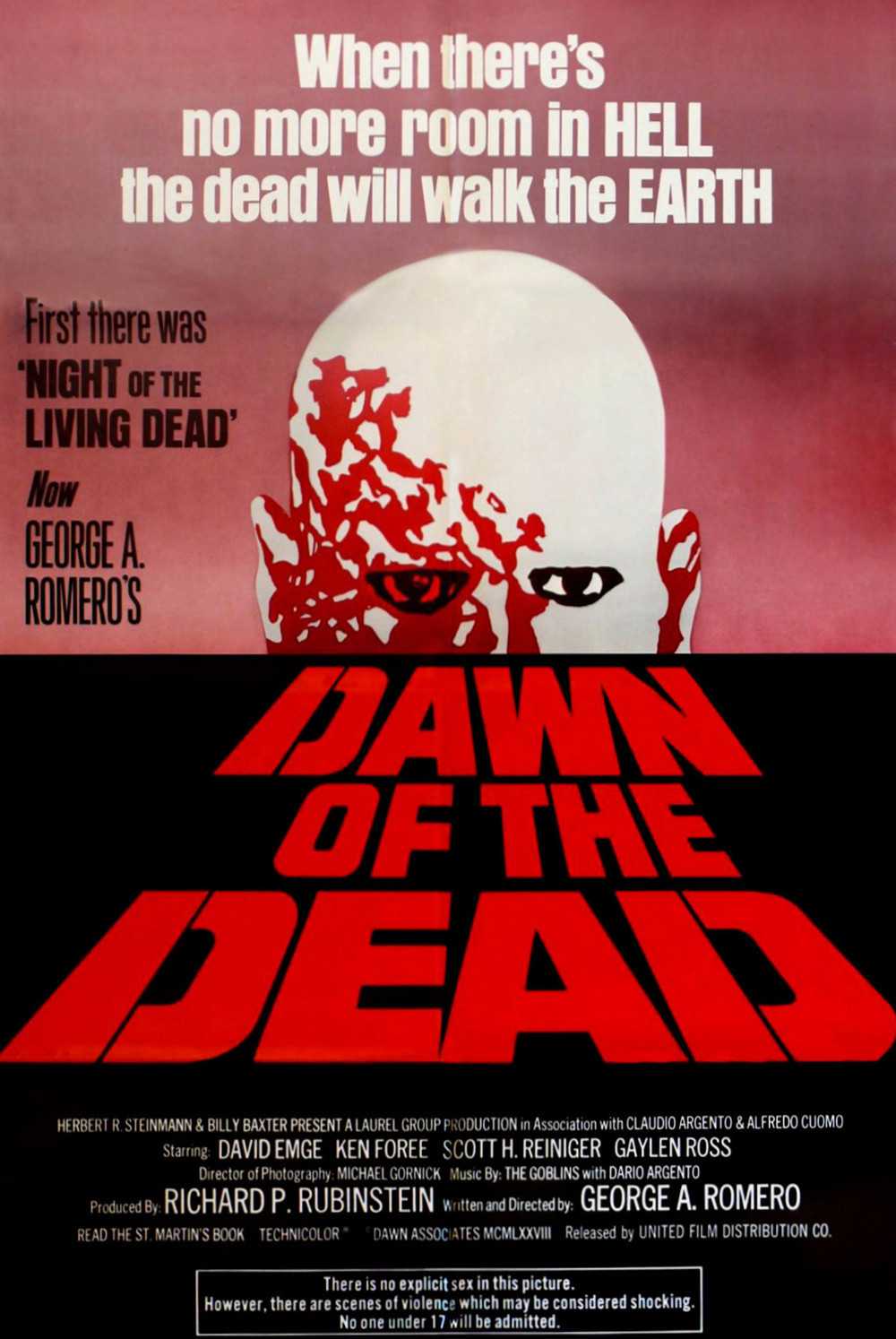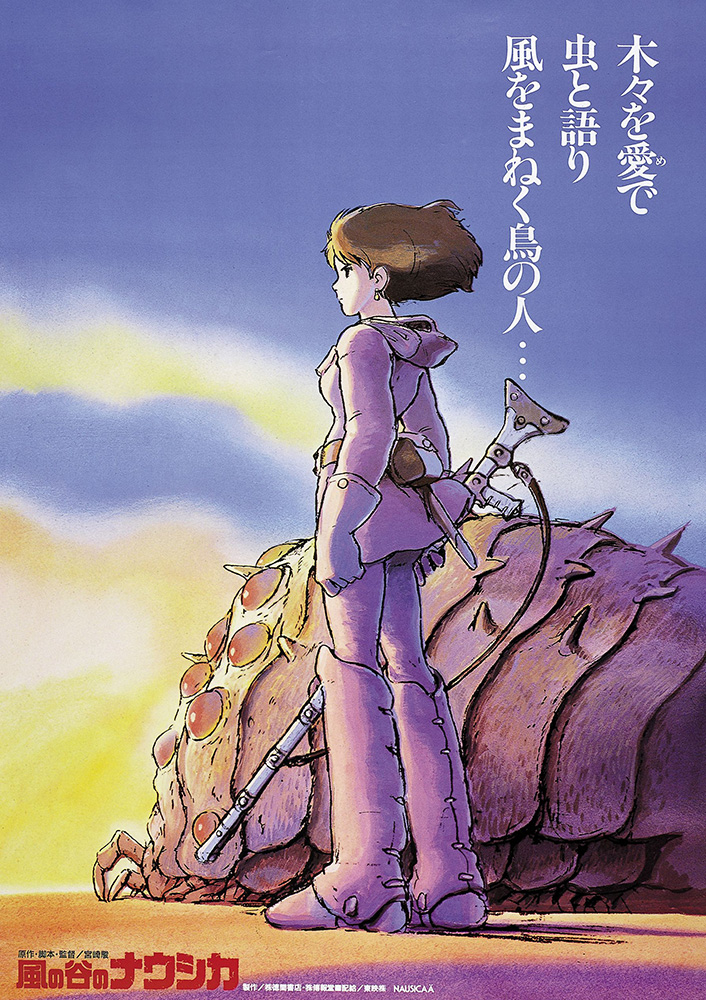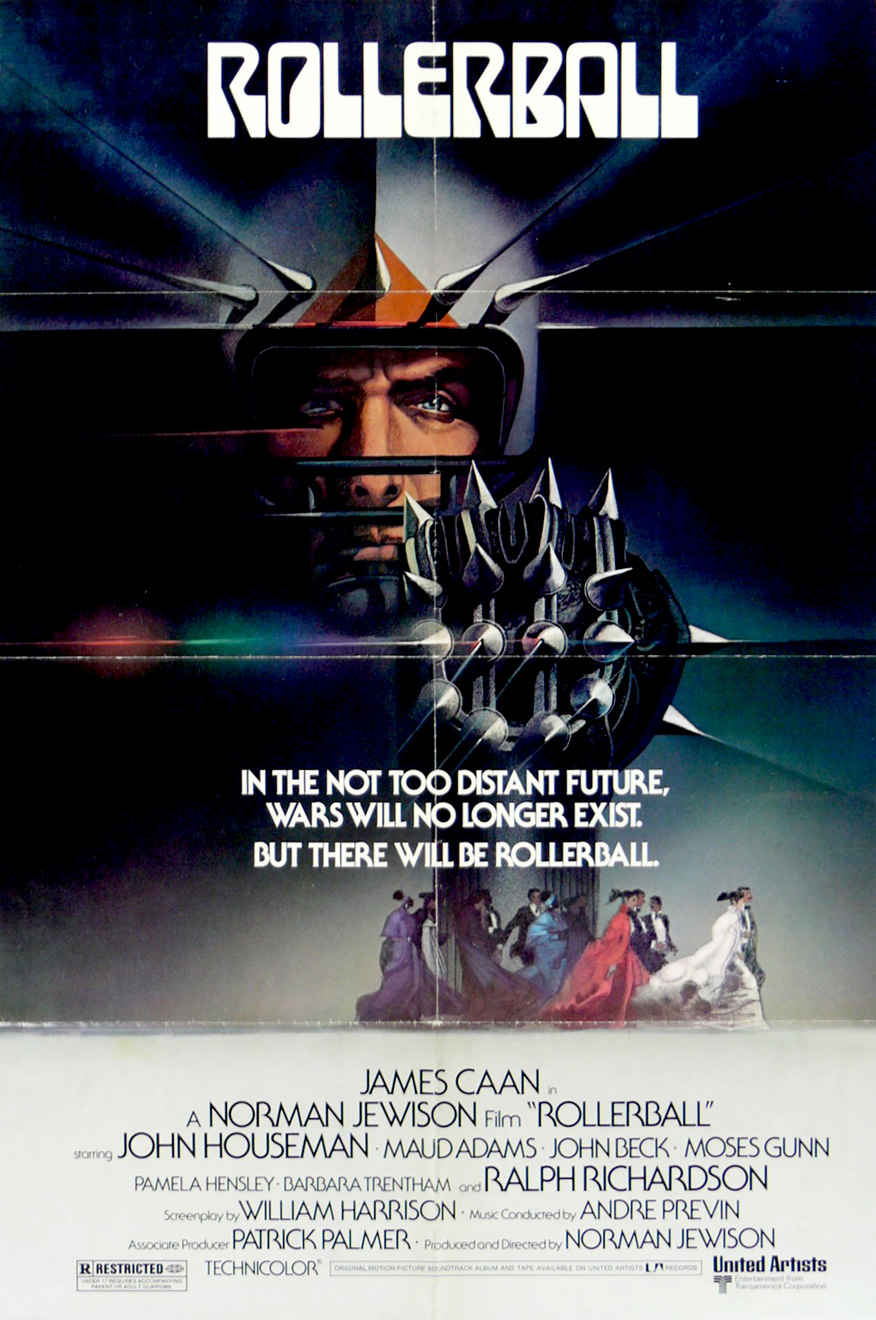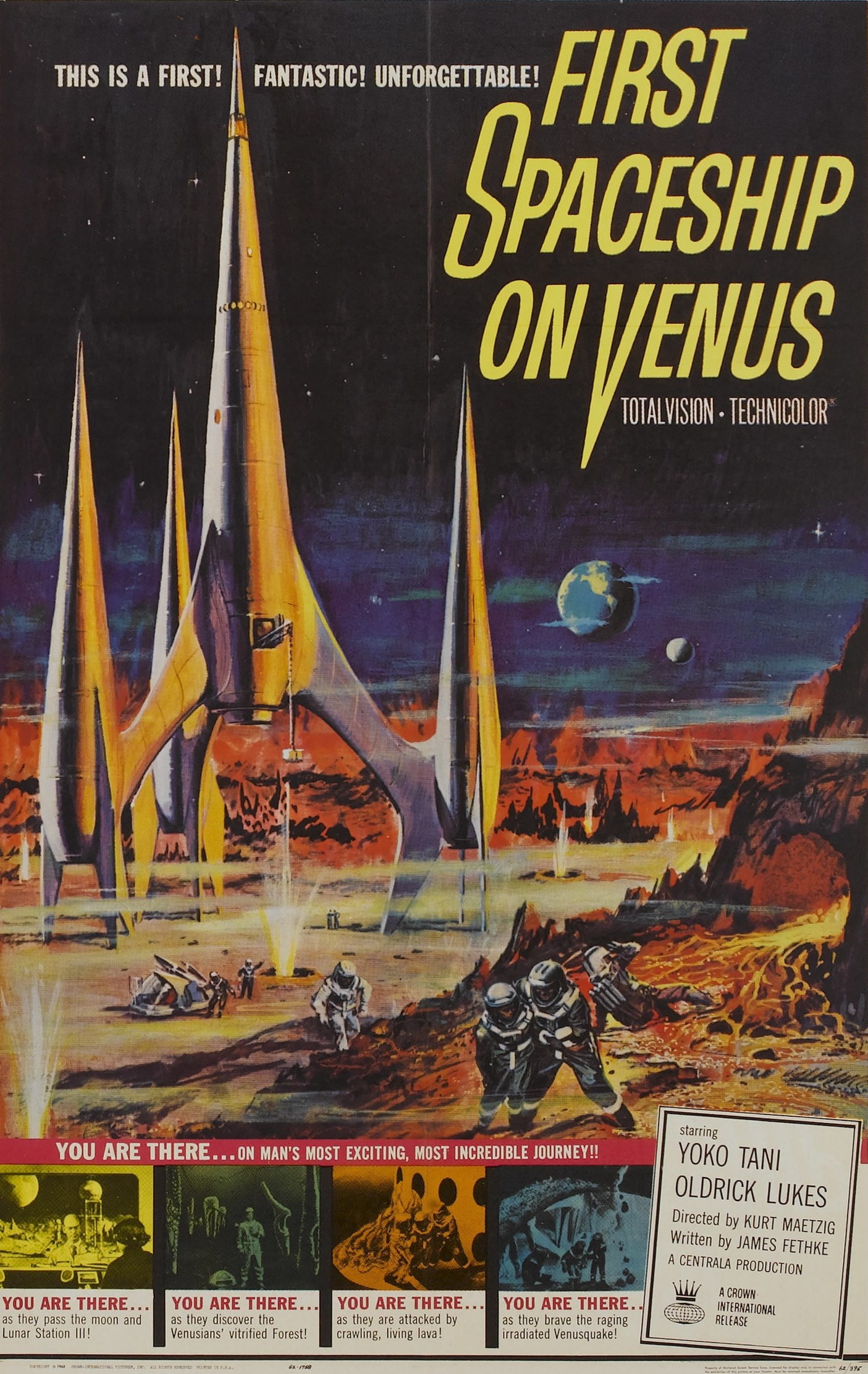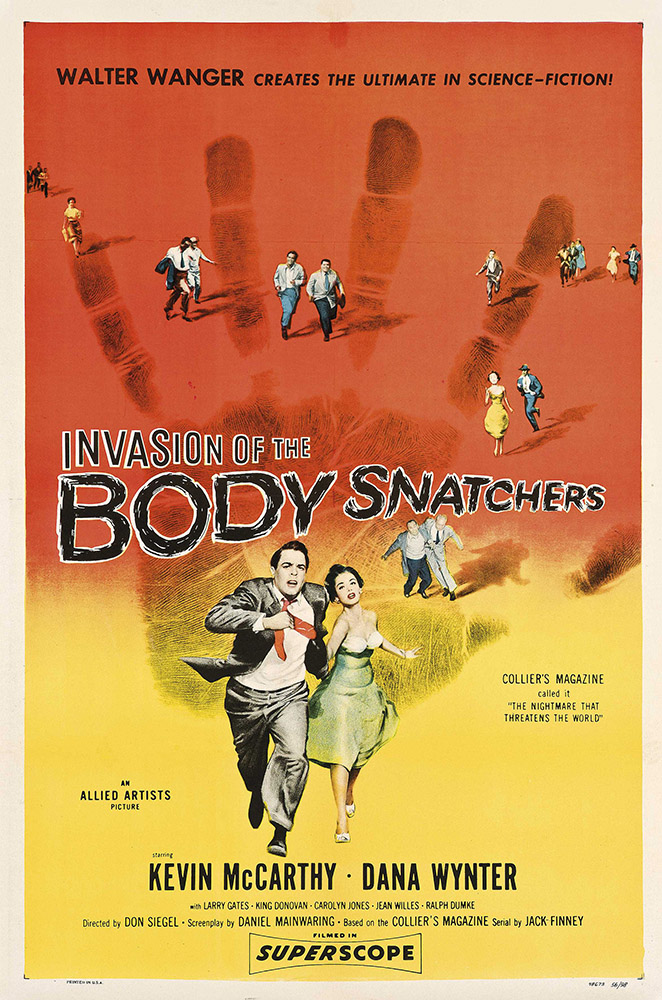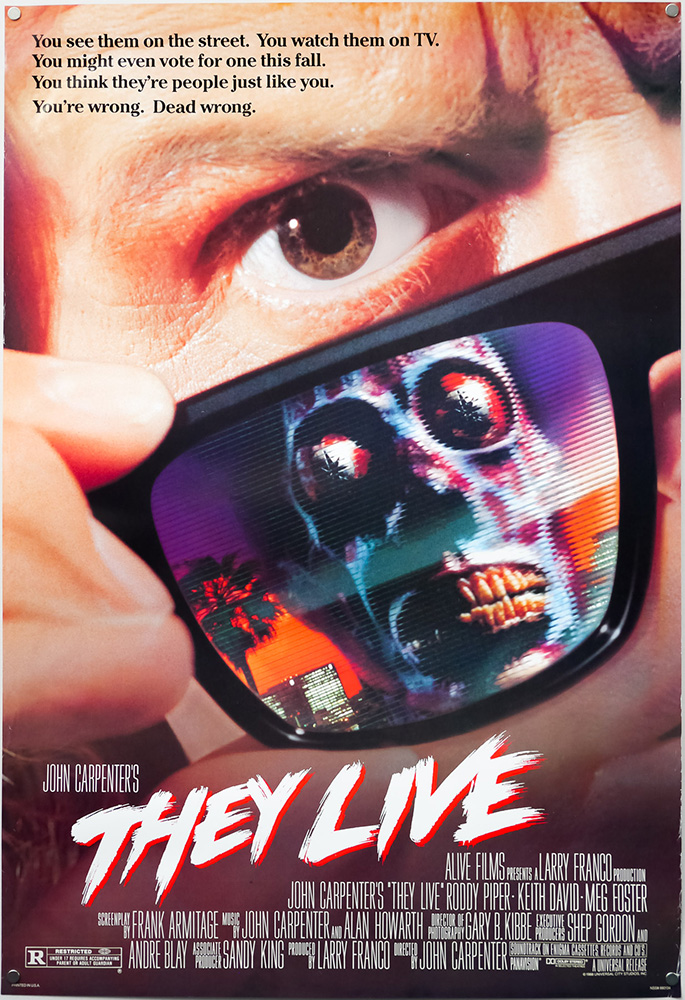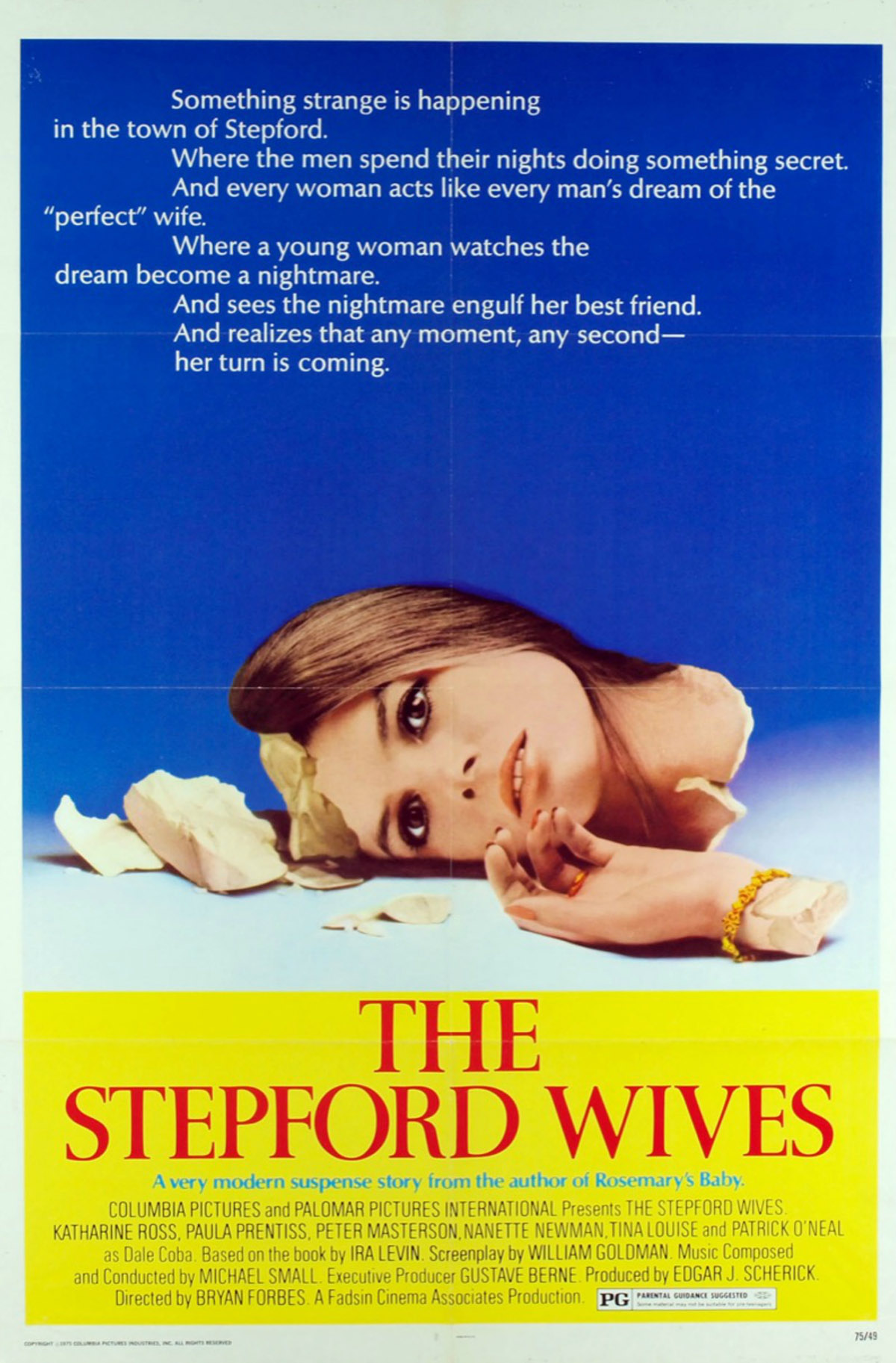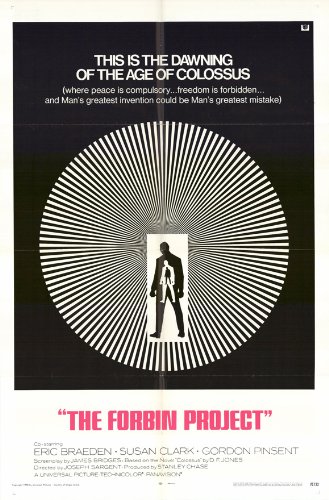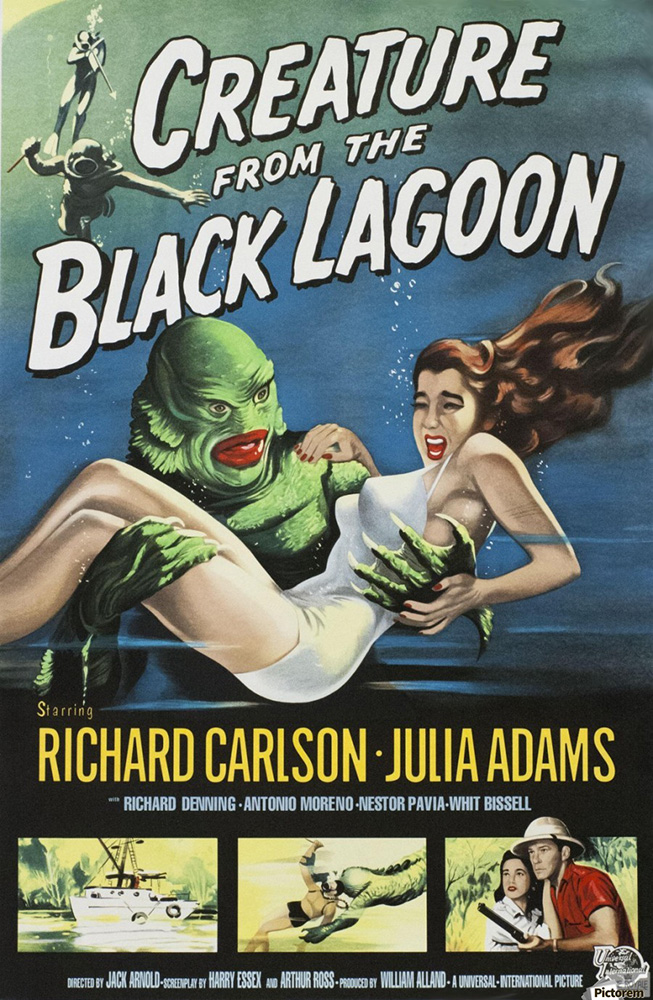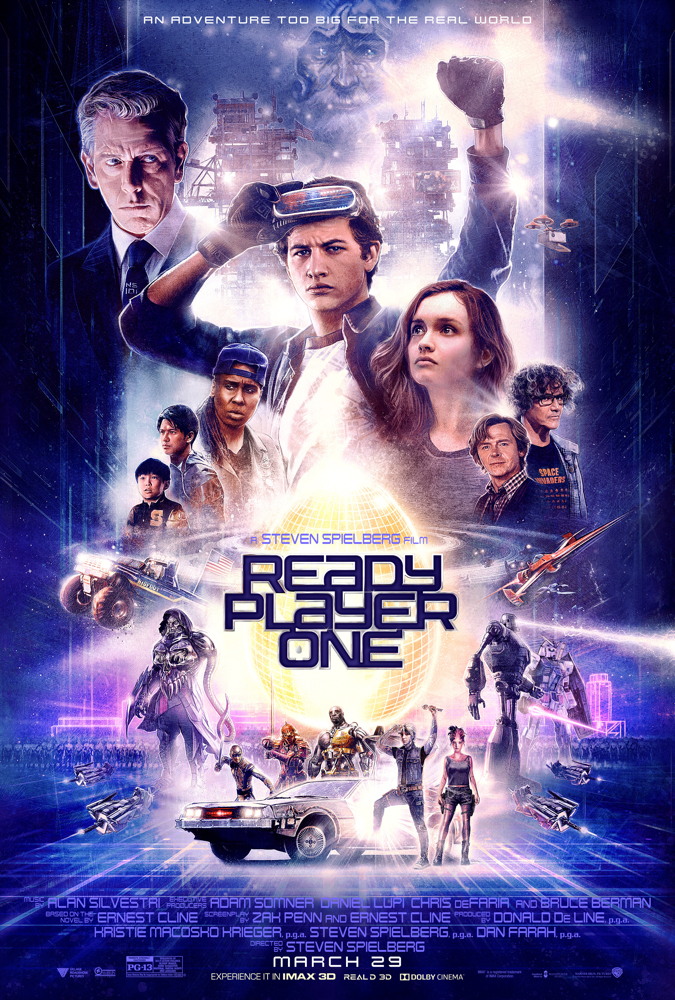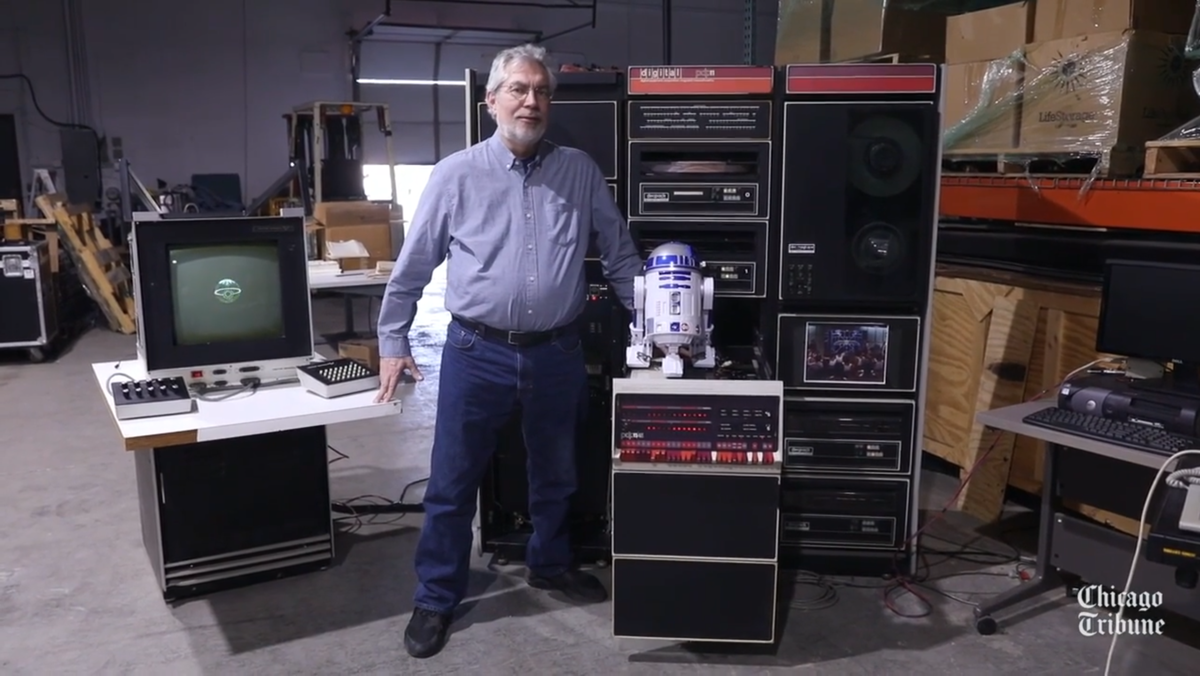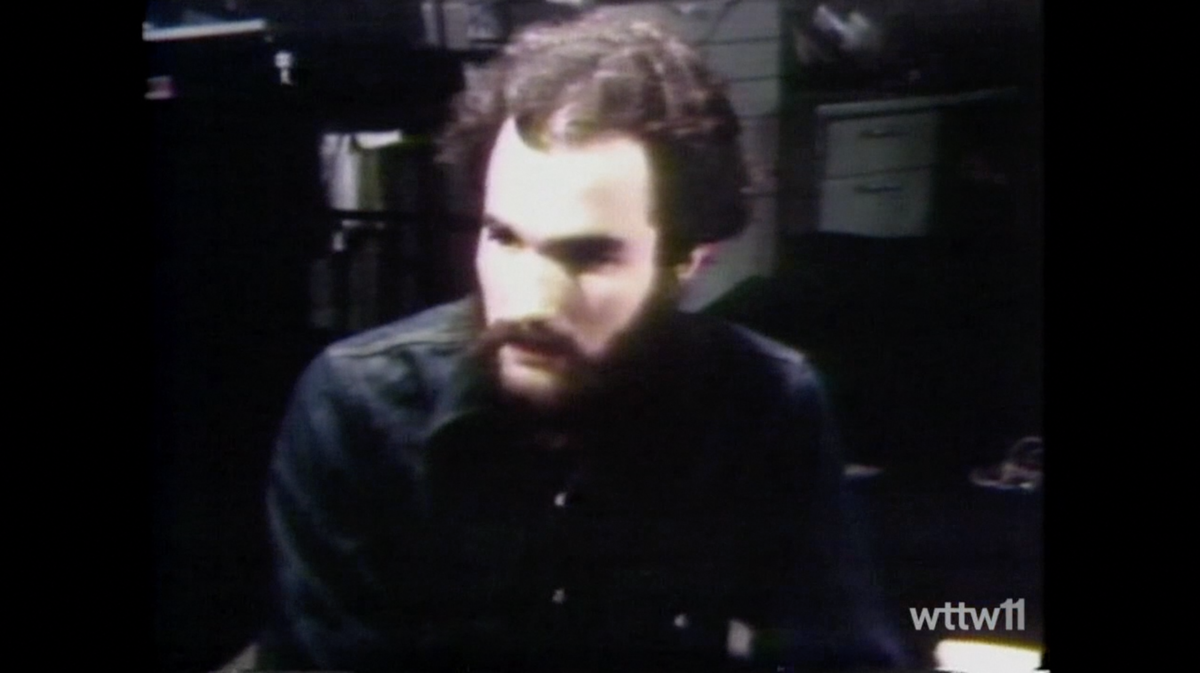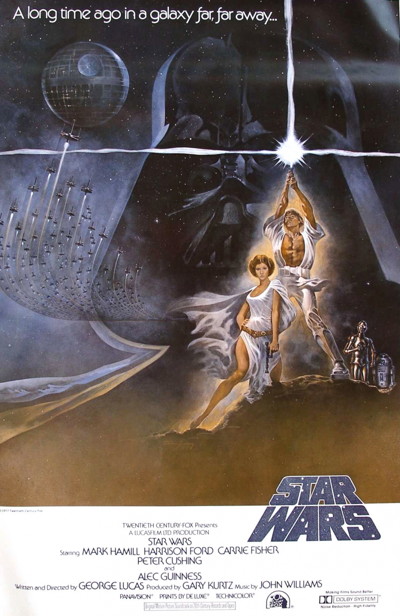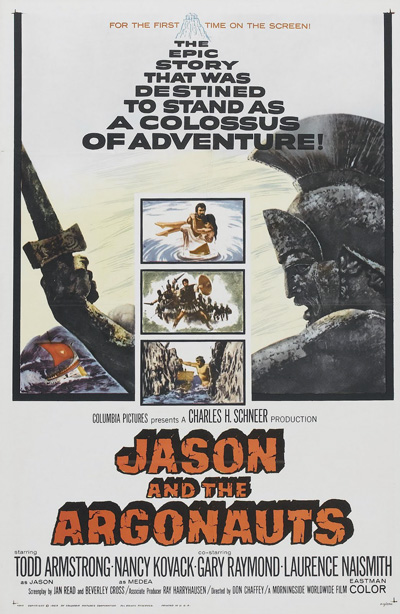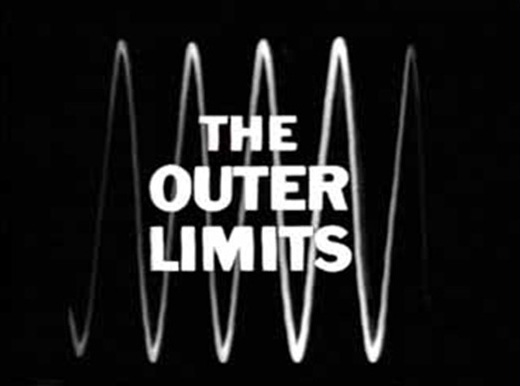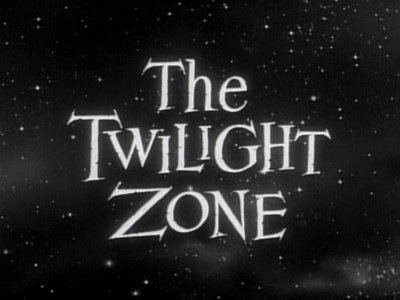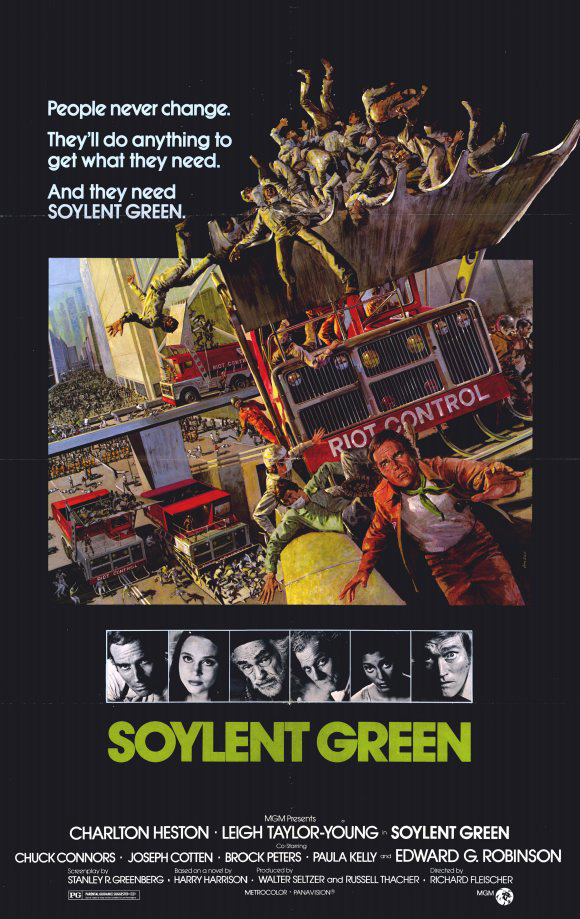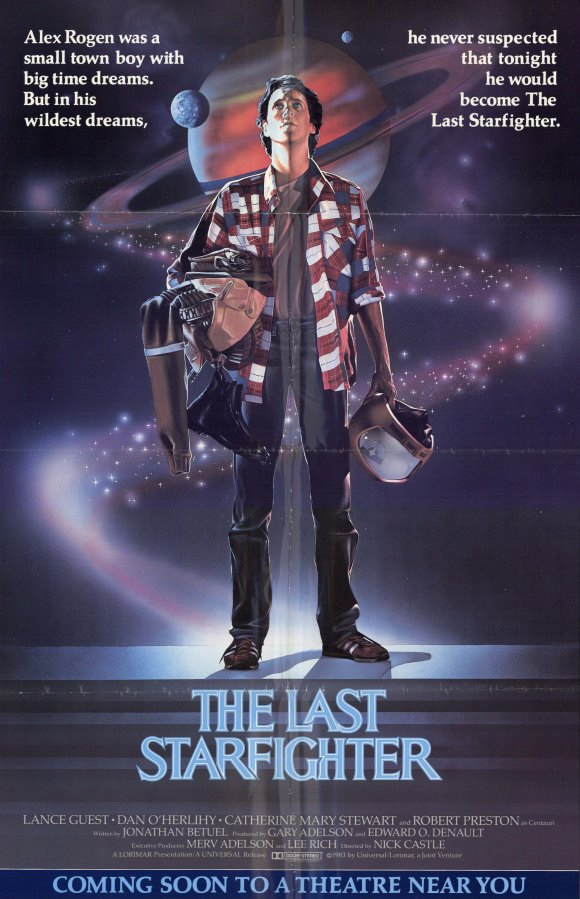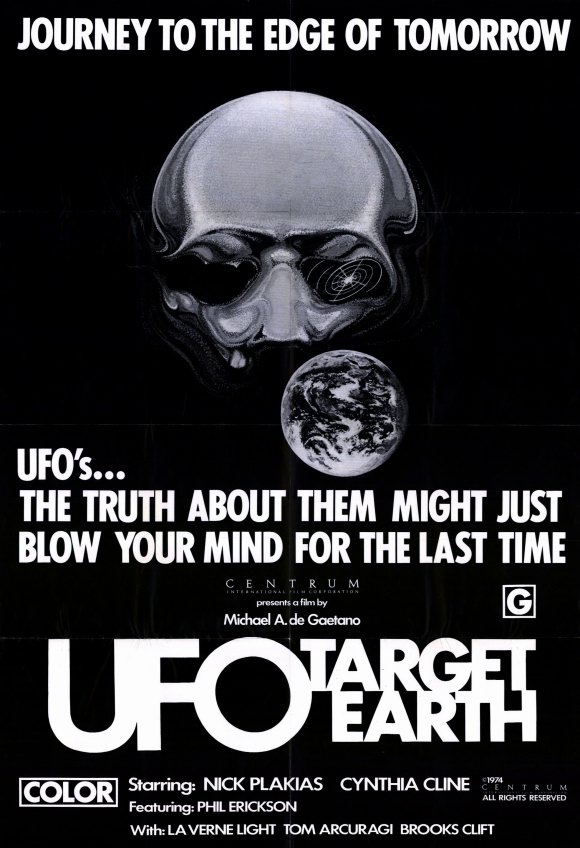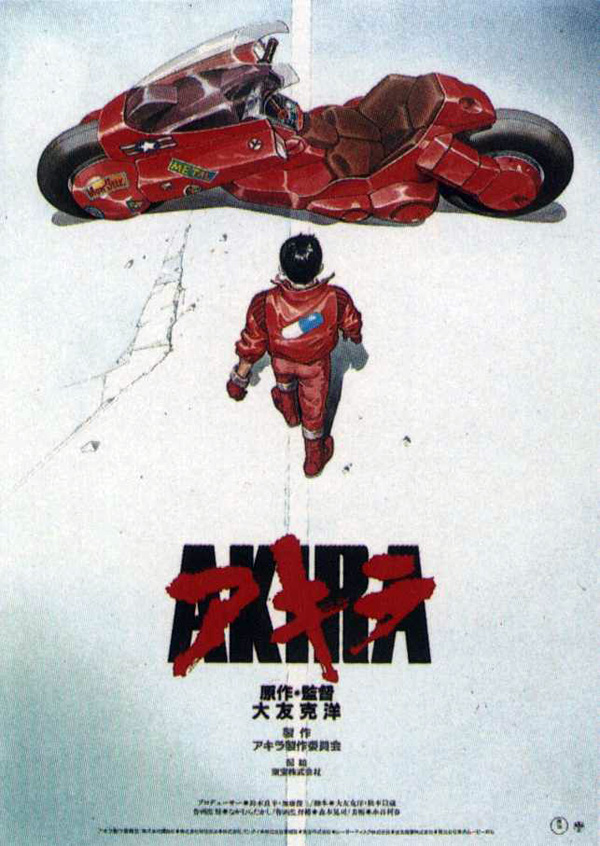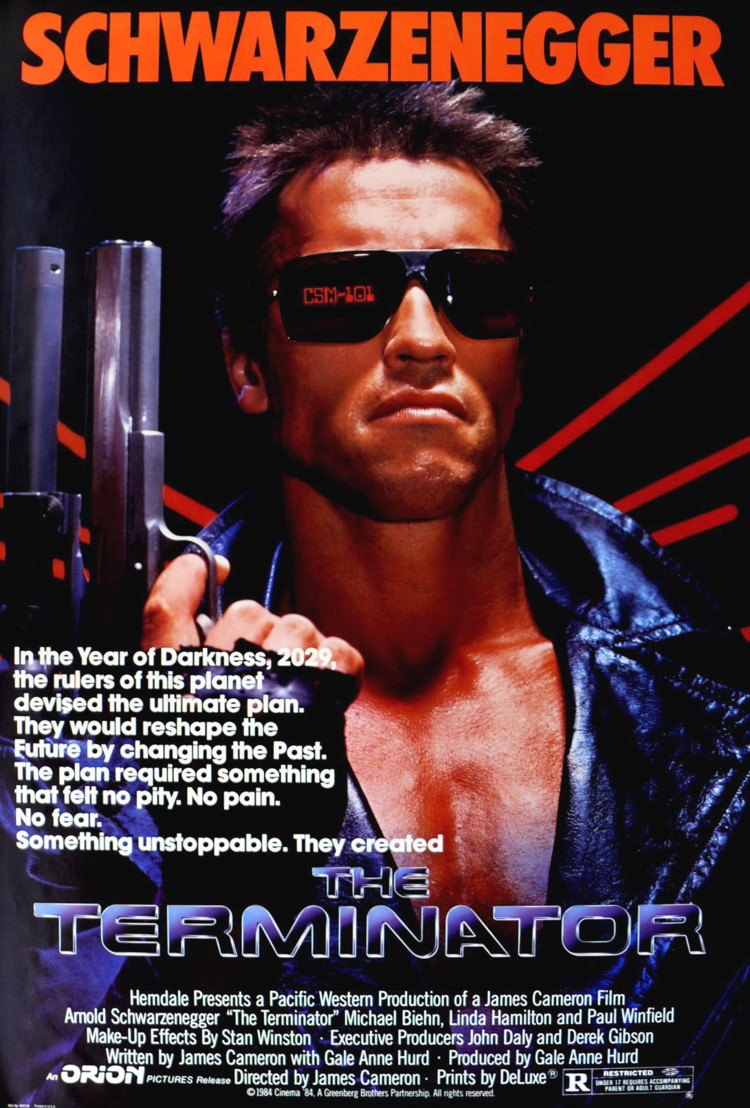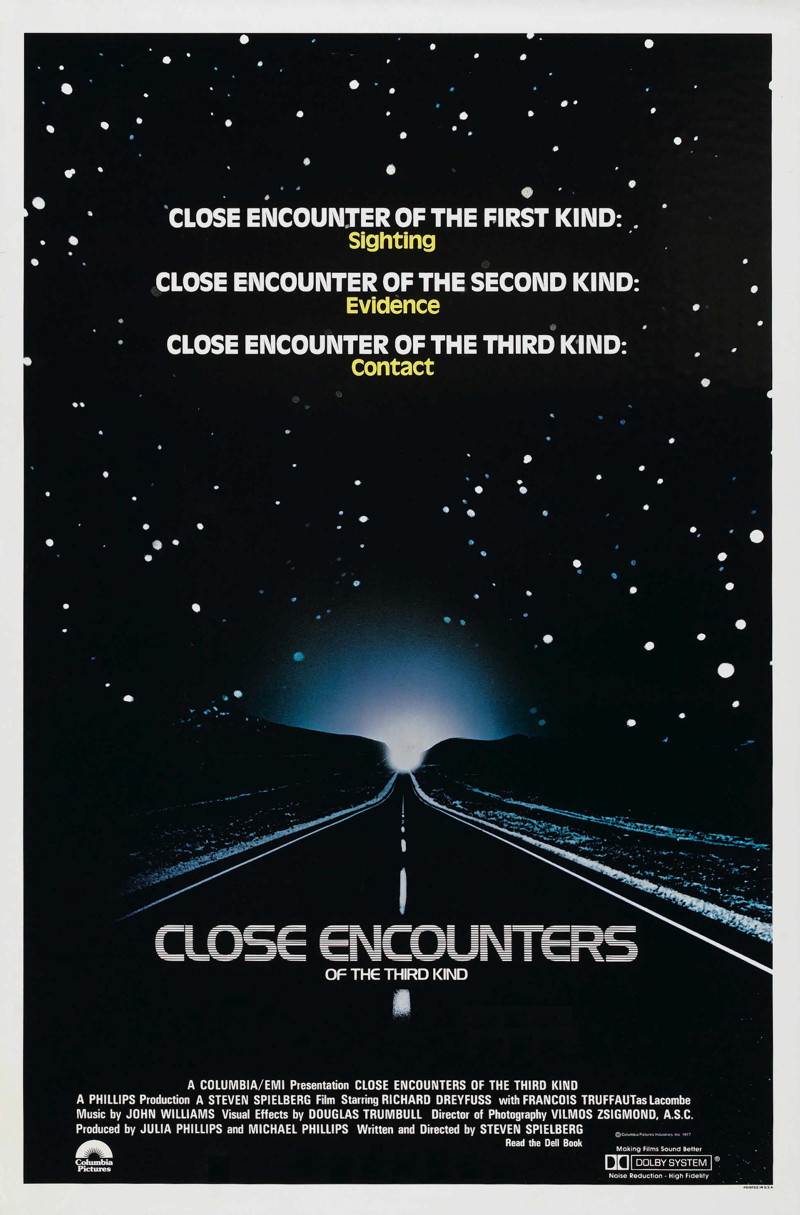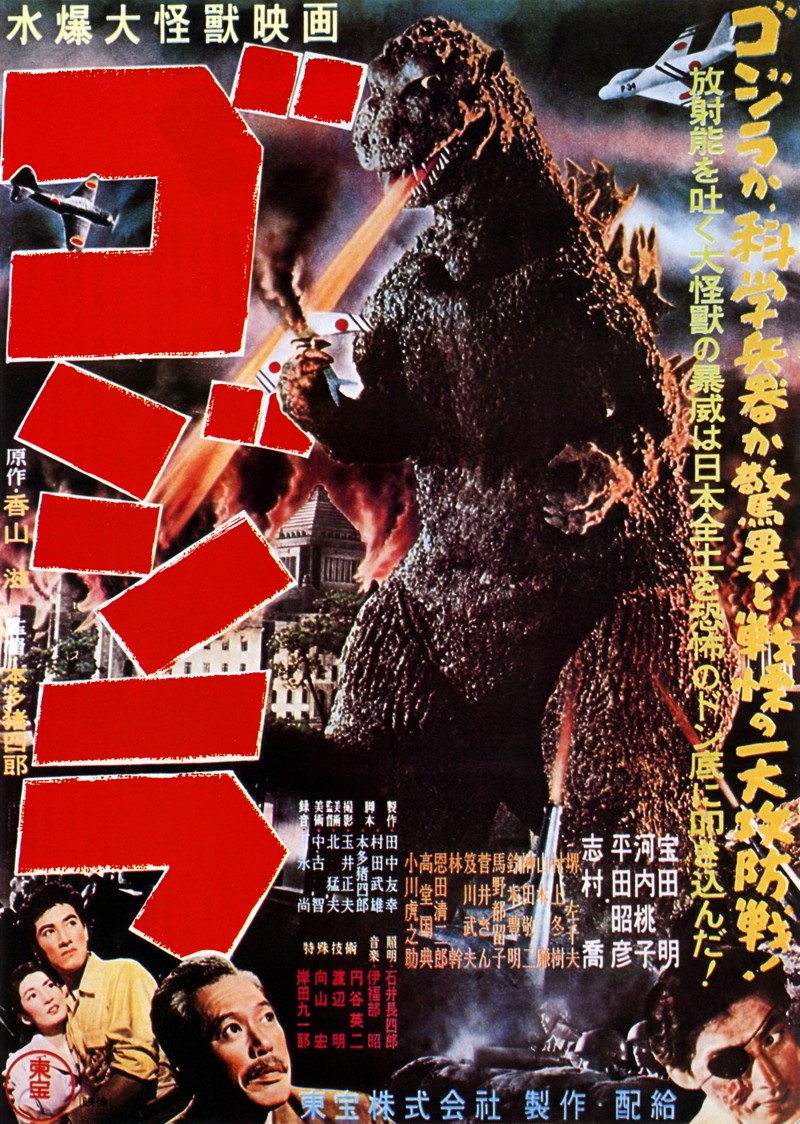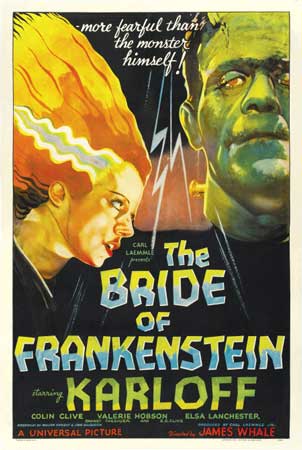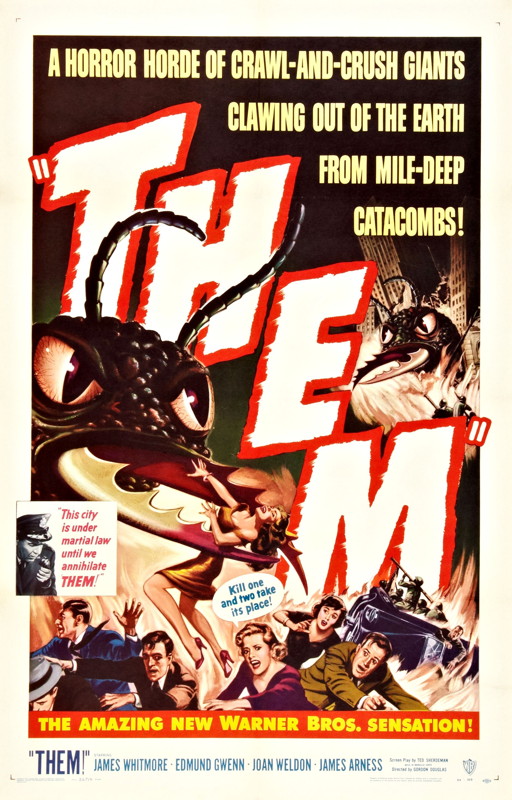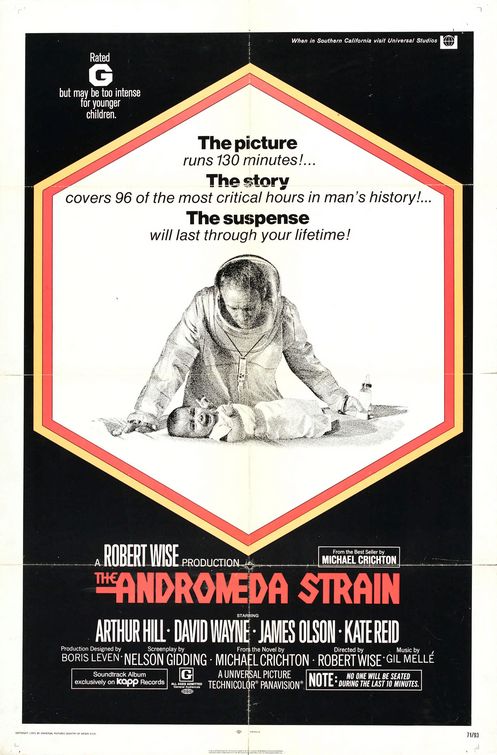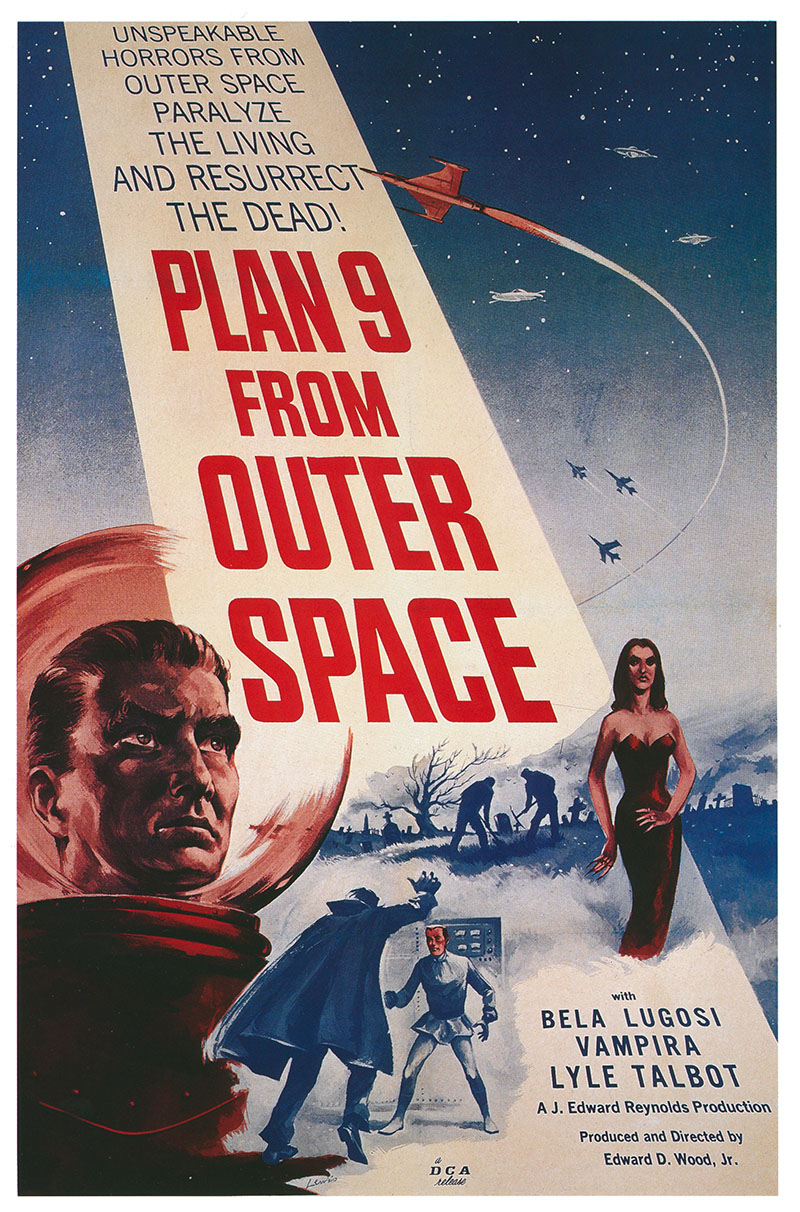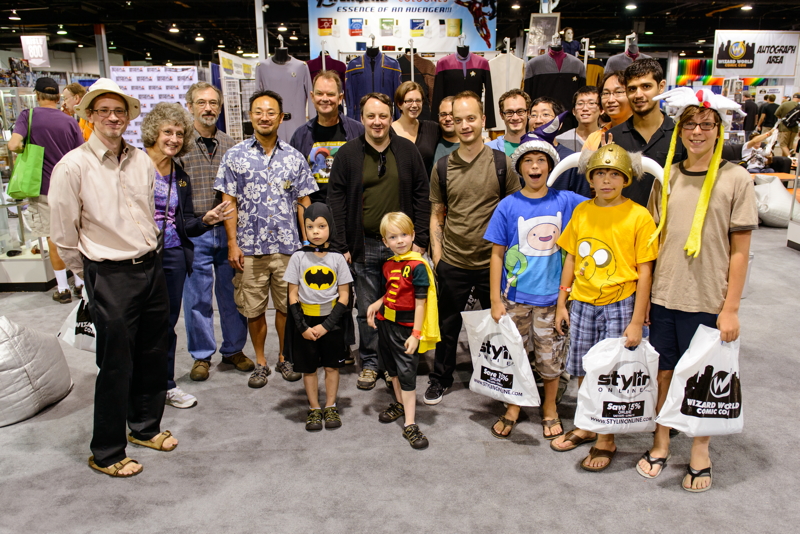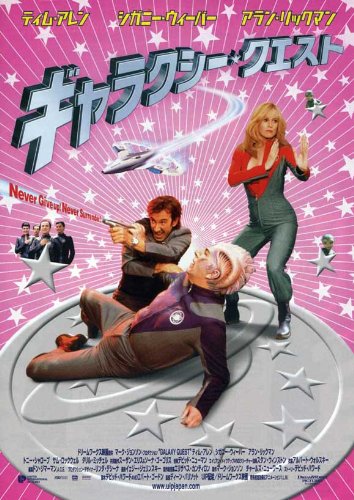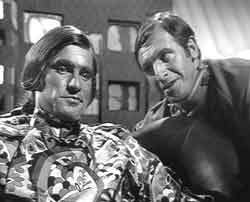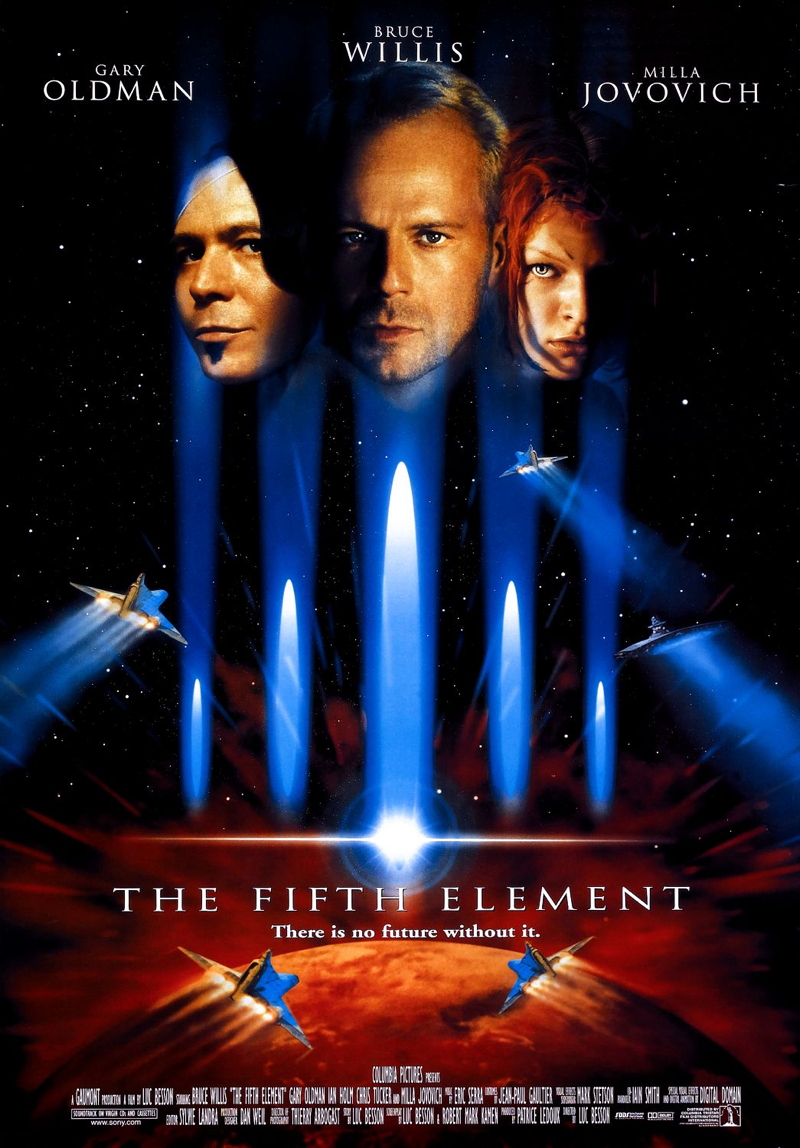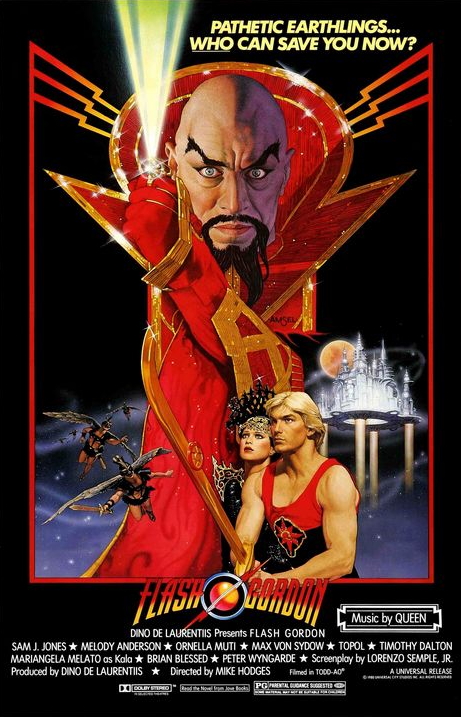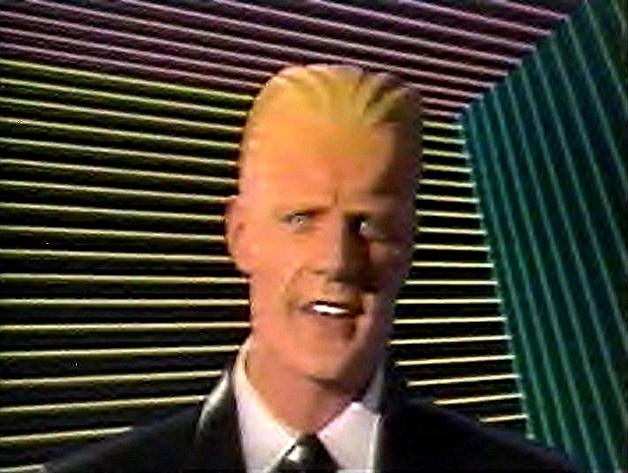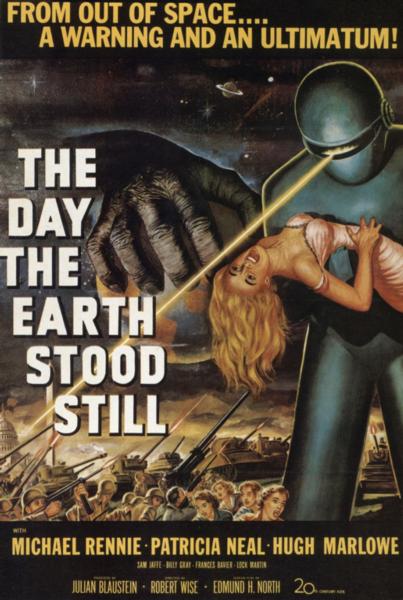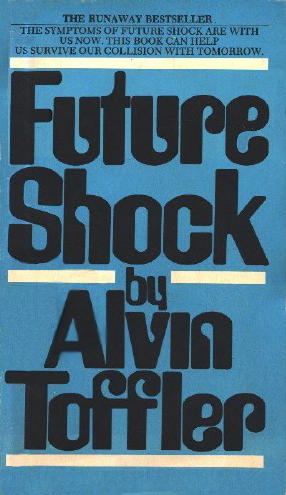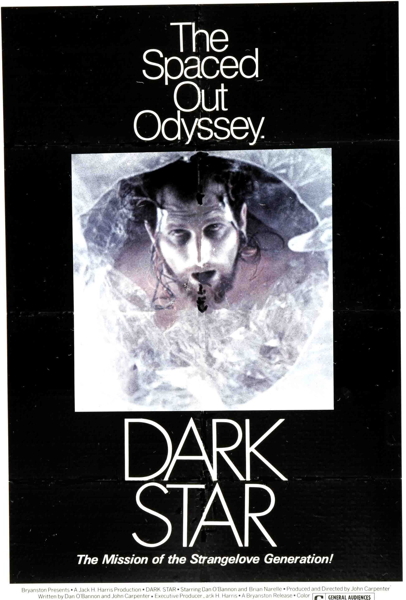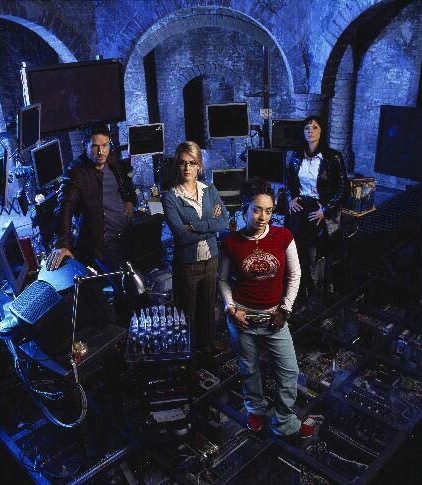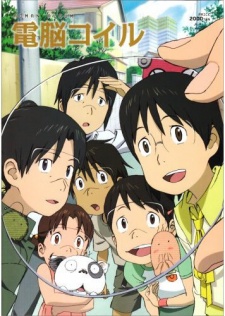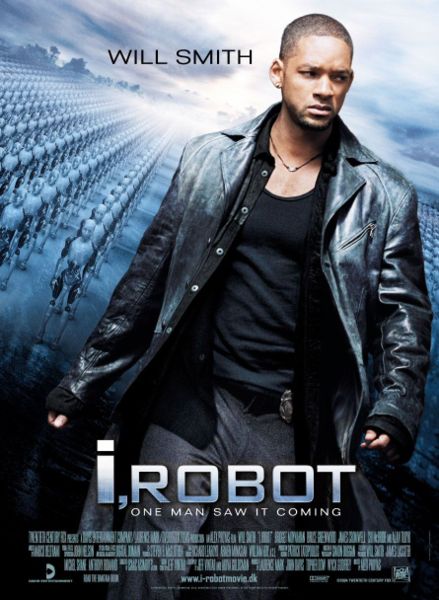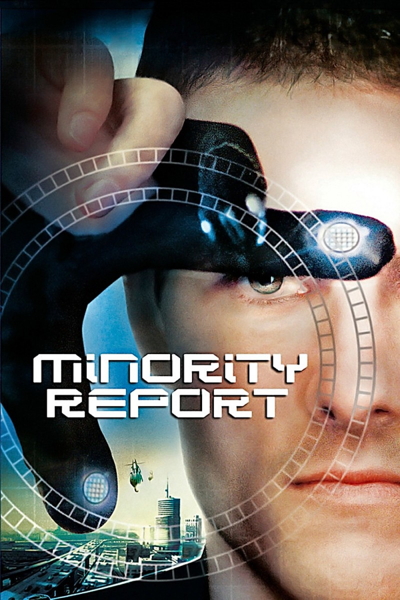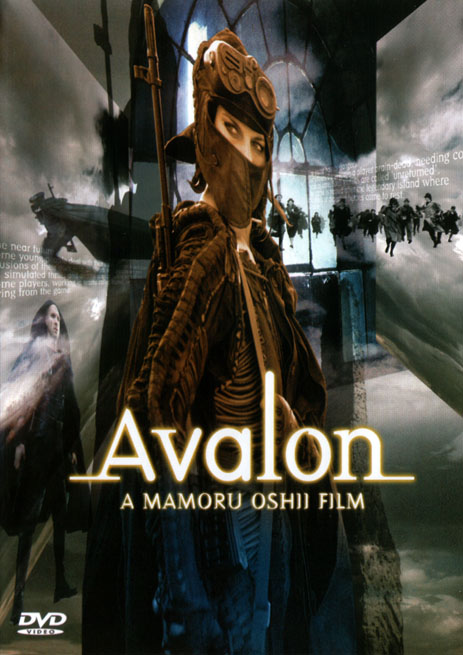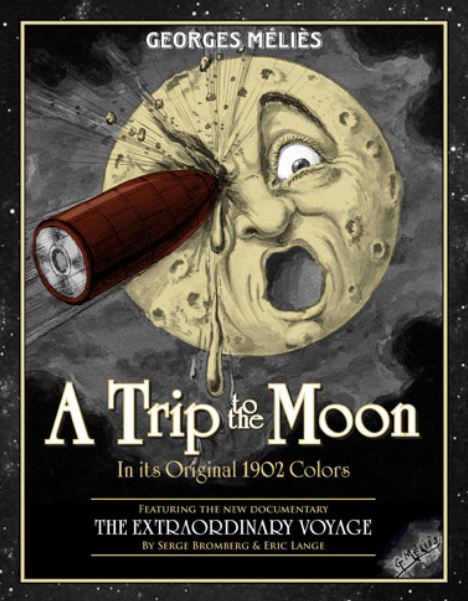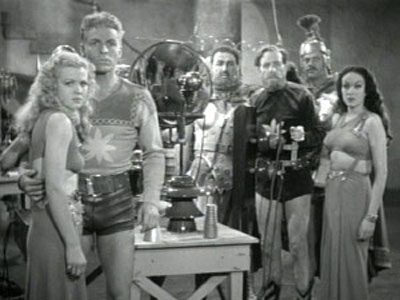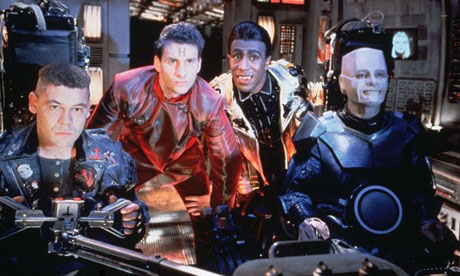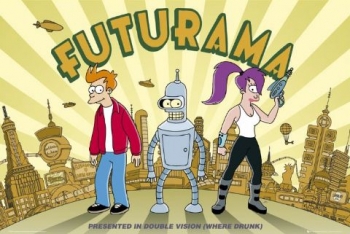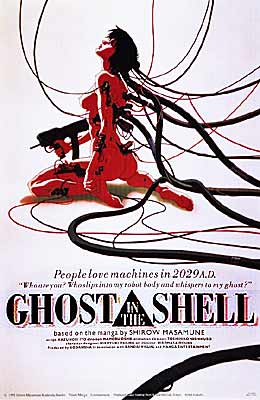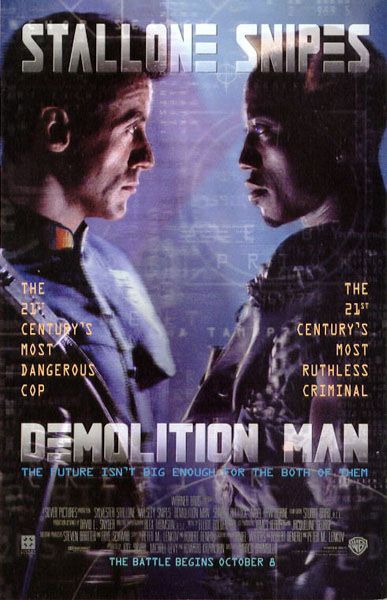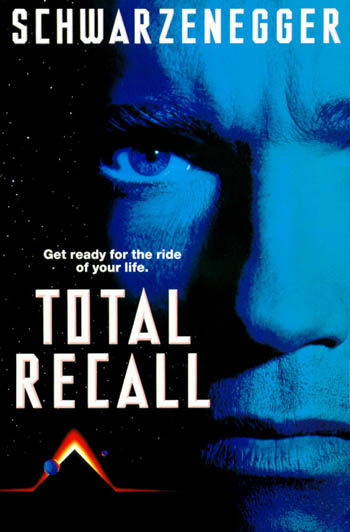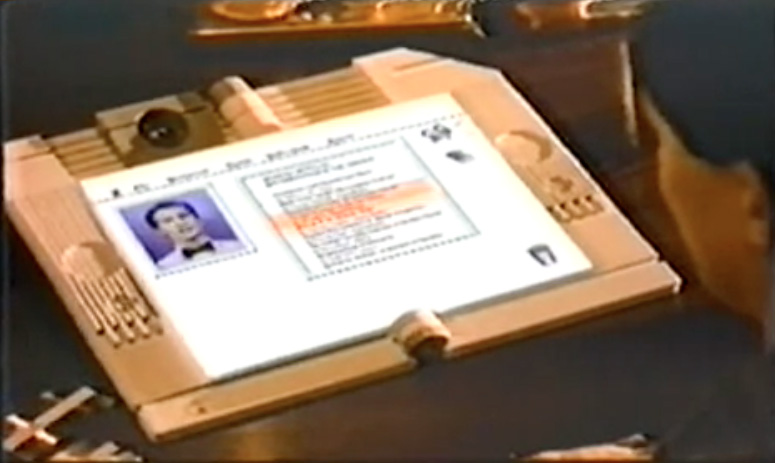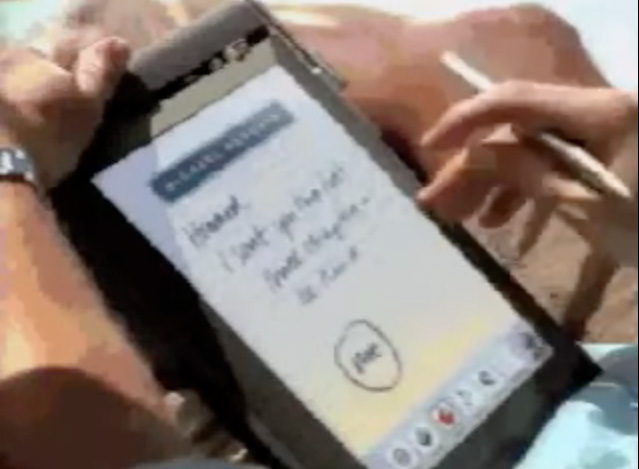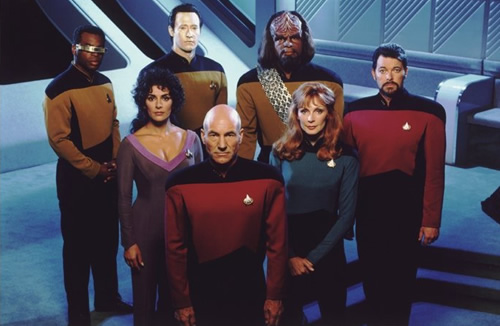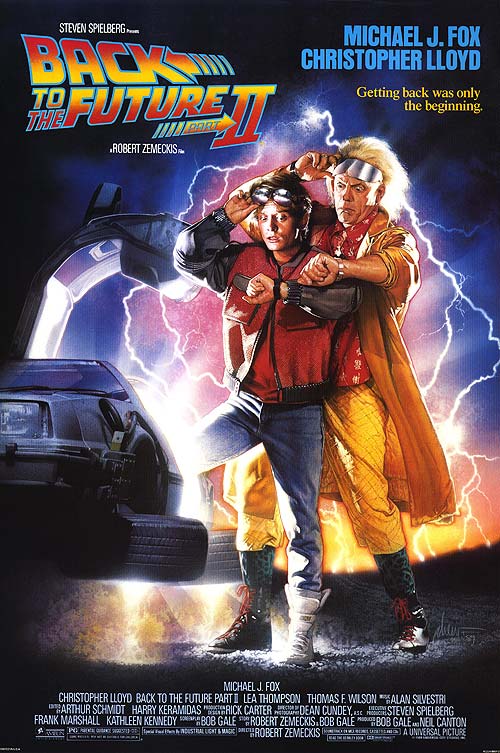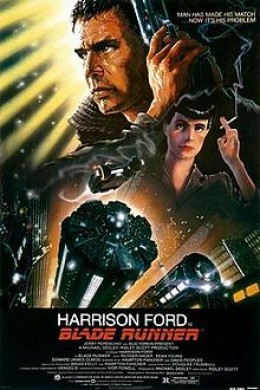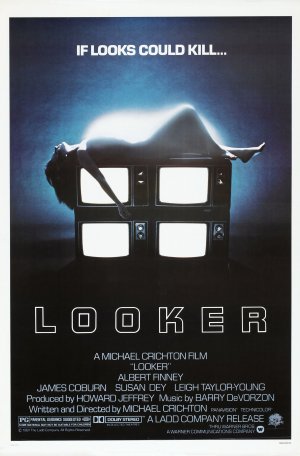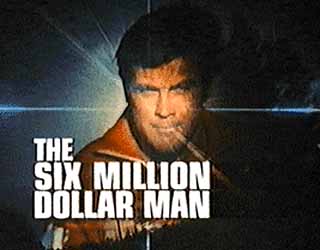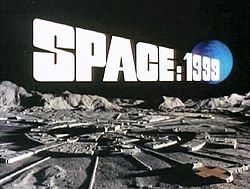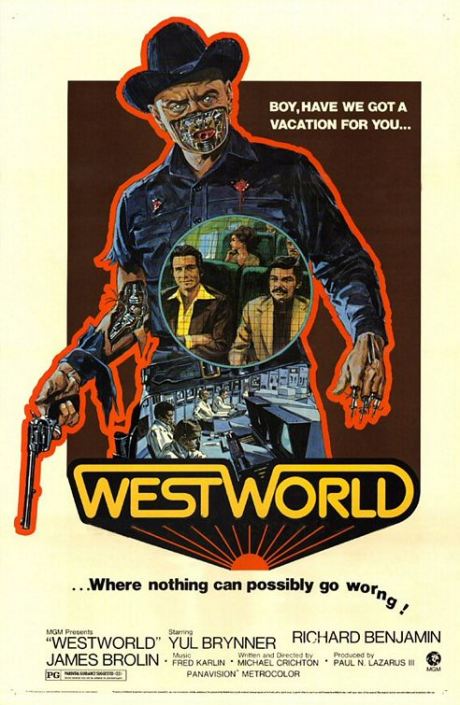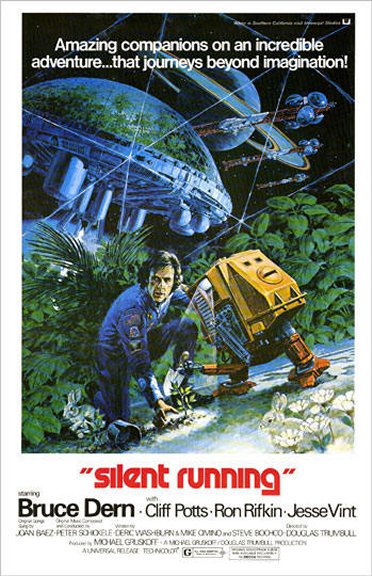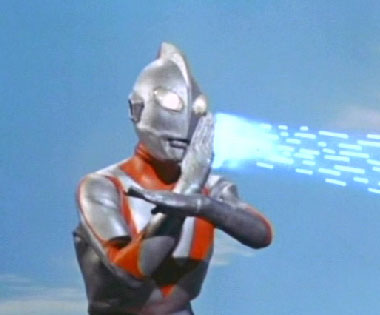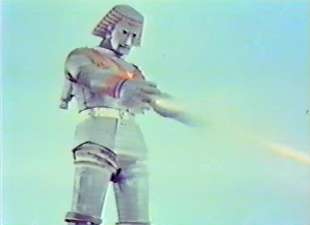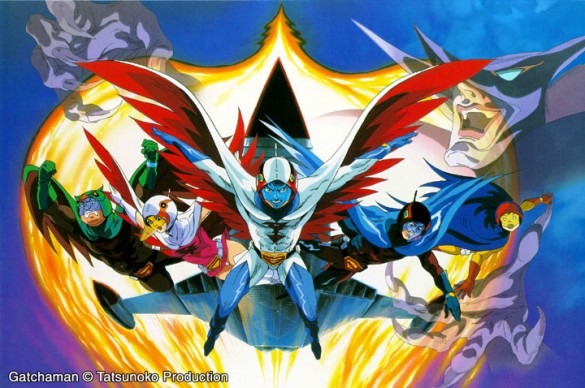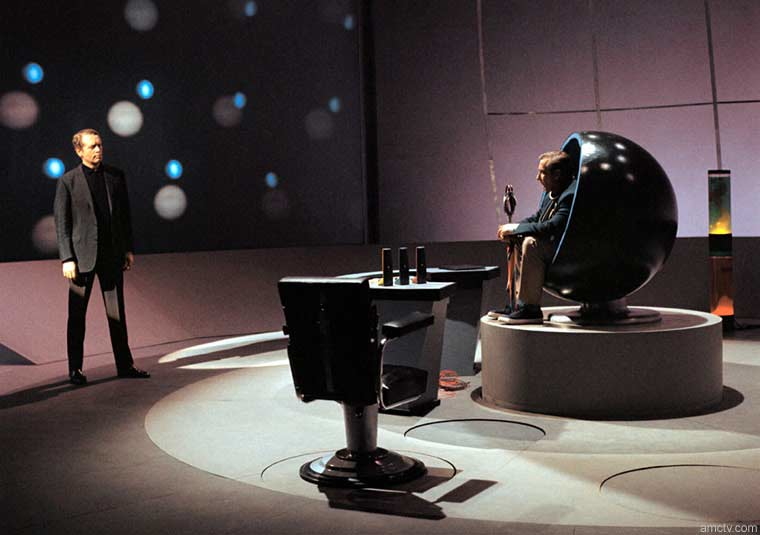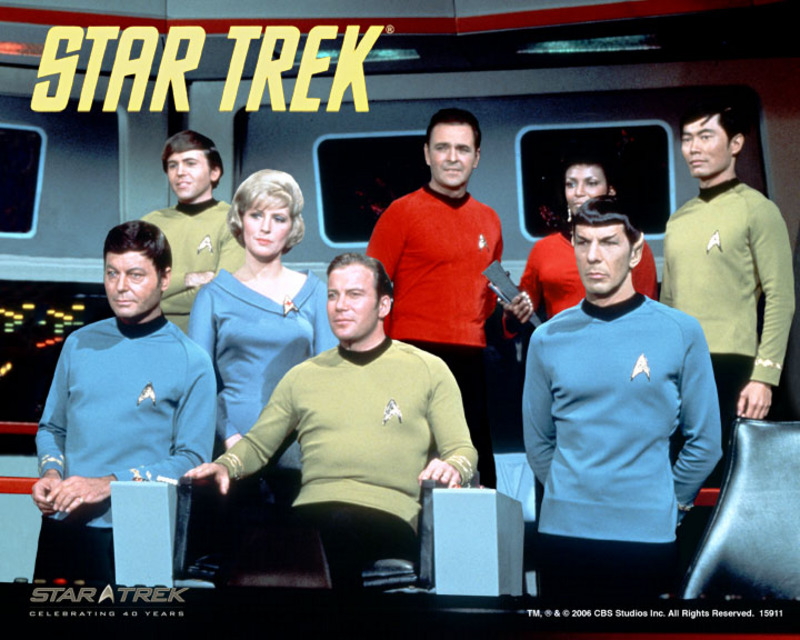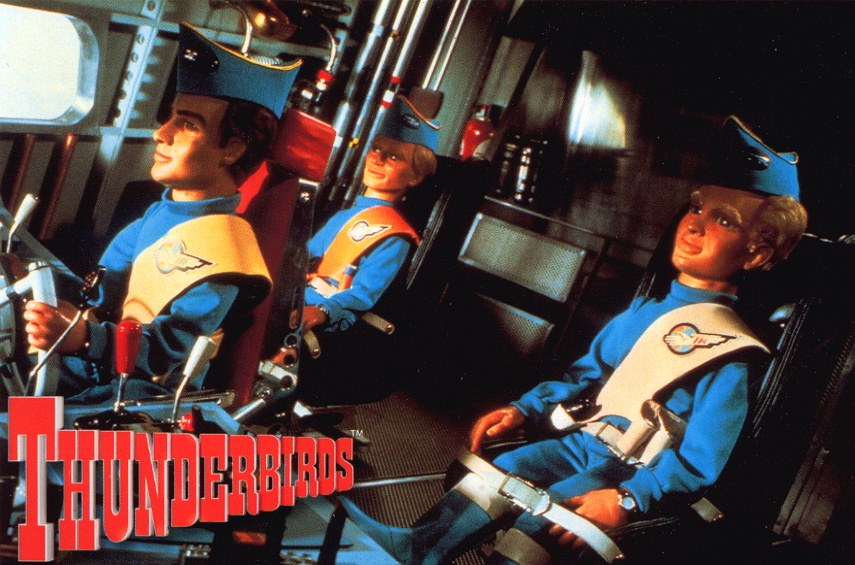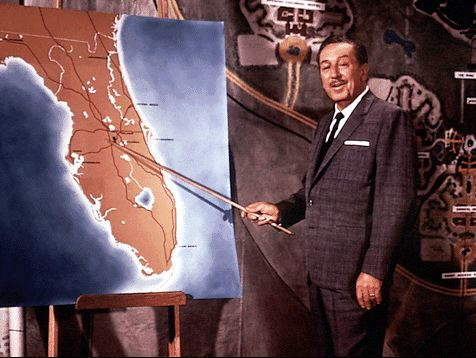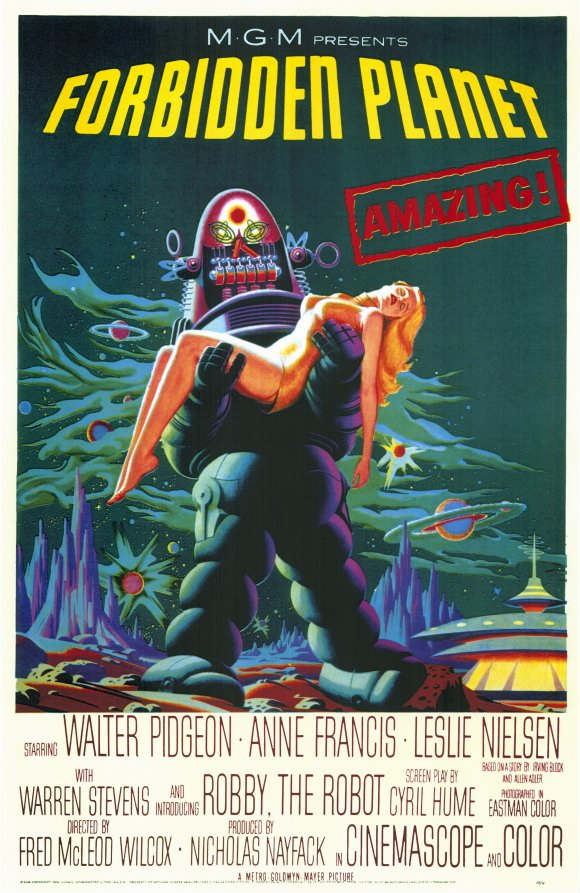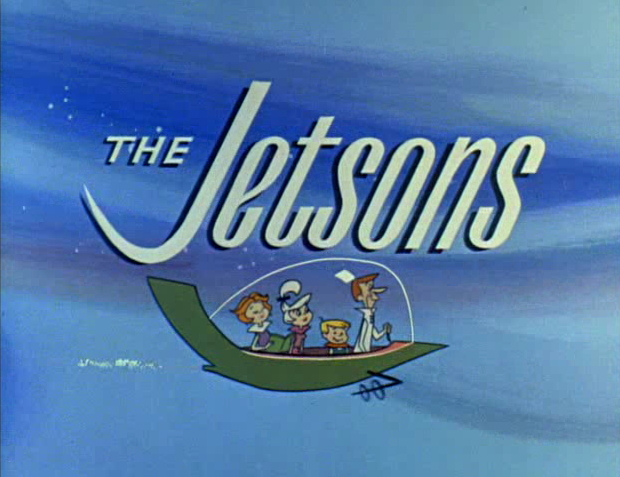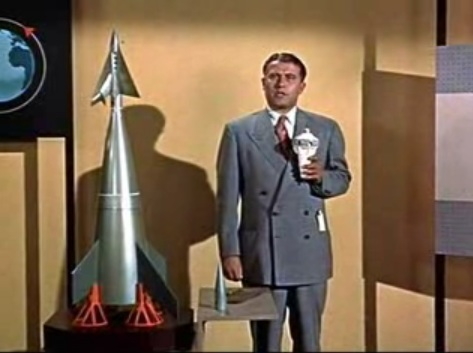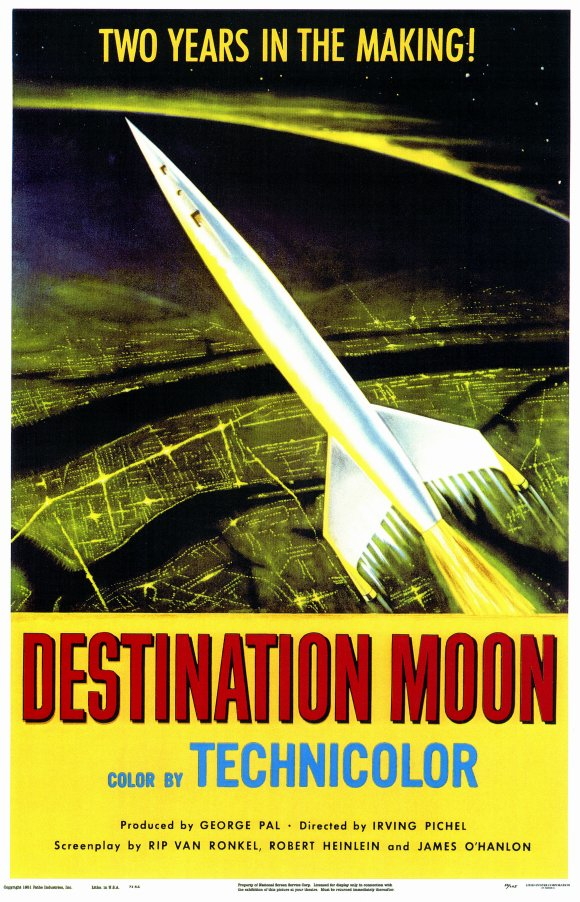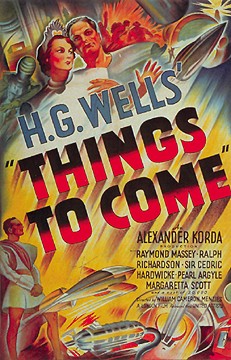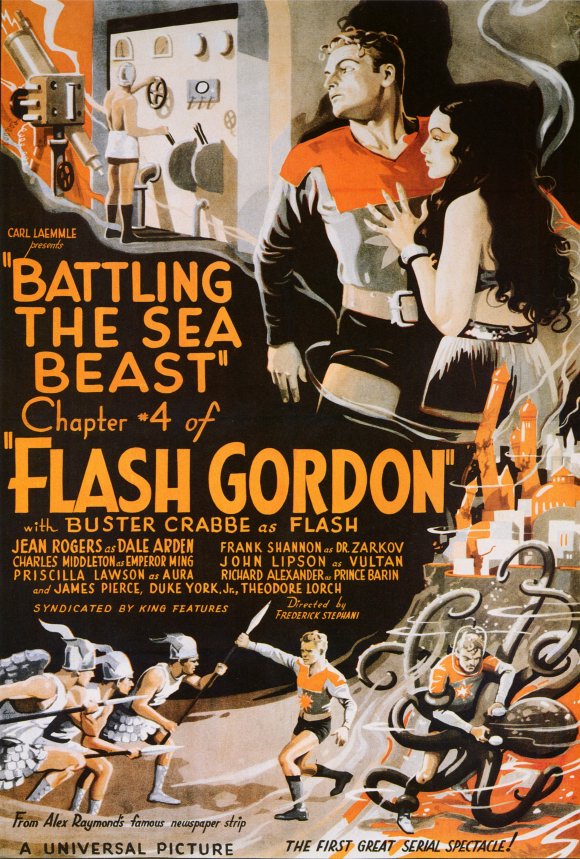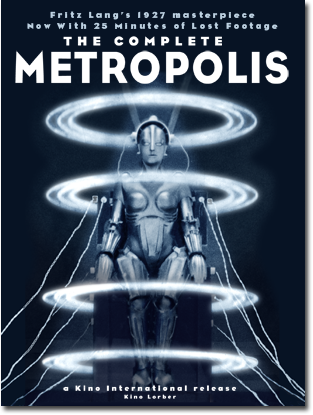Road to
the Stars (1957)
Back in 2011 for Sci-Fi Fridays we showed
Disneyland's "Man and the Moon" from 1955, one of several
episodes of the Disney TV series to educate and excite
people about getting into space. 'Road to the Stars' from
1957 could be considered the Soviet Union's version,
focusing on the life of rocketry pioneer Konstantin
Tsiolkovsky, recreations of early rocketry work, and
predictions about future near Earth space travel.
Contact
(1997)
Adapted from the 1985 book by Carl Sagan, which
was itself adapted from the earlier screenplay by Carl Sagan
and Ann Druyan, Contact begins with the SETI program
receiving a signal from Vega.
The world started listening for signals within the solar
system soon after radio was invented, started looking
outside the solar system in the 1950s, and the search was
dramatically expanded in the 1990s. So far it doesn't seem
like anyone nearby is transmitting, although the 'Wow'
signal generated some excitement back in 1977, and books
such as Stanislaw's Lem's "His Master Voice" (Glos Pana)
dealt with the difficulties in recognizing and interpreting
a possible message like this. If you want some other things
to check on Wikipedia, the Drake equation suggests how many
extra-terrestrial civilizations we should be able to
contact, and the Fermi Paradox tries to reconcile those
numbers with the fact that we haven't found evidence for any
of them.
Closer to home, people are still excited about these things,
as the speculation around �Oumuamua a year ago showed.
Unfortunately, while 'Oumuamua was the first interstellar
object detected passing through our solar system, it was not
anywhere near as big as Arthur C. Clarke's Rama (from
Rendezvous with Rama) or as talkative as his Starglider
(from the Fountains of Paradise)
It was not until 1995 that we had evidence of planets around
'typical' stars. As they mention in the film, Vega might
have a planetary system forming but there is no solid
evidence for planets at this point.
Fantastic
Voyage (1966)
While
much of science fiction in the 1960s was focused on outer
space, Fantastic Voyage would take people in a different
direction, into the human body.
It was an exciting time in medicine. The first commercial
ultrasound was in 1965 and MRI and CT scans would appear 5
years later. Vaccines were just arriving for measles and
mumps. The first transplants were starting to be performed.
Disney artist Frank Armitage and his medical illustrations
were responsible for much of the look of the interior of the
human body in the film and a large portion of this work was
donated to UICs Biomedical Visualization program.
War
Games (1983)
War
Games from 1983 featured one of the most realistic
depictions of 1980s era hacking and phreaking in film,
although the term 'hacker' itself wouldn't really enter the
public consciousness until the next year with Steven Levy's
'Hackers' book. This was a time when personal computers were
still a novelty and you could communicate with other
personal computers or larger mainframe computers over
telephone lines at the new rate of 1200 bits per second (150
characters per second). As major corporations, schools,
banks, etc. started going "on line" they became targets for
exploration, and in some cases fraud, while the FBI
struggled to catch up.
At the same time the cold war continued - that year the
Soviet Union shot down Korean Airlines Flight 007, the US
deployed short range nuclear missiles and held massive
maneuvers in western Europe, and, as the world later found
out, the Soviet Union almost launched a 'retaliatory'
nuclear strike due to a software error.
War Games played on both sets of fears, and it did have an
actual affect on governmental policy as President Reagan saw
the film and asked officials whether the US was vulnerable
to this new kind of threat. He was not happy with the
answer. Parts of the film were later shown during
congressional hearings.
On a less serious note, knowledge of the film, and Matthew
Broderick's dialogue in particular, would be critical in the
novel version of Ready Player One
Planet
of the Apes (1968)
The original 1968 Planet of the Apes film, based
on Pierre Boulle's novel, did what many good genre films do,
it held up a mirror to society. It would also give Charlton
Heston another string of quotable lines.
The film was a critical
and commercial success, and created its own industry with 4
movie sequels over the next 5 years, a short lived TV show,
a Saturday morning cartoon, action figures, model kits,
jigsaw puzzles, playsets, comics, trading cards, a board
game, a lunchbox, etc, which shows how the film series, and
this one in particular, worked on multiple levels, as you
could come for the social commentary, the action, or the
�monkeys�. Even after the 1970s the films stayed in the
public consciousness, leading to the 2001 Tim Burton film,
and the current series of films.
The
Thing (1982)
30 years later, John Carpenter, a fan of the
original film and the original story, would go on to
create a more faithful adaption of Campbell's story in
1982 with "the Thing", when technology was at the point that
the true nature of the Thing could be shown through
practical special effects, and featuring a memorable score
by Ennio Morricone. A failure at the time of its release, It
would come be regarded as one of the best science fiction
films of the 1980s.
Almost 30 years after that a third film, also called �the
Thing� was made as a prequel to the 1982 film, though the
2002 video game, also called "the Thing" perhaps better
captured the mood.
In reality, the Amundsen-Scott South Pole Station
has 6 months of daylight followed by 6 months of night, and
the population varies from around 2000 during the summer to
50 in the winter. After the last flight leaves before the
start of winter those that will remain have a tradition of
running all versions of the Thing.
note, the first woman on Antarctica was in 1935,
but women would start going in larger numbers in the 1970s,
so while the all male crew of the original short story was
realistic for its time, it is harder to defend that aspect
of the 1980s film
The
Thing from Another World (1951)
As winter has finally closed in on Chicago, these
sub-zero days seem a good time to visit the Earth's poles
and see how things could be worse.
Joseph Campbell Jr.'s "Who Goes There" from 1938
was a classic science fiction short story about a remote
research group in Antarctica that discovers an alien
spaceship buried in the ice along with one of its occupants,
and the paranoia it unleashes.
In 1951 Howard Hawks adapted it into "The Thing From Another
World", moving the setting to the Arctic, making 'the Thing'
more filmable, giving the characters more depth, changing
the nature of the paranoia, and featuring a memorable score
by Dmitri Tiomkin. The film was one of the early classics of
the 1950s sci-fi boom drawing on the current interest in
flying saucers, the fear of what science had unleashed with
the atomic bomb, and good reputation the US military had
after the second world war.
Dr.
Strangelove, or How I Learned to Stop Worrying and Love the
Bomb (1964)
Two different novels set in the present day (back
then) about US bombers crossing into Soviet airspace and
potentially triggering a global nuclear war (Red Alert in
1958, and Fail Safe in 1962) would both become films in 1964
- one being the very serious 'Fail Safe' directed by Sidney
Lumet, the other being the much less serious 'Dr.
Strangelove' directed by Stanley Kubrick. Is it science
fiction? maybe, kind of, in a way, but it does seem like a
very good way to end a term about socially conscious films.
Strange
Days (1995)
Of the 85 shorts, TV episodes, and films that we
have shown on Sci-Fi Friday, precisely zero have been
directed by women. Fortunately Hollwood has been changing
recently, and one of the women helping change things since
the 1980s is Kathryn Bigelow.
This film, another film noir cross sci-fi in the near future
at the very end of 1999, deals with issues of issues of
police brutality in the aftermath of the LA riots after the
beating of Rodney King by the LAPD. It also deals with
issues of living your own life vs watching others experience
life. 1995 was the really early days of the WWW, so here the
addictive technology of choice allows people to record their
experiences straight from their brain and share them with
others.
Note that this is a Kathryn Bigelow film, and if you have
seen her other films, such as Near Dark or the Hurt Locker,
you know that she can show some pretty violent and
disturbing things.
Alphaville
(1965)
What if Jean-Luc Godard of the 1960's French New
Wave made a science fiction film?
Alphaville is a mix of 1940s film noir with science fiction
20 years before Blade Runner, but while Ridley Scott would
try and create a memorable cyberpunk future in Blade Runner,
Alphaville has Paris, and a director who isn't very
interested in sci fi set dressing, so there is a different
kind of suspension of disbelief required here, though
perhaps the 1960s are enough of an alien environment these
days.
Wall-E
(2008)
The most socially relevant Pixar film to date
deals with the long term affects of consumerism on the
planet and on the human beings that have abandoned it.
Dawn of
the Dead (1978)
Is it sci-fi? not really, unless you accept the
possible explanation in "night of the living dead" that the
returning Venus space probe caused the outbreak, but its
close to Halloween and 'dawn' does have a lot to say about
consumerism.
While George Romero created the modern 'zombie' film with
his low budget independent Pittsburgh film "Night of the
Living Dead" in 1968, its 1978 sequel "Dawn of the Dead" was
the one that really jump started the cycle of imitations.
While "night" was set in an isolated farm house, "dawn" was
mostly set in an actual shopping mall. Shopping malls and
retail stores in general have had issues since convenient
internet shopping appeared, but from the early 1970s through
the late 1990s they were a very important part of American
culture, and George Romero saw that and used that to make a
statement
This film was unrated upon its release as there is a fair
amount of violence here, as you might expect, though the
practical effects of the time are perhaps less realistic
looking today than the current CG enhanced mayhem of the
walking dead and others of this films grandchildren
Nausicaa
of the Valley of the Wind (1984)
While Hayao Miyazaki had worked in many previous
productions, and had directed multiple TV episodes and the
Lupin the Third movie "Castle of C"agliostro", Nausicaa of
the Valley of the Wind" was the first Miyazaki film adapted
from his own comic series, and the first that would fully
embody the various themes he would pursue for the next 30
years (e.g. in Kiki's Delivery Service, My Neighbor Totoro,
Princess Mononoke, Spirit Away, Ponyo, etc.) with a coming
of age story in a post-apocalyptic world of environmental
devastation
Rollerball
(1975)
Some science fictions portray desolate
post-apocalyptic futures, while others, like "Rollerball",
suggest a more familiar dystopic future, in this case a
world ruled by corporations where the world's most popular
sport to watch is 'Rollerball', an increasingly violent
version of roller derby. But what happens when the game's
star player becomes too popular and won't do what he's told?
Taking place in the futuristic year of 2018 the film deals
with issues of violence in sports and the viewer's part in
it, as well as the role of the individual in society.
If you are curious about the details of the game, this site is
a good starting point http://speedrally.net/?p=1204
The
Silent Star (1960)
Since we are focusing on social relevance
this term, most of the films are taking place on Earth, but
this science fiction film from East Germany's DEFA studio,
based on Polish author Stanislaw Lem;s first novel "the
Astronauts" from 1951, had the first multi national crews
heading off into space to investigate a mysterious message
from Venus (the US Film 12 to the Moon which had an
international crew of men and women heading to the moon was
released six months later). As his first novel, it has hints
of where his writing would go in the future, both in his
more action adventure stories, and those dealing with the
difficulties in communicating with others. As a film,
"Silent Star" is an interesting counterpoint to the science
fiction films made in the west at the same time, and
contains very clear warnings about the dangers of atomic
weapons to both the people wielding them and their enemies.
Invasion
of the Body Snatchers (1956)
Don Seigel's film was released during the
height of the 'red scare' in the US, and could be claimed to
be about either the dangers of a communist takeover, or the
hysteria of McCarthyism in over reacting to that threat.
Either way it works as an allegory for the dangers of
conformity, which is why it has been regularly remade in
different settings in '78, '93, and '07, with another in
pre-production. This version takes place in a small
California town where the local doctor's patients start
reporting that their family members have been replaced by
identical imposters. The film would introduce 'pods' into
fairly common usage, long before that term would become
synonymous with moving or (non) ingestible detergent.
Earlier this week I read a sports report that referenced the
film when talking about a poorly performing American
football team that seemingly had been replaced by an
identical group of players that actually knew how to play.
Her
(2013)
Digital assistants are becoming
ubiquitous and Spike Jonze's "Her" takes us into the near
future as they become more capable and intelligent, and
capable of real relationships with humans. Humans having
relationships with artificial intelligence isn't new -
similar stories were told in the mid 1960s with a mainframe
computer in the Twilight Zone episode "From Agnes - With
Love", in a much less consensual scenario in 1977's "Demon
Seed", and with a personal computer in the 1984 film
"Electric Dreams", but now the possibility seems much more
realistic.
They
Live (1988)
This John Carpenter film was released right before
the election in 1988 to try and help elect more progressive
candidates after eight years of Ronald Reagan. The central
premise is straight forward - what if an alien invasion has
already taken over the United States and the policies of the
Reagan presidency were crafted to benefit those aliens and
their allies at the expense of everyday people.
Even if you haven't seen "They Live" you've
probably seen its meme-worthy sunglasses reveal, used with
great effect last year against Pepsi's Kendall Jenner ad.
Along with the red pill in "the Matrix", the sunglasses in
"They Live" have been some of the most prominent symbols of
getting woke.
The
Stepford Wives (1975)
One of Jordan Peele's favorite films is the
original "Stepford Wives", and he used it as inspiration for
his 2017 hit "Get Out". When a family moves into the small
town of Stepford Connecticut there is clearly something odd
going on, and like "Get Out" its best not to know to much
more, seriously, just googling "stepford" gives it all away.
Long before the internet and internet memes, 'stepford' and
'stepford wife' became shorthand for a certain kind of
person, and the term has stuck around - Mitt Romney was
tagged with the 'stepford' term during his presidential run.
Colossus:
The Forbin Project (1970)
The United Stated government decides to put the US
nuclear arsenal under computer control - what could go
wrong? While this same basic idea was later used in the
1980s as part of "The Terminator" and "Wargames", here the
computer has some different priorities than 'kill all
humans'.
Earlier fears of automation with robots taking jobs and
taking control had given way in the 60s to a similar fears
of computers, leading to several famous cinematic ones such
as Alpha 60 from Alphaville (which we may show later this
term) and Hal 9000 from 2001: A Space Odyssey
Shin
Gojira (2016)
As we bring Sci-Fi fridays back to life after
almost 5 years on hiatus it seems appropriate to start out
with a film that brought a franchise back to life after a
hiatus of 12 years. In 2016 Shin Gojira was the 29th
Japanese Godzilla film since 1954. It did very well in Japan
by going back to the roots of the series and being relevant.
Hideaki Anno, mostly known for Neon Genesis Evangelion,
Nadia, and other anime, used Godzilla to dramatize the
recent Fukushima disaster and the government's response to
it, but it could just as easily be hurricane Katrina, or any
other large disaster where bureaucracy can be as much of a
threat as the disaster itself.
The title is intentionally ambiguous. 'shin'
usually means 'new' but could also mean 'true' or 'god' or
'evolution', all of which apply.
One thing you may notice
is that aside from the subtitled dialogue, there is also a
lot of text identifying the many people, locations, and
equipment on screen. This was a staple of Japanese disaster
films of the 70s, though here it is taken, perhaps, to the
extreme.
Creature
from the Black Lagoon (1954)
You may have seen this
famous photo of a movie theatre full of (well dressed, older,
white) people wearing 3D glasses in the 50s.
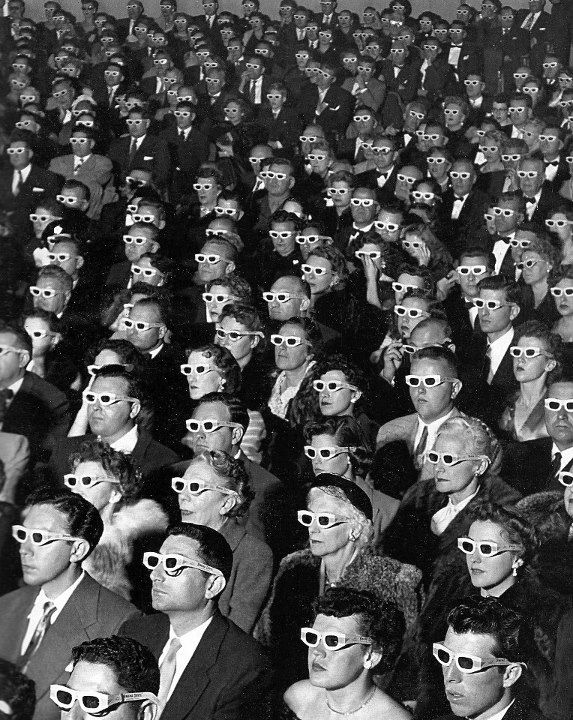
This passively polarized 3D
is basically the same technology that was used all the way
through the recent boom in 3D movies. It required two
synchronized projectors, which meant it was really only
available in the big cities in the 50s, and even in the
80s during the 3D revival. In response a single projector
system was developed where the images for the two eyes
were combined onto one piece of film using colored
filters, which meant these versions of the films could
also be run on television, with the viewers wearing
colored lenses - typically the classic red / cyan glasses.
We are going to give red /
cyan 3D a try with one of the more famous 3D films of the
1950s - Creature from the Black Lagoon - which would
inspire Guillermo del Toro several decades later to try
and remake the film from the monsters point of view,
eventually leading to "The Shape of Water" in 2017.
Unlike today when most films shown in the
theatre have been converted to 3D, this was fully shot
in 3D, including all the underwater scenes. I
should note that aside from a different 3D technology this
is not exactly the way the 3D looked in 1954 as documented
in: http://www.3dfilmarchive.com/an-in-depth-look-at-creature-from-the-black-lagoon-1 In some ways the 3D is
better, as there is no film jitter and vertical disparity
has been reduced. In some ways its worse as the new
version pushes more of the 3D effects out of the screen
where director Jack Arnold was more cautious.
Solaris
(1972)
'Solaris'
was written in 1961 by Polish science fiction writer
Stanislaw Lem. His books were widely available and read in
the 1970s but he is less well known now. While in most
science fiction its fairly easy for humans to communicate
with aliens, Lem's books often deal with how hard this
very likely will be. Solaris has been made into two major
movies, first in the former Soviet Union in 1972 and more
recently in Hollywood in 2002. Both are fairly good
representations of the book. The 1972 film was adapted by
and directed by Andrei Tarkovsky, focusing more on the
metaphysical side of the story, and is considered to be
one of the best science fiction films ever made.
Note that you may want to pack a lunch on this one -
Solaris is two hours and 45 minutes long.
If you like Solaris, you may also want to try Tarkovsky's
'Stalker'
Jason
and the Argonauts (1963) - Ray Harryhausen Tribute
We are going to push
Solaris back a week and do a special sci-fi Friday tribute
to Ray Harryhausen.
There are few names in the movies that tell you that you
are going to see something really special - Georges
Melies, Willis O'Brien, Douglas Trumbull, the Brothers
Quay. The one person that personified the creation of
fantastic worlds and creatures in the 1950s and 1960s was
Ray Harryhausen.
We are going to take a look at one of his best films -
Jason and the Argonauts - which gave Harryhausen many
opportunities to show off his craft, for example the seven
skeletons sword fighting with three guys in this youtube
excerpt: http://www.youtube.com/watch?v=pF_Fi7x93PY
The
Twilight Zone
Rod
Serling's Twilight Zone anthology series ran on TV from
1959 to 1964, and while not a huge rating success at the
time, left an indelible mark. In its five seasons 156
episodes were made, almost all written by either Rod
Serling, Richard Matheson, or Charles Beaumont, sometimes
based off of the short stories of others. Rod Serling used
a variety of times and places in his stories allowing him
to deal with controversial issues, creating modern
parables. Richard Matheson wrote the scary stories.
Charles Beaumont wrote a little of everything.
The episodes
often came with twist endings, which were common in EC
comics of the time, and the audience was never sure if the
main characters were going to live happily every after.
Rod Serling
himself introduces the episodes, very often with cigarette
in hand, with a style that itself has become synonymous
with the series,
We are going to take a look at one of the best episodes of
the series, 'The Invaders' from 1961, written by Richard
Matheson.
There are so many great episodes that even a top ten list
hardly scratches the surface, but here is a pretty good
set if you want to look further:
- Nightmare at
20,000 Feet
- To Serve Man
- Little Girl Lost
- Its a Good Life
- Time Enough at
Last
- A Stop at
Willoughby
- The Monsters are
Due on Maple Street
- The Eye of the
Beholder
- The Hitch-Hiker
- Kick the Can
The
Outer Limits
"There
is nothing wrong with your television set. Do not
attempt to adjust the picture. We are controlling
transmission. For the next hour, sit quietly and we will
control all that you see and hear. You are about to
experience the awe and mystery which reaches from the
inner mind to � The Outer Limits."
Given that the Twilight Zone was popular, other science
fiction / fantasy anthology series appeared on US TV.
The Outer Limits started in 1963 and lasted only two
seasons. Compared to The Twilight Zone it tended more
towards science fiction, often took on a German
Expressionism / film noir visual style, and was famous
for its monsters.
We are going to take a look at what is regarded as the
best episode of the series: 'Demon with a Glass Hand'
from 1964, written by Harlan Ellison.
Soylent
Green
With
Earth Day nearly upon us it seems appropriate to show
"Soylent Green", a cautionary tale from 1973.
The Year: 2022
The Place: New York City
The Population: 40,000,000
The greenhouse effect and an ever-expanding population have
produced a very unpleasant future. Several films dealt with
similar issues in the early seventies including Logan's Run
and THX-1138. This would be Charlton Heston's second of
three films set in a dystopic future, the first was Planet
of the Apes in 1968, and the last was The Omega Man in 1975.
Soylent Green would give Heston his second Top 100 movie
quote.
and Soylent = Soy + Lentils
The Last
Starfighter
"Greetings,
Starfighter. You have been recruited by the Star
League to defend the frontier against Xur and the Ko-Dan
armada."
This film presents a very 1980s boy's fantasy - that all
that time you spend playing an arcade video game will allow
you to save the galaxy � and get the girl.
Unlike Tron, where the CG effects were limited to the world
inside the computer, here the CG from Digital Productions
represented vehicles and objects in the real world. The 27
minutes of CG effects were created on a Cray X-MP which
provided 2 CPUs and 16 Megabytes of memory for $15 million.
All of the space ships and alien worlds were created through
computer graphics - the same idea Babylon 5 would use a
decade later for the same reason - its less expensive and
less constrained than traditional model work. On average
each frame of computer graphics used 250,000 polygons at a
resolution of 5000 x 3000 pixels.
The next big step for CG in the movies would be 5 years
later in The Abyss where the computer generated water
tentacle was integrated with the actors and the sets.
Tron
50
years after Walt Disney Studios began, they found themselves
in a bit of a rut, and facing declining attendance with
their children's films such as "The Cat from Outer Space"
and "The Shaggy D.A.", so they released their first PG film
in 1979 - 'The Black Hole'. It would be the first in a
series of darker films released over the next several years
including 'The Watcher in the Woods' in 1980, the film
we will watch - 'Tron' from 1982, and 'Something Wicked This
Way Comes' from 1983.
"The Black Hole" used computer graphics for its opening
credits. Tron would have 15 minutes of computer graphics
integrated into the story, though not integrated with the
live-action footage. The CG footage was groundbreaking, but
it was not eligible for the special effects oscar because
effects were done using computers.
"Tron" was one of the first films to deal with the new Video
Arcade fad and Hacking, but was not the first film to deal
with people 'inside the computer'. "World on a Wire" from
1973 dealt with people in a computer simulation and "Welcome
to Blood City" from 1977 dealt with people in an artificial
reality. More films would deal with Video Games and Hackers
in the next few years with "War Games", "Nightmares" and
"The Last Starfighter".
'Tron' did pretty well at the box office. The arcade video
game based on the movie did better, earning more money than
the film, and kept the film in the public consciousness.
UFO
Target Earth
While
'Star Wars' is the golden child and gets talked about all
the time when visitors come by evl, there is another, one
that is only spoken of in whispers, and that is 'UFO: Target
Earth' from 1974 - evl's first collaboration with the movie
business.
A few weeks ago we watched 'Close Encounters of the Third
Kind', which is one of the best UFO movies, but there were
many more UFO movies made in the 1970s, and 'UFO Target
Earth' is typical of many of them. With a 2.1 rating on IMDB
even Mystery Science Theater 3000 didn't touch this one, but
it did get an article in American Cinematographer in July
1974.
To get into the spirit of the thing, here is a screen grab
from the film showing the special effects credits - given
your experience and available computer technology, can you
enhance this frame to see what Tom and Dan were credited
with?
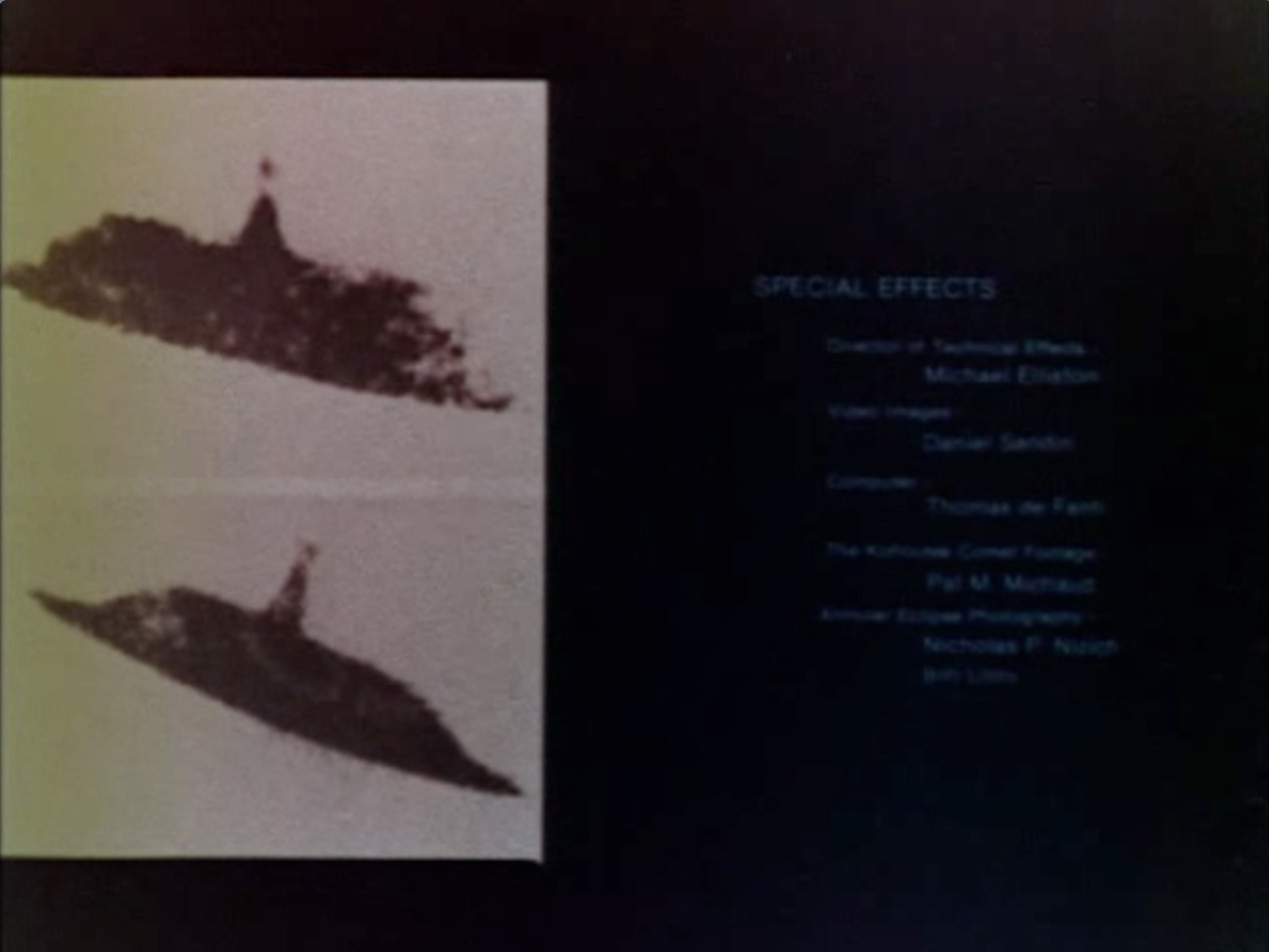
Akira
There
have been several waves of Japanese animation hitting US
Televisions - the 60s with Gigantor, Kimba, and Speed Racer,
the 70s with Star Blazers and Battle of the Planets, the 80s
with Robotech. The availability of home video in the mid
1980s encouraged a major growth in anime clubs that formed
to import and watch original movies and series from Japan
(which fortunately had the same broadcast TV format), often
through bad multi-generation copies without subtitles. Large
scale popularity of anime remained elusive in the US until
the 1990s with the release of Akira and Ghost in the Shell,
although it took Akira a few years to officially make it to
the US.
Katsuhiro Otomo directed "Akira" based on a very condensed
version of his own manga. It was one of the first Japanese
animated films to have the dialogue recorded first, as in US
productions, to get the lip sync correct, and was the most
expensive animated film produced in Japan at the time.
The
Terminator
It had
been a decade since Yul Brenner's nigh-indestructible
robotic gunslinger made an impression in 'Westworld', and 20
years since Harlan Ellison's 'Soldier' with two warriors
from the future continuing their battle in the present was
shown as part of the Outer Limits on TV, so it was time for
an update.
James Cameron had worked as a production designer for Roger
Corman, and had written and directed his first feature in
1981 - "Piranha II - the Spawning" which Cameron referred to
as "the finest flying piranha movie ever made". The
Terminator would be his second film. It would star former
Mr. Universe Arnold Schwarzenegger, who was coming off his
first film success with Conan the Barbarian.
The first Terminator film had a budget of $6 million for the
time, which was only 1/4 of the budget of the big sci-fi
films that year. It was not a major release and did not have
a major advertising campaign. It did alright at the box
office and did well on home video. At the time maybe one
major film was released per week on home video, and that was
double the year before. Films also took over a year to reach
home video, rather than a few months like today. It cost
$100 if you wanted to buy a film on VHS or Betamax, and
renting a movie cost $10, so 'The Terminator' really didn't
begin to develop a strong following until a year or two
after its release.
and if you are curious about the assembly language in the
'terminator vision', it is apple ][ code
(www.pagetable.com/?p=64)
Alien
Ridley
Scott's 1979 film "Alien" updated Mario Bava's mid 1960s
"Planet of the Vampires" where space travelers investigate a
crashed space ship on an alien planet, and the 1950's "It!
the Terror from Beyond Space" where a space crew has to
fight off an alien on their ship, from low budget 'B' movies
to a big budget film where H.R. Giger's memorable alien
designs along with Moebius's space suits and Ron Cobb's ship
designs gave the film a unique look
Perhaps still feeling the sting of not having their Star
Wars figures out in time for Christmas, Kenner produced one
of the greatest toys of the 1970s - an 18" tall 'action
figure' of the alien with movable arms, legs, and inner jaw
that totally dominated any other toys in the same room. The
fact that the film was rated R didn't seem to bother Kenner,
but it sure bothered a whole lot of parents, and the toy was
quickly removed from shelves. There was also an alien model
kit, board game, trading cards, puzzle, and bloody comic
adaption from Heavy Metal - all this in the days before
films were released onto home video, so the only way for
kids to see the film was to have their parents take them, or
to sneak in. Fortunately my parents took me to see the film
in theaters when I was 14 AND bought me the giant action
figure for Christmas. The figure still stands watch over my
other toys at home. Check out the commercial on youtube -
www.youtube.com/watch?v=uKSv85mJEmY
"Alien" would
help spawn over a decade of lower budget 'Alien'-ispired
films which only began to ebb when lower budget
'Aliens'-inspired films began to predominate.
Close
Encounters of the Third Kind
This
week we are going to start at 12:15 and take a look at
Steven Spielberg's second blockbuster hit - 1977's "Close
Encounters of the Third Kind".
While the flying saucer craze of the 50s died out pretty
quickly, sightings of UFOs continued through the 60s, and
the 70s saw a rebirth of interest in UFOs and ancient
astronauts with books and films like Erich von Daniken's
"Chariots of the Gods?".
After Watergate people were more receptive to stories of the
government covering up an alien crash in Roswell, and were
suspicious of the US Air Force's lack of findings in their
Project Blue Book investigation into UFO sightings. Of
course the public was also interested in Atlantis, the
Bermuda Triangle, pyramids, crystals, and Bigfoot in the
1970s.
At the time of the film's release stereotypical aliens were
still the belligerent 'little green men' popularized by
Marvin the Martian, the martians from the 'Mars Attacks'
trading cards, and the saucer men from 'Invasion of the
Saucer Men.' Close Encounters would help popularize the
'greys' as the stereotypical alien.
The term 'close encounters of the third kind' comes from J.
Allen Hynek's 1972 book the UFO Experience: A Scientific
Inquiry. Hynek had been part of Project Blue Book and other
investigations into UFOs and served as a consultant to the
film.
We are going to take a look at the original 1977 version.
There was also the 1980 Special Edition which should
probably be avoided, and the 1998 Collector's Edition which
is Spielberg's preferred version.
Gojira
(Godzilla)
This
week we look at that other famous giant monster from 1954
- Gojira
While "Gojira"
was inspired by and follows a similar plot as "the Beast
from 20,000 Fathoms", 'Gojira' had a particular resonance in
Japan. The opening of the film where the crew of a fishing
boat suffers radiation poisoning came less than a year after
sailors from a real Japanese fishing boat were exposed to
fallout from the US atomic testing on Bikini. Gojira's
attack on Tokyo comes less than a decade after Tokyo, Kobe,
and other Japanese cities were firebombed, and atomic
weapons were used on Hiroshima and Nagasaki. It was also
only 30 years since the Great Kanto Earthquake, typhoon, and
ensuing fire destroyed a large part of Tokyo.
The US version of
'Gojira' had the Japanese dialogue dubbed into English and
also featured new scenes shot with Raymond Burr as a
reporter in Japan at the time who would be present at the
various important events in the film through the use of body
doubles and creative editing. 'Godzilla King of the
Monsters' would be a major release in the US in 1956. It was
a success in US theaters and would go on to be regularly
shown on TV, opening the door for many Japanese science
fiction films in the US. We will watch the original Japanese
version, but the US version is pretty good to.
During the 1970s
it was rather common for late afternoon TV in the US to show
soap operas or old movies every day, and regularly twice a
year one entire week of the afternoon movie would be taken
over by 'monster week' showing the Godzilla films or the
Gamera films or other similar fare, so the audience for
these films was constantly expanding. Several of the
Godzilla films were dubbed and received a theatrical release
in the US - I remember seeing two or three in the theatre in
the 1970s, as well as Godzilla's return to theatres in the
mid 80s after a decade absence. In the 1990s the original
versions of the films were finally released onto video in
the US. For the last several years one of the main Godzilla
conventions has been held near Chicago each summer, and they
regularly take over the Pickwick theatre in Park Ridge to
show the original films during the convention.
The Godzilla film
series is one of the longest running film series, currently
at 27 films (28 if you count the US film from 1998) with
another US film to come next year. There have been three
sets of Godzilla films - 15 films from 1954-1975 when
declining box office caused the series to stop, 7 films from
1984-1995 when the series stopped to allow the US film to
proceed, and then 5 films from 1999-2004 when declining box
office again stopped the series.
Other good
Godzilla films include:
King Kong vs
Godzilla (1962), Destroy All Monsters (1968), Return of
Godzilla (1985), Godzilla, Mothra & King Ghidrah - Giant
Monster All out Attack (2001), and for its sheer exuberance
the final film, Godzilla: Final Wars (2004), is worth
checking out. Unfortunately the Godzilla film that I was in
does not make the top list.
While earlier
giant monsters like King Kong and the Rhedosuarus from 'the
Beast from 20,000 Fathoms' were created through stop motion
animation, Godzilla would begin the 'man in suit' style of
creating giant monsters. The scale of that suit and the
model cities it tramples on have changed over the years.
Godzilla was 50m tall (roughly the height of SEO on campus)
in the 50s through the 1970s. When Godzilla returned in the
1980s he was 80m tall since buildings had grown much taller.
In the 1990s he briefly became 100m tall (the height of
University Hall on campus) before returning to 80m
tall in the 2000s. For comparison a Tyrannosaurus Rex is
only 6m tall.
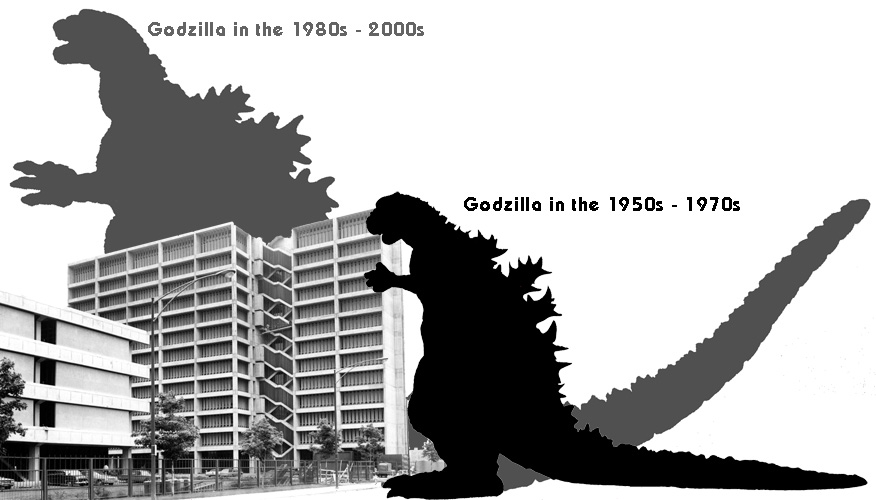
Star Trek II: The Wrath
of Khan
The
success of 'Star Wars' caused Paramount to rethink their
in-production Star Trek Phase II TV series and turn it into
"Star Trek The Motion Picture." That picture went over
budget, becoming the most expensive film made at that time,
but it did not do as well as expected critically or
commercially. It did well enough to warrant a sequel, but
that sequel would be made on a much smaller budget reusing
sets, models, props, and footage from the first film to
dramatically reduce costs, and it would be the last 'Star
Trek' film made unless it did very well. It did very very
well, was a critical and commercial success, and is still
generally considered to be the best of the 'Star Trek'
films.
It also showcases one of the major steps in the evolution of
computer graphics in feature films:
http://www.alvyray.com/Papers/CG/StarTrekII_GenesisDemo.pdf
Bride of Frankenstein
This week we are going to
take a look at one of the most famous scientists in films and
literature: Victor (Henry) Frankenstein.
The
first Frankenstein film was Thomas Edison's short 1910 film.
The most famous and influential set of films began with
1931's Frankenstein and its first (and slightly better)
sequel from 1935: 'Bride of Frankenstein'. Since that time
there have been roughly 50 films made, and lots of other
variations on the theme, but many of the most iconic moments
come from this film.
Other good
Frankenstein films include the original 1931 'Frankenstein',
Mel Brooks' 1974 parody 'Young Frankenstein', 1948's 'Bud
Abbot and Lou Costello Meet Frankenstein', and 1957's 'The
Curse of Frankenstein' where Peter Cushing took over the
role of the Baron. Mel Brooks' 'Young Frankenstein'
would re-use many of the same props to create Frankenstein's
laboratory in their film..
Them!
One
sci-fi sub-genre that we have not looked into yet is the
'Giant Monster' genre.
The 'Giant Monster' film genre had its origins in 'the Lost
World' of 1925 and 'King Kong' of 1933. The genre really
took off in 1953 with 'The Beast from 20,000 Fathoms', where
a radioactive dinosaur awoken by atomic testing causes chaos
in Manhattan. That film was based on a story by Ray Bradbury
and featured special effects by Ray Harryhausen. The
following year saw the release of two of the best giant
monster films: 'Them!' in the US and 'Godzilla' in Japan.
"Them!" would become the highest grossing film for Warner
Bros. studio that year. The following six years saw various
studios around the world producing films with giant sea
creatures (It Came from Beneath the Sea, Giant Behemoth),
arachnids (Tarantula, Earth vs the Spider, Black Scorpion),
crustaceans (Attack of the Crab Monsters), reptiles (Giant
Gila Monster), worms (Attack of the Giant Leeches), birds
(The Giant Claw), insects (The Beginning of the End, Deadly
Mantis, Monster from Green Hell), people (The Amazing
Colossal Man, Attack of the 50 ft Woman), rocks (The
Monolith Monsters), machines (Kronos), elements (The
Magnetic Monster), and aliens (The Blob, The Crawling Eye,
Caltiki the Undying Monster). Beginning in the 1960s, aside
from the continuing Godzilla and Gamera series in Japan,
very few giant monster films were released until computer
graphics in the late 90s made them practical again.
"Them!" starts out as a police procedural with the suspense
building until the reveal of the giant monsters 30 minutes
into film, though the surprise of what 'them' are was
somewhat reduced by prominently featuring giant ants on the
various movie posters.
Star Wars (original 1977
version)
its
1977 and 20th Century Fox is preparing to release their big
budget sci-fi film of the year, the post apocalyptic action
adventure 'Damnation Alley.' It did not meet expectations.
Fortunately for 20th Century Fox that year they also
released a smaller film. Get out your 'Darth Vader Lives'
T-shirts, we are going to watch 'Star Wars'.
"Star Wars" was
released slowly across the US in '77, starting in less than
40 theaters since it was not expected to do well in a jaded
and cynical post-Vietnam post-Watergate US. Within three
months it had expanded to 1000 theaters across the US. The
hype built person to person and spread organically since the
studio didn't know what they had, so people across the
country 'discovered' 'Star Wars' in the way you discover a
smaller independent film because you heard about it from a
friend and not from an advertising campaign. I was 10 when I
saw 'Star Wars' in St Louis when my family visited my
brother there, and then we came back to Detroit and there
was no evidence of its existence. Star Wars was only playing
in one theatre on the other side of town. It was an odd
experience having seen something special and then having to
wait for the wave of its existence to make it to my
neighborhood.
People also
started seeing the film multiple times in the theatre on the
first run. This was before home video so the only way to see
a film again was to go to a smaller revival theatre for a
second run, and people did that for older films. Here people
were going back again and again to a first run film. I saw
'star wars' at least four times that summer as more and more
people I knew 'discovered' the film and wanted to go see it.
Since the film
was not expected to do well there was no Star Wars
merchandise available aside from the novelization and the
very quick production of T-shirts and buttons. Six months
later at Christmas you could buy a base for the unreleased
action figures along with a card saying you will get your
figures in a few months.
"Star Wars" was
the second time that evl (then the circle graphics habitat)
worked on a film. The first was 1974's 'UFO: Target Earth',
which would be in the IMDB bottom 100 if more people had
actually seen it. There were no hints that 'Star Wars' would
be any different.
What we are going
to watch is, more or less, the way 'Star Wars' was seen in
theaters in 1977, not 'Star Wars Episode IV' from 1981, or
'Greedo shoots first Star Wars' from 1997, or 'Greedo and
Han shoot at the same time Star Wars' from 2007. Depending
on where and when you saw 'Star Wars' in '77 there were two
slightly different prints, two print sizes - 35 mm and 70
mm, and three different audio mixes (mono, stereo, 6
channel) with different content, so like 'the Hobbit' you
had a different experience depending on the theatre you saw
it in. Theatres were also a whole lot bigger then, before
the dark times, before the multiplexes, with a single
auditorium seating 500 to 1000 people with really really big
screens, so its almost impossible today to recreate the huge
impact of seeing and hearing and feeling the opening shot of
'Star Wars'.
The Andromeda Strain
(1971)
This week - The original 1971 version of "The
Andromeda Strain". Our third Michael Crichton film was based
on the 1969 novel of the same name and features one of the
most realistic depictions of scientists in a dramatic film,
also some pretty cool set design, a nice electronic music
score, and a good example of late 60's early 70s split
screen work.
An alien life form hitches a ride back to earth on a
satellite, but unlike many sci-fi films it does not rapidly
grow into a man in a suit terrorizing small town villagers,
or grow into a very large man in a suit trampling model
cities. It confines its terrorizing to the microscopic
level.
Plan 9 from Outer Space
To celebrate evl's new popcorn machine and large
amount of organic popcorn from Alan and I, sci-fi Fridays
will start up again this Friday at 12:30 in the
cyber-commons with Ed Wood's 1956 film: "Plan 9 from Outer
Space"
While not the worst movie ever made, it is certainly a very
badly made movie, but also a very very enjoyable one.
Wondrously inept in almost every conceivable way, Ed Wood's
anti-war alien invasion film would eventually inspire Tim
Burton's 1994 Film 'Ed Wood' which covers many of the 'high
points' of the production of this film.
Other entertaining bad movies in the same genre and time
period include:
- Bride of the Monster
(1955)
- Beast of Yucca Flats
(1961)
- Monster a Go-Go
(1965)
- The Creeping Terror
(1964)
- Robot Monster (1953)
Galaxy Quest
Since evl is planning an outing to Comic Con next
Friday it seems appropriate to give a bit of a primer on
that experience, and simultaneously show a very funny and
very affectionate parody of science fiction (and its fans)
in general, and Star Trek in particular. "Galaxy Quest" did
OK at the box office upon release, but the studios clearly
had no idea how to market it. It was very well received by
sci-fi fans and even won the World Science Fiction Society
Hugo that year for Best Dramatic Presentation.
The Year of the Sex
Olympics
We have taken a look at adaptions of stories by
several major science fiction writers, but one we have not
encountered so far is Nigel Kneale. He is most famously
known as the creator of the Quatermass series on TV and in
the movies. In 1954 he adapted 1984 for television and in
1968 created his own dystopian future where an overpopulated
planet is divided into the few 'high drives' who run the
government and the media, and the many passive 'low drives'
who are encouraged to watch but not do. Taking this to the
extreme is the The Live Life Show where the
television audience can watch a small group of people 24
hours a day on an island - yes, its the birth of reality
television as part of a dystopic parable.
The original broadcast was in color, and apparently in a lot
of color, but no color videotape survives, only a black and
white version, which was only found in the 1980s after the
program was presumed lost.
The Fifth Element
Luc Besson's 1997 film is one of those movies that
a director 'has always wanted to make since his/her
childhood.' These kinds of vanity projects tend to go to
extremes and this film embraces that. With Moebius (Jean
Giraud) on the production design team the film has a very
different style from the typical Hollywood future.
Flash Gordon (1980)
Alex Raymond's comic strip inspired the first
"Flash Gordon" movie serial which we watched, plus two more
in 1938 and 1940. There would be occasional comics over the
next several decades. In 1967 there was an
inexplicably odd Turkish Flash Gordon film, and in 1974 the
reasonably amusing X-rated 'Flesh Gordon'. Then came 'Star
Wars' and suddenly there was a Saturday morning cartoon in
1979 and the big budget 'Flash Gordon' movie in 1980. The
film didn't do very well, either critically, popularly, or
monetarily, but its earnestness, plus one of the most
memorable opening credits sequences in movie history, has
earned it cult status.
Max Headroom
An early cyberpunk TV series, Max Headroom started
as a made for TV movie created by Channel 4 in the UK in
1985. Two years later it was remade, almost shot for shot,
with the same lead actors as the first episode of the ABC
Max Headroom TV series, which lasted 14 episodes. We are
going to watch the US version; the original UK version is
not commercially available but can be found in the dark
corners of the internets.
Microsoft Office Labs
Videos
These videos were made in
2008 and 2011 by Microsoft
Office Labs to show how people might interact
with computers / displays / each other in 2019.
The Day the Earth Stood
Still (1951)
While this 1951 film contains all the standard
elements of a 50s B-movie alien invasion film: flying
saucer, robot, energy weapons, battle with the US military,
ultimatums, theremin music, etc, they are combined here to
create one of the best science fiction films ever made.
Future Shock and Dark
Star
"Future Shock" was a book written but Alvin
Toffler in 1970 with the core idea that society and
technology were changing too fast for people to be able to
adapt, causing a high degree of stress. He popularized the
term 'information overload.' This film version was made in
1972.
"Dark Star" was John Carpenter's first feature in 1974,
starting out as a student film and going through several
iterations of added, removed, and edited footage; we are
going to see the shorter Director's Cut. The film was
budgeted at $60,000 (or about $250,000 today) so it will be
one of the least expensive views of the future we have seen
so far. Appearing after Silent Running but before Star Wars
it would be the first film to show space travel as just a
job, and not very glamorous - a theme that would be
revisited by screenplay writer Dan O'Bannon in Alien.
A small crew is on a long term mission to destroy unstable
planets to make way for human colonization. Unfortunately
the ship and the crew members are starting to break down.
Summer Wars
in the 1950s and early 60s
two great Japanese directors, Akira Kurosawa and Yasujiro
Ozu, made very different 'Japanese' films, Kurosawa more
action/adventure, Ozu more personal. Almost all Japanese
futuristic films have followed the Kurosawa model; Summer
Wars (2009) by Mamoru Hosoda, is more of an Ozu film,
dealing with family issues and personal relationships at the
same time as the world's massive online world OZ is coming
under attack.
Global Frequency and
Denno Coil
"Global Frequency" started as a 12 issue comic
series in 2002 (now available on comixology) and then became
a TV pilot in 2005 but it didn't go on to become a TV
series.
"Global
frequency" was a cross between the X-files and the 1960's
Mission Impossible TV series. In the 1960s Jim Phelps would
be given his mission and then choose the most appropriate
agents from a binder of photographs at the beginning of each
episode (though his team pretty much always included exactly
the same people). Now with cellphones and immediate access
to information about almost anyone on the planet a much more
dynamic solution to problems becomes available.
"Denno Coil" was
a 26 episode TV series in 2007. The series is set in a
future city where augmented reality eyeglasses are
commonplace allowing an almost complete merging of real and
virtual worlds.
I, Robot
Last week we saw a future
with almost no robots ... this week we have lots and lots of
robots as 2004 looks ahead to Chicago in the year 2035
inspired by several Isaac Asimov stories with 'I, Robot'
Minority Report
This week ... Minority Report's view of 2054 from
2002. This will be our third film inspired by a Philip K
Dick story. Unlike most other films set in the future this
one is based on ideas by several experts gathered together
by Steven Spielberg including:
- Harald Belker, car
designer
- Stewart Brand, author,
scientist and co-creator of The Well on-line community
- Peter Calthorpe, the
New Urbanism evangelist
- Douglas Coupland,
author and commentator
- Neil Gershenfeld,
professor at the Media Lab at MIT
- Shaun Jones, director
of biomedical research at DARPA
- Kevin Kelly, founder
of Wired Magazine
- Jaron Lanier, one of
the inventors of virtual reality technology
- William Mitchell, dean
of the school of architecture at MIT
Ten years later
some of the predictions have come to be, others are close,
and others seem a little odd.
Avalon and the 2000s
"Avalon" was Mamoru Oshii's first film after
"Ghost in the Shell", teaming up with the same writer and
composer, but filmed in Poland with an entirely Polish cast
and help from the Polish military. If you recall our
discussion about the computer graphics going from green to
amber in 'Ghost in Shell' between its original release and
re-release, here is where Oshii first went amber. I think
'Avalon' was the first, and perhaps only film to get the
concept role playing games right.
While the 2000s
weren't that long ago and people may actually remember these
things, I figure I would complete my set of notes on the new
tech of the various decades, so here we go:
in the 2000s
GPS goes
mainstream with small receivers for cars and hikers
wireless
networking goes mainstream in the early part of the decade
and cellular by the end of the decade
video
conferencing becomes more common in the early part of the
decade as webcams or built-in cameras become more common
In the second
half of the decade social media would take off in dramatic
fashion with Facebook, twitter, etc.
text messaging
surges in popularity as smart phones are used less and less
as actual phones
in the second
half of the decade flat panel displays quickly replace
tube-based displays
RFID tags gain
popularity for tracking merchandise, people. etc.
minimally
invasive surgery becomes much more common
digital high
definition (and widescreen) television replaces analog NTSC
TV in the US
and in particular
years:
2000 PlayStation
2 released with a DVD drive, 300 MHz processor, and 36 MB of
RAM, eventually selling over 150 million consoles with over
1.5 billion games sold.
2000 first Prius
hybrid car released
2001 iPod (max 10
gig of music) became as ubiquitous as the Sony Walkman of
the 1980s or the transistor radio of the 1950s. The music
industry is slow to react.
2001 windows xp
released with minimum system requirements of (300 MHz CPU,
128 MB RAM, 800x600 monitor, 1.5 GB free hard drive space)
2002 cell phones
with cameras begin appearing
2002 Roomba is
introduced. Eventually 6 million of them will be robotically
cleaning floors in homes (and biding their time)
2003 DVRs appear,
allowing you to record TV digitally onto a hard drive
2004 Spirit and
Opportunity Rovers land on mars and drive around for many
years
2005 YouTube
begins operation
2005/6 Xbox 360
and PS3 released. PS3 incorporated a Blu-ray drive, 3.2 GHz
processor, 512 MB RAM, 80 GB hard drive, Wi-Fi.
2006 Nintendo wii
appears and introduces gestural interaction to the masses
2006 Pluto
demoted to dwarf planet (as measurement tools have increased
in accuracy, Pluto's estimated size and mass has continued
to shrink since its discovery from roughly the size of the
Earth to 1/500th that of the Earth)
2007 smart
phones, including the iPhone, change everything again. Touch
screens dramatically gain in popularity.
2008 Amazon
Kindle appears. The publishing industry is slow to react.
2009 avatar
brings 3D movies back (again) after the short 3D booms in
the 1950s and the 1980s - the basic passive stereo
projection technology however remains largely unchanged over
those 60 years.
100 years in 100 Minutes
Voyage to the Moon - French filmmaker Georges
M�li�s short 14 minute film from 1902 is considered the
first science fiction film. We will take a look at the newly
restored color version which was colored by hand 110 years
ago.
Flash Gordon episode 13 Rocketing to Earth - Back in the
fall we watched the first four episodes of the Flash Gordon
serial. Now we will watch the final episode from 1936
Marvin the Martian appeared in several Warner Brothers
cartoons. We will take a look at a double-feature directed
by the great Chuck Jones
Duck Dodgers in the 24�th Century
(1953)
Hare-way to the Stars (1958)
Red Dwarf - Back to Reality
This British TV series began in 1988 and
this episode from season 5 aired in 1992. The series follows
the adventures of Dave Lister, the last living human, his
hologramatic former room-mate, a humanoid who evolved from
the descendants of Dave's cat, and a mechanoid, three
million years in the future
Futurama - Space Pilot 3000
Matt Groening's TV series began in 1999
with this episode where delivery boy Phillip Fry gets
cryogenically frozen in the year 1999 and wakes up in New
New York in the year 2999
Ghost in the Shell
(1995)
"Ghost in the Shell" was directed by Mamoru Oshii
(who directed lots of great animated and live action TV
shows and films like Urusei Yatsura, Angel's Egg, Patlabor,
Avalon) and based on on comics by Masamune Shirow (who's
stories revolve around the integration of humans and
technology in the near future) with music by Kanji Kawai and
a screenplay by Kazunori Ito (both of which also do lot of
great films and TV series)
The year is 2029.
Cyborgs are common and people have varying levels of
prosthetic implants allowing limb or organ replacement, and
the transfer of human consciousness into a fully mechanical
body. Implants give the benefit of constant connectivity to
the net without external interfaces, but also allow hacking
into someone's body. A recurring theme is whether machines
in this inter-connected world can develop a soul or 'ghost'
in this environment.
We are going to
look at the original version of the film from 1995. There is
also version 2.0 (not to be confused with Ghost in the Shell
2, the sequel, or Ghost in the Shell - Standalone Complex,
the TV series that followed). Ghost in the Shell 2.0 was
released in 2008 and added more computer graphics, changed
the film's color pallet, and featured a new impressive sound
mix. All of the various incarnations of Ghost in the Shell
are worth reading / watching.
Demolition Man
1993's "Demolition Man" looks ahead to a
dystopic Los Angeles in 1996 and then to the Joy Joy future
of 2032.
Total Recall (1990)
We are up to 1990s and a few years away from the internet
changing everything.
tech
in the 80s:
atm machines become commonplace - no more talking to a human
at a bank when you need to get cash
1990 hubble space telescope launched to take pictures from
above the atmosphere, and we see a lot more colour in the
sky than ever before
1990 human genome project begins and is completed 13 years
later
1993 - multi-platform mosaic web browser is released
replacing gopher, ftp, and beginning the move from a small
text based internet community to a page layout graphical one
for the world. Within a couple years Netscape and Internet
Explorer would appear based on ideas and/or code from
mosaic. By the end of the 90s isolated online communities
like America On-Line (AOL) and Compuserve are left behind
similarly email becomes widespread two decades after the
first email was sent with services like Hotmail providing
email access through the web. By the end of the 1990s there
were over 550 million email addresses worldwide (330 million
in the US) and in the US 2/3rds of workplaces and 1/4 of
homes had email
1993 doom released and the pattern of the first person
shooter are set down.
1993 apple newton released as the first serious PDA. It
fails but in 1996 the palm pilot appears and succeeds
1994 and 1995 - visible human datasets released
1994 amazon starts selling books on the web (and eventually
a whole lot more) - no more need to talk to a human to buy a
book
1995 toy story premiers and theatrical animation is dragged
in to the computer graphics age
1997 dvds begin to replace VHS and laserdiscs for home video
1997 sojourner rover starts driving around mars
1997 netflix founded - no more need to talk to a human to
rent a video
1998 construction of International Space Station begins
digital still cameras start becoming popular. By the late
1990s these cameras would have 1-megapixel resolution (no
more talking to a person to get your pictures developed a
few days later)
cell phone (just phones, not smart phones) usage would go
from 5 million in 1990 to 100 million by 2000 (and 300
million in 2010)
fueled by the internet boom pc ownership jumps from 55
million PCs in the US in 1990 to 140 million by 1999
In the 1990s we carried around lots of devices, none of
which connected to the internet - digital cameras, PDAs for
our appointments and quick notes, portable game players. and
cell phones to talk to people
in the mid 1990s PCs had:
- single CPU at
50-100mhz
- 8 MB ram
- 512 MB hard drives
- 800 x 600 pixel
monitors
and with that context - Total Recall - 1990
Ten years after Blade Runner we get a second big budget film
based on a Philip K Dick story. This time Arnold
Schwarzenegger stars and Paul Verhoeven directs (right after
his success with another Robocop).
Viewtron, Knowledge
Navigator, 'You Will', and Star Trek the Next Generation
1983 - AT&T's
Viewtron
What would the internet have been like in 1983 using
analogue phone lines to transmit data and your TV as the
display? While almost everything we have shown has been a
guess about the future, this was real, although almost
no-one had access to it and it was not able to expand beyond
a couple markets. It would take the internet, personal
computers, and web browsers to provide a platform for these
same ideas to flourish.
http://www.youtube.com/watch?v=o6DVBPmo4Co
1988 - apple's Knowledge
Navigator
We come to 1988 and another look 25 years into the future
with apple's knowledge navigator concept video. Steve
jobs was kicked out of apple in 1985 and would not be back
for another 12 years but in the interim apple would still be
innovating. This is a concept video of how a professor in
the far off year of 2011 would be interacting with
information and other people.
http://www.youtube.com/watch?v=QRH8eimU_20
1993 - AT&T's "You Will"
series of commercials
In 1993-1994 at&T created the series of 'You
will' commercials directed by David Fincher (who would go on
to direct Fight Club, Zodiac, etc) with narration by Tom
Selleck (ask your parents). Most of the 'marvels of the
future' depicted in these commercials are now commonplace,
though not quite the way imagined.
http://www.youtube.com/watch?v=5MnQ8EkwXJ0
Star Trek the Next Generation
In the mid 1970s Star Trek was set to return to TV screens
as 'Star Trek Phase 2'. The success of Star Wars quickly
converted a second TV series into a theatrical film series.
With the success of the films there was interest in another
TV series with a new cast. Gene Roddenberry would set the
Next Generation 100 years later than his original series
with updated production design and technology. The new
Enterprise would be equipped with ubiquitous large touch
screen displays and tablet computers, and the Holodeck from
the 70s animated series bringing Ivan Sutherland's Ultimate
Display into regular fictional use.
Back to the Future Part
II
The first third of the second "Back to the Future"
movie looks at 2015 from 1989 (again, 25 years ahead),
including 2015 looking backwards in the 'cafe 80s'. Writers
Robert Zemeckis, Bob Gale, and Production Designer Rick
Carter created a future where things have gotten bigger,
smaller, more colorful, more convenient, and are hovering a
whole lot more, but rather than being utopic or dystopic,
this future looks more like an amusingly realistic
progression from the present (err ... the past ...
when it was the present)
Mobile Suit Gundam -
Char's Counterattack
Mobile Suit Gundam first appeared on Japanese TV
in 1979. Throughout its 13 sequels, reboots, and
re-imaginings, the 'giant robots' are not one of a kind
things built by a mad scientist and piloted by whatever
young people happen to be around when they get turned on,
but are more like mass produced tanks/airplanes that are
piloted by professionals. Instead of alien invasions, the
stories focus on future wars fought in inner near solar
system between groups of humans with different goals and
political ideologies where there are 'good guys' and 'bad
guys' on both sides of the conflict. Pretty much anyone
could die at any time, and the last few episodes of each
series tend to get very very bloody.
The central conflicts in the Gundam universe tend to be
between those who grew up on Earth and those who grew up in
the many O'Neill space colonies, or Sides, near the Earth
who want more independence. A secondary conflict exists
between the Newtypes and Oldtypes. Newtypes are slightly
evolved humans who are somewhat psychic and are much better
at controlling mobile suits than 'normal' humans.
While we usually start near the beginning of a TV series,
here we are going to show the first original Gundam
theatrical film from 1988, the one that ended the first set
of TV series, as the hero and (very cool) villain from the
first Gundam TV series finally settle things. All but a
handful of the characters of this movie are new (see note
above above the how the TV series tend to end) and it was
designed to be somewhat accessible to general audiences.
The 43 episodes of the original Gundam TV series were
condensed into three theatrical films which are worth
seeing. If you are looking more a more modern show, Gundam
Seed from the early 2000s was also quite well done. The
various series also live on through the multitudes of model
kits of every Gundam variant. Look in any Japanese toy shop
and you will still find Ultraman figures, Totoro, and Gundam
model kits.
Blade Runner
Ridley Scott + Syd Mead + Philip K. Dick +
Vangelis = one of the most memorable futures of the past. A
commercial failure at the time, its appearance alongside the
birth of cyberpunk in written form would have a much
stronger influence in later years.
While I would
normally prefer to show the version of the film that was
shown in theaters in 1982, the 2007 'Final Cut' fixes a few
errors in the original and is closer to the original intent
for the film without introducing any 'Greedo shoots first'
annoyances.
Looker
and now we get to the 1980s
and back to another film written and directed by Michael
Crichton
"Looker" was the first film to use shaded computer
graphics for a very short sequence, and also the first film
to deal seriously with the concept of computer generated
virtual humans, scanning human beings to create those
characters, and combining virtual and computer generated
elements in real time - things that are common today, though
the details are a little different when seen from 1981.
tech in the 80s:
There were
several wonderful new things that could be done with your
phone in the 1980s that still exist today:
- fax machines
- answering
machines
The phone system
also enabled bulletin board systems (BBSs), a DIY internet
at 300 or 1200 bits per second run from individual PCs
scattered around the country/world. They supported text only
conversations, and often only one person could log in at a
time, but you could set one up in your basement with an
extra phone line and a dedicated computer, and they would
lead to more general services like compuserve and America
online, and eventually to all of the online conversations
today.
While phones were
still hard-wired you could carry around a small battery
powered pager/beeper to get notified that you should find a
phone and call someone - kind of like an 1980s version of
twitter
Television
changed from over the air to cable, taking people from 10
local channels to 100 national channels, 24 hour channels,
and the first channels dedicated to particular topics.
The mid 80s would
see the first major resurgence of 3D cinema, using the same
passive polarization technology of the first 3D boom in the
1950, which is the same passive polarization technology of
recent years. Red/Blue glasses were used to try and bring
the 3D experience to TV screens but without a big hit like
Avatar or computer generated animated films to keep the
trend going, the resurgence was very short lived.
In the early
1980s you could carry around the music you wanted to hear on
a Sony walkman with cassette tapes.You could also watch
music videos all day on MTV as rock stars were suddenly
expected to have hit videos as well as hit songs. By the end
of the 80s you could carry a GameBoy around with you as the
first popular portable video game system.
Personal
computers were becoming more common and display resolution
was up to 640 x 480. Computers would gain mice and graphical
user interfaces. Storage would move from 5&1/4" floppy
discs to 3&1/2" discs (looking a lot like what they used
in star trek in the 60s) with 800kB of storage per side.
Laser printers would replace dot matrix printers allowing
people to make professional looking printed documents.
CDs would replace
LPs for music distribution and would dominate for a quarter
of a century. CDROMs would begin to replace floppy discs for
software distribution by the end of the decade and would
have more storage than a typical hard disc drive until the
mid 1990s.
Laser discs would
appear for home video distribution with double the
resolution of VHS tapes, and while they never replaced VHS,
they would innovate by giving viewers films in their
original aspect ratio, audio commentaries, and special
features that have become standard on DVDs.
1981 saw the
first space shuttle flight. The two Voyagers would continue
to give us images of the outer planets throughout the decade
- 1979 Jupiter, 1980 Saturn, 1986 Uranus, 1989 Neptune, US
and Soviet missions would give us views of Venus, while a
European mission would get close to Halley's comet
Space 1999 and The Six
Million Dollar Man
Back to American and
British TV this week ...
The Six Million Dollar Man (1974)
Steve Austin, the last man to walk on the moon,
is seriously injured during a NASA test flight. As the
opening credits briefly explain, he is rebuilt as a cyborg,
or 'bionic' man, at a cost of six million dollars (25
million in inflation adjusted dollars today). While
initially working as a secret agent and traveling around the
world, the series producers quickly determined that they
needed things that were difficult for Steve to fight, so
four episodes into the series we get the first robot
adversary, which would lead to several more encounters with
robotic impostors, aliens, and Bigfoot, as the
science-fiction elements would start to dominate the five
years the series was on TV. This particular episode would
start an incredible number of slow motion fights on the
playground.
Space 1999 (1975)
We last left Gerry and Silvia Anderson when they
were producing Thunderbirds. Three supermarionation TV
series, and two live TV action series later brings us to the
most expensive TV series made to that time - Space 1999. Set
on the moon 25 years in the future, the look of the series
was obviously influenced by 2001, though the production
designers would create several memorable designs of their
own. While the computer interfaces are pretty primitive with
lots of buttons and few displays, the characters routinely
carry a 1970s vision of a PDA/cellphone.
1999 A.D. and Westworld
(1973)
This week we are going to
show a short and then a feature.
First up is a view of the year 1999 from 1967 made
by Philco-Ford. Philco was known for making radios starting
in the 1920s and became one of the major radio manufacturers
before moving into TVs and computers. They were acquired by
Ford Motor Company in the early 1960s. This short 20 minute
documentary describes home life in the far off year of 1999.
Next up is Michael Crichton's Westworld.
Michael Crichton has written various books and
scripts about near-future technology, and has visited the
theme of an amusement park run amuck as its underlying
technology fails a couple times. This was the first. The
pace of technological change, glacial by today's standards,
was concerning people, and the widespread introduction of
computers would really begin to speed up that pace of
change. Westworld has the first digitally processed imagery
in a motion picture, as we enter the time of computer
graphics in film. It would take 5 days of computer time to
produce 2 and a half minutes of final footage.
With regards to
the space program, after the near cancellation of apollo 16
and 17 and the real cancellations of apollo 18-20, the US
stopped going to the moon in 1972, but we did have Skylab in
orbit from 1973 until its flaming wreckage crashed into
australia in 1979 and the Soviet Union had their series of
Salyut Space Stations. Robotic space exploration really
began to flourish as the Soviet Venera 9 probe sent back
photos from Venus in 1975, the two Viking landers
successfully arrived on Mars in 1976, and the two Voyager
probes were launched on their grand tour of the gas giants
in 1977.
With regards to electronics:
- 1971 first mass produced pocket calculator (no more slide
rules)
- 1972 pong released as arcade game
- 1974 home version of pong
- 1975 mass produced LED digital watches (I had one - you had
to push a button for it to show you the time)
- 1977 first mass produced Video Cassette
Recorders (VCRs). Note that at this point Hollywood was
against putting movies on tape so you still could only catch
old movies on TV (edited and in the wrong aspect ratio) or
in 2nd run theaters (with so-so projectors, and breaks in
the films), or you had the read the novelization of the
movie, or read the comic book version.You could record TV on
a VCR but it cost $15 to by a blank tape to record 2 hours.
- 1977 apple ][
and the TRS-80 were introduced as the first successful
personal computers. Their programs were initially loaded
from cassette tape, or typed in by hand each time you wanted
to run them. A year later disk drives with 5&1/4 discs
would appear with 120kB storage per side.
Silent Running
"Silent Running" was released in march 1972. In
the four years since 2001 was released we had landed on the
moon four times, with two more missions to come in 1972. The
shiny 2001 future is starting the turn to a darker vision as
people are asking what we are giving up in exchange for that
bright technological world. Social and environmental issues
that had been simmering for a long time were now more in the
public consciousness. New directors were being given a
chance to try to appeal to that social consciousness in
youth that wanted heroes that would fight, or ignore the
system. Silent Running would become 2001's hippie
counter-cultural sibling.
Other good
dystopian films of the time include: Soylent Green,
Rollerball, Logan's Run, THX-1138, Sleeper, Death Race 2000,
A Boy and his Dog.
Most robots in
science fiction films to this time looked like people, with
some exceptions like the very mechanical robots in Gog or
the robot from Silent Star. Silent Running would show a
different kind of robot - looking mechanical, but with the
personality of a humanoid robot.
Hey look! this
film has a rating. Its rated G for General Audiences. The
Motion Picture Code that ensured all films shown in the US
were 'suitable' was gone in late 1968, and in its place was
the MPAA rating system. At the time the ratings were
G(general), M(mature), R(restricted). The M rating would
soon be renamed GP and then renamed again as PG, and those
ratings would stand until the Temple of Doom ripped the
heart out of the rating system in 1984.
2001: a space odyssey
2001 was released in April 1968. At a time when
traveling to the moon (we hadn't landed on it yet) was
exciting and dangerous, Stanley Kubrick would look 30 years
into the future and show space travel as routine, yet still
giving us a view of the near future that Walt Disney or
Wernher Von Braun would have approved of. 2001 would
probably be the high point of the bright beautiful future,
aside from one or two orbiting weapons platforms, some
mutual US / Soviet distrust, and a couple bugs in the
computer programming.
Most computers in
movies and TV were good at crunching numbers and giving
answers with their inputs moving from cards and dials and
buttons to voice. We began seeing more display screens at
the end of the 60s, but in the context of the stories they
were almost always used to show images from cameras rather
than computer generated information. In the late 60s some
sci-fi computers moved beyond being a useful tool and
started thinking and reasoning and making decisions on their
own, and not always in the best interest of the humans
around them. Captain Kirk would talk at least three
computers to death in Star Trek, but couldn't run his ship
without them - a topic Kirk and Spock would regularly
revisit.
In real life
there was concern about computers replacing people in jobs
as computation and automation do what mechanization had done
before, and with the increasing 'intelligence' of computers,
people were forced to think about what makes us 'human.'
Ultraman and Giant Robo
and Gatchaman
Given the success of the
Godzilla films, lots of very big monsters would start
attacking Japan in the 60s and early 70s. This led to multiple
ways to fight them, some of which we will explore this week.
Ultraman - Shoot the Invader
(66)
Eiji Tsubaraya had been in charge of the special
effects for all the Toho Studios science fiction films
including the Godzila series. In 1966 he created a black and
white TV series called Ultra Q with a small group
investigating strange phenomena. The sequel to that series
would be in color and was called 'Ultraman'. 45 years and 18
TV series later the concept is still going strong. This
series takes place 25 years in the future in the 1990s.
Ultraman is a 40 meter tall alien from 'nebula m78' who
accidentally kills Hayata, a member of the Science Special
Search Party, who are tasked with investigating strange
phenomena like in Ultra Q, except with the advantage of an
international organization, a spiffy headquarters, jet
aircraft, and energy weapons. Ultraman brings Hayata back to
life and gives him the power to call / transform into
Ultraman when needed, which is about once per episode. This
episode is the second of the series and introduces what will
become Ultraman's main recurring enemy - the Baltans.
Giant Robot - Dracolon -
The Great Sea Monster (67)
The first giant
robot that started it all was Tetsujin 28 (Gigantor in the
US) created by Mitsuteru Yokoyama in comic form in 1956 and
then in TV form in 1963. Tokoyama would then create Giant
Robo (Johnny Sokko and His Flying Robot in the US). His
giant robots were controlled by a person on the ground,
typically a young boy, and featured pretty outrageous
villains and a high amount of violence. This is the first
episode of Johnny Sokko and his Flying Robot.
Science Ninja Team Gatchaman -
Gatchaman VS Turtle King (72)
Gatchaman would
be the first team focused sci-fi series in Japan, drawing on
the success of the modern ninja team TV series Ninja Butai
Gekko and spawning many more multi-coloured animated and
live action teams. The bad guys, Galactor, are trying to
invade earth using giant mechanical monsters operated by
their soldiers. The good guys, the International Science
Organization, do not have their own giant robot, or help
from friendly giant aliens, so they must typically
infiltrate the alien monster or base and destroy the
machinery, usually while killing large numbers of the bad
guys. This is the first episode of Gatchaman.
The Giant Robot
genre would continue to evolve for several more years. In
1972 Go Nagai, creator of Devilman, Cutey Honey, and the
list goes on and on, would create his own giant robot -
Mazinger Z - which was the first giant robot piloted from
the inside by a pilot in the head of the robot, and in 1974
he created Getter Robo - the first giant robot that would be
formed from several components in different combinations.
The Giant Robot genre would fade by the end of the 1970s
when it was replaced by a more realistic depiction of robots
and their pilots in Mobile Suit Gundam, which we will get to
in a few weeks.
The Prisoner and Star
Trek
The Prisoner - Patrick McGoohan had a
successful three season run in the mid 60s on TV in Britain
(Danger Man) and the US (renamed as Secret Agent) as a
secret agent that used his brain more than his gun. When the
studio asked for a follow on series he pitched a series that
asked what would happen to a secret agent if he quit.
Instead of a straight action/adventure series he gave them a
very personal 17 episode series that dealt with issues of
the place of the individual in society.
Star Trek - Its the 22nd
or 23rd century (the mythology was still evolving at this
point), human beings can move between star systems in days,
there are lots of alien races out there (who mostly look
like humans), and there is a lot of casual use of advanced
technology, especially communications technology, computers,
and sensors. 'Obsession' is not one of the best episodes,
but it is a pretty representative one, and features a good
variety of the technology used in the series. Star Trek
lasted 3 seasons (79 episodes) and then went onto a
successful run in syndication which spawned a Saturday
morning animated series and then production on a second TV
series which, thanks to Star Wars, would lead to its rebirth
in movie theaters in the late 70s.
Both series would often deal with social issues in a
science-fiction setting, where the technology acted a
backdrop, allowing the writers to deal with topical issues
in a novel setting, while still allowing the characters to
have fist-fights.
Other sci-fi TV from the 60s that are worth checking out
include anthology series such as 'the Outer Limits' (in
particular the episode 'demon with a glass hand') and 'the
Twilight Zone', the first season of 'Lost in Space', and
pretty much anything Nigel Kneale wrote in the UK.
Thunderbirds and EPCOT
In the 1960s the number of sci-fi TV shows
multiplied dramatically; we will spend a couple weeks
looking at a few of them.
This time will be the peak of the positive future, before
the social and ecological movements of the late 60s turned
people's attentions back to real problems in the present,
and started to color much darker views of the future.
There were a handful of producers in the US and Britain that
would shape TV science fiction in the US in the 60s and 70s
- Irwin Allen, Gerry Anderson, Gene Roddenberry, and Glen
Larson. We will start with Gerry Anderson's Thunderbirds.
Gerry Anderson would create several sci-fi tv series from
the 60s to the 00s - some in live-action and others with
marionettes. Thunderbirds is his most famous series, and ran
for 32 episodes. The series takes place in the middle of the
21st century and follows the adventures of the Tracy family
who form International Rescue and use a variety of
futuristic vehicles and technology to accomplish their
missions.
Our second feature is the Disneyland episode 'EPCOT' in
which Walt Disney gives his final filmed appearance in a
pitch to create the city of tomorrow. Walt Disney's vision
for EPCOT (Experimental Prototype Community of Tomorrow) was
that this community would be a living, evolving, testbed to
prototype communities of the future.
A few notes on the 60s in terms of personal technology:
- telephones were
cabled to the wall, but now you could push buttons 0-9
to 'dial' the number rather than using a dial to dial
each number
- transistor radios
allowed people to listen to radio broadcasts (including
music) wherever they wanted (though usually places like
the beach or the park.)
- colour photography
was now available to everyone with portable cameras.
Once you took a roll of pictures you had to take the
film roll to a drugstore or photo shop to get the
pictures developed, and they would be ready for you in a
few days or a week. These photos were often developed
into slides - which were put into slide projector
carousels (see the 'Mad Men' episode for more on this)
and then shown at home on a projection screen.
- home (silent) movie
cameras now popular. You could carry a camera with you
and shoot 3 minutes at a time and then change the
cartridge. These cameras needed a lot of light, so they
worked well outside. Inside you needed a massive light
rig, brighter than anything Lance has used. Again you
took the film into a drugstore or a photo shop and saw
the results a week later, projected at home from a movie
projector onto that same screen you used for
slides.
- cassette tape
players/recorders appeared - You could conveniently
record audio through a small hand-held microphone and
playback that audio. The tapes could hold 30 to 45
minutes per side. Music was still sold as vinyl records
(45s or LPs), but you could hold the mike up to the
speaker of your home stereo system to record it if you
wanted something portable.
and in terms of the space race, it would still be two more
years (1968) before anyone orbited the moon, but every month
or two astronauts and cosmonauts were sent up to orbit the
earth, and unmanned probes had orbited and landed on the
moon.
Forbidden Planet
This week we are back in 1956. While many 50s science
fiction films were low budget 'monster of the loose' fare
with various creatures being mutated by atomic radiation,
"Forbidden Planet" (1956) stands among a handful of 50s
sci-fi films that succeeded in being something more.
Other very good and highly recommended 50s sci-fi films
include:
Gojira
It Came from Outer Space
Invasion of the Body Snatchers
Them!
The Day the Earth Stood Still
The Thing From Another World
The Incredible Shrinking Man
'Forbidden Planet' was one of the first films that took
place completely on and around another planet in another
solar system (in this case Altair - 17 light years from
Earth). It was one of the first science fiction films filmed
in Cinemascope with stereo sound, and had the first all
electronic music score. It also introduced Robby the Robot.
The film was a clear and acknowledged influence on Gene
Roddenberry's 'Star Trek' a decade later and would supply
props to a dozen 'Twilight Zone' episodes.
Man and the Moon and
The Jetsons
At this point we've
progressed from silent films in the 20s to talkies and
serials in the 30s to colour films in the early 50s, and now
� television!
In 1946 there were only 6000 TVs in the US compared to
almost 40 million radios. By 1955 half of US homes had a TV
and by 1960 there were 50 million TV sits in the US. Most
programming was broadcast by the three national networks:
CBS, NBC, ABC (which began as radio networks) on their
affiliated local stations. Few programs were broadcast in
color until the mid 60s, though several were filmed in
color. In 1964 only 3% of TVs were color TVs. Half of US
homes would not have a color TV until 1972.
We will start with an episode of 'Disneyland' (later to
become The Wonderful World of Disney), a one hour weekly tv
anthology series with a mixture of live action, animation,
documentaries, and dramas. This episode is 'Man and the
Moon' which was aired December 28, 1955 and looks back at
the history of mans relationship with the moon and forward
to man building a space station and journeying to the moon
and mars.
The second is an episode from the 1962 cartoon series 'The
Jetsons' which takes place in the year 2062. This episode is
'Jet Screamer'. 'The Flintstones' was a very successful TV
series which ran from 1960 to 1966. If a series set in the
stone age worked, why not a series set in the future? It was
the first program broadcast in color on ABC. Unfortunately
the Jetsons only lasted one season but used animation to
create a memorable futuristic earth.
Destination Moon
In the previous weeks we
have looked at films that took place a hundred years in the
future. This week we are going to take a look at a film from
1950 that attempts to portray how man will get to the moon
using the prevailing engineering concepts of the time, 7
years before sputnik, 11 years before Gagarin orbited, and
20 years before the moon landing happened.
"Destination Moon" features artwork by Chesley Bonestell who
was THE artist illustrating the near future of spaceflight
in the 50s. It also features a screenplay co-written by
Robert Heinlein. Destination Moon won the academy award for
special effects and a Hugo (top yearly science fiction
awards) for best dramatic presentation
Things to Come
"Things to Come" features
a screenplay by H. G. Wells based on his 1933 book 'The
Shape of Things to Come' and looks at what will happen in
the next 100 years on Earth. Wells wanted his film to be
more realistic than metropolis.
This is the 92 minute version (10-15 minutes
shorter than original version) . It had a budget of 300,000
pounds (1 million dollars) in 1936 or 17 million pounds (26
million dollars) today.
Flash Gordon (1930s)
Some information on movie
serials:
Each week a theatre would show one chapter - typically
ending in a cliffhanger (sometimes literally the hero or
heroine hanging off the edge of a cliff) to bring people
back next week to see how the cliffhanger was resolved
The serial was shown along with newsreel, cartoon, A movie,
and B movie
Serials started in the silent era around 1910, ended by 1950
There were three flash gordon serials. This is the first
with 13 episodes. It was the first science fiction serial.
It was based on the Sunday flash gordon comic strip by Alex
Raymond which ran from 1934 to 1943 and is still being
reprinted (I have a full set)
The Hays motion picture code began in 1934 but not fully
enforced yet so the first Flash Gordon serial is truer to
the comics than the later two.
Adjusting for inflation Flash Gordon would cost about 8
million today for its 13 half hour episodes so its similar
to what an original series on the sci-fi channel costs to
make. It was the most expensive serial made. Most were
westerns, though several featured super heroes (Batman,
Captain America, Zorro, Captain Marvel, The Green Hornet)
� some things don't change
There is a lot of talk of 'rays' in Flash Gordon, especially
by Dr Zarkov - they were the techno-babble buzzword of
choice at the time
Metropolis (1927)
- silent films had a
score that was performed live in the theater, commonly by a
small symphony in a large theatre or an organist in a
smaller theater, which was synchronized to the action on
screen - in the case of Metropolis this is the original
Gottfried Huppertz score from 1926 performed in 2010 by the
Berlin Radio Symphony Orchestra.
- silent films often had tinted scenes e.g. for scenes
taking place at night that section of the film would be
entirely blue tinted, scenes in a forest would be green,
scenes inside would be yellow, scenes with a fire would be
red. Fritz Lang did not like tinting and didn't use it.
- Lang also used many fewer textual intertitles than was
common at the time
- Metropolis' budget was equivalent to 200 million dollars
today.
- at the time Metropolis was made, in 1926, sound films were
starting to appear, similar to the current 3D boom in many
ways. Don Juan, the year before, had music and sound effects
recorded live on set and synced to the movie. The Jazz
Singer, which premiered less than a year after Metropolis,
was the first feature length film with (a bit of) spoken
dialogue recorded along with the film. The Jazz Singer made
a lot of money and the days of the silent movie were about
to end.
- in the US the Hays Motion Picture Production Code wouldn't
be imposed for 8 more years, so in 1927 you could pretty
much do whatever you wanted on screen
- when I first saw Metropolis in the theater in the late
1970s it was only about 90 minutes long, with the film
having been edited rather brutally after its premiere. Bit
by bit the other missing 90 minutes of the film have mostly
been recovered and re-integrated, though there are still a
few scenes (about 8 minutes) missing. The quality of this
print varies depending on what source it was taken from.
at the time in the 20s:
- skyscrapers being
rapidly built, and growing taller and taller
- current design
styles were modern / art deco / bauhaus
- in the Weimar
Republic in Germany a stable situation after years of
inflation and reparations from 'the war to end all wars'
- Hollywood pushing US
culture (including jazz) abroad
- women had gained the
right to vote throughout the US only 7 years earlier
in the US (with a population of 115 million people)
technology becoming a commodity �
- radio stations just
starting to appear - radios in the home became very
popular very quickly
- number of movie
theaters rapidly increasing
- cars selling well
with 23 million by 1927 and a new focus on creating
better roads for them to drive on
- 15 million
telephones in homes and businesses
- cities had
electricity and indoor plumbing - rural areas did not
popular science fiction authors of the time ...
- Edgar Rice Burroughs
- H. G. Wells
- Jules Verne (from
1870s and 1880s)
- magazines like
amazing stories start in 20s
If you were intrigued
by today's feature and like to try some other silent films
then I would recommend:
- Robert Wiene -
Cabinet of Dr Caligari
- Buster Keaton - The
General, Steamboat Bill Jr
- F. W. Murnau -
Nosferatu, Sunrise
- Charlie Chaplin -
Gold Rush, Modern Times
- Sergei Eisenstein -
Battleship Potemkin

More to Explore
Here are some
alternatives for further exploration. If we have more
time, or if we decide to do this again, these would be in
the next set. Note that this is not mean to be a list of
'the best' (though some are) but more about different
views of the future, the future of technology, interfaces,
relationships, science and scientists.
- 1910s
1920s
- Frau im Mond
(Germany)
- Aelita (Russia)
- The Mysterious
Island
- 1930s
- Just Imagine
- Doctor X
- Modern Times
- 1940s
- Krakatit
(Czechoslovakia)
- 1950s
- The Blob
- The Sky Beckons
(Russia)
- Radar Men from the
Moon serial
- Rocky Jones Space
Ranger (TV
Series)
- It the Terror from
Beyond Space
- Incredible
Shrinking Man
- Men into Space (TV Series)
- 1960s
- The Time Machine
- Aniara (Sweden)
- Battle in Outer
Space (Japan)
- Planet of Vampires
(Italy)
- Ikari XB 1 (Czechoslovakia)
- Johnny Quest (TV Series)
- Lost in Space (TV Series)
- Green Slime
(Italy / Japan)
- Ship of Monsters
(Mexico)
- UFO TV Series (UK)
- Moon Zero Two (UK)
- 1970s
- Probe
- Adventures of
Pirx TV Series (Hungary)
- World on a Wire
(Germany)
- A Boy and His Dog
- Logan's Run
- Demon Seed
- Doctor Who
(classic 60s-80s TV, but if just one: Genesis of the
Daleks)
- Doomwatch (TV
series)
- Death Race 2000
- Space is the
Place
- Space Battleship
Yamato TV Series (Japan)
- 1980s
- 1984
- Dune
- The Hitchhiker's
Guide to the Galaxy (TV series)
- Star Wars V: The
Empire Strikes Back
- Road Warrior
- Aliens
- 2010
- Runaway
- Wings of
Honneamise (Japan)
- Transformers -
the Movie
- Alien Nation
(movie and TV series)
- Patlabor (TV
series and/or Movies, Japan)
- My Youth in
Arcadia (Japan)
- Brainstorm
- 1990s
- Jurassic Park
- Neon Genesis
Evangelion (TV Series, Japan)
- Terminator 2
- 12 Monkeys
- Until the End of
the World (300 min version)
- Babylon 5 TV
Series
- 2000s
- Sunshine
- Serenity
- Primer
- Paprika (Japan)
- Equilibrium
- Avatar
- Moon
- Sky Captain and the World of Tomorrow
- Tekkoki Mikazuki (mini-series, Japan)
- 2010s
- Interstellar
- Tron Legacy
- Big Hero 6
- Pacific Rim
- Steins;Gate (TV Series, Japan)
- The Martian
- Arrival
- Gravity
- Space Battleship Yamato 2199 (TV Series, Japan)
- Black Mirror (TV Series)
- The Expanse (TV Series)
- Rick and Morty (TV Series)
- Memories of the Alhambra (TV series, Korea)
- 2020s
- Omniscient (TV series, Brazil)
- Orbital Children (TV series, Japan)
- Upload (TV series)
- For all Mankind (TV series)
- My Holo Love (TV series, Korea)
Note
that this is not the first time that we have showed and
discussed movies in evl. Back from 1995 through 1997 in the
early evenings, usually starting at 7pm, we had 'Movie
Tuesday' which showed a wide variety of films using evl's
projection based technology, and occasionally we went on the
road to some of the local film group showings. 'Movie
Tuesday' briefly morphed into 'movie Tuesday Wednesday' when
we needed to change the day. Some of the things we showed
back then were:
- "clueless"
- "the Vanishing"
(original dutch/french version)
- "a Chinese Ghost
Story"
- "Plan 9 from Outer
Space"
- "Wings of Desire"
- "la Double Vie De
Veronique"
- "Matador"
- "Amateur"
- a night of 'short'
stop-motion animated films
- "Bringing Up Baby"
- "the Cook, the
Thief, His Wife & Her Lover"
- "that Obscure Object
of Desire"
- "the Princess Bride"
- "Bitter Moon"
- "Belle Epoque"
- "Heathers"
- "the Trial"
- ROADTRIP to see
"Flirt"
- "Rosencrantz and
Guilderstern are Dead"
- 2 of Mike Jittlov's
short films and "Tong Fong Sam Hop (the Heroic Trio)"
- "Stalker"
- "Muriel's Wedding"
- "Short Cuts"
- "the mascot" from
1933 and the episode "Free for All" from 'The Prisoner'
